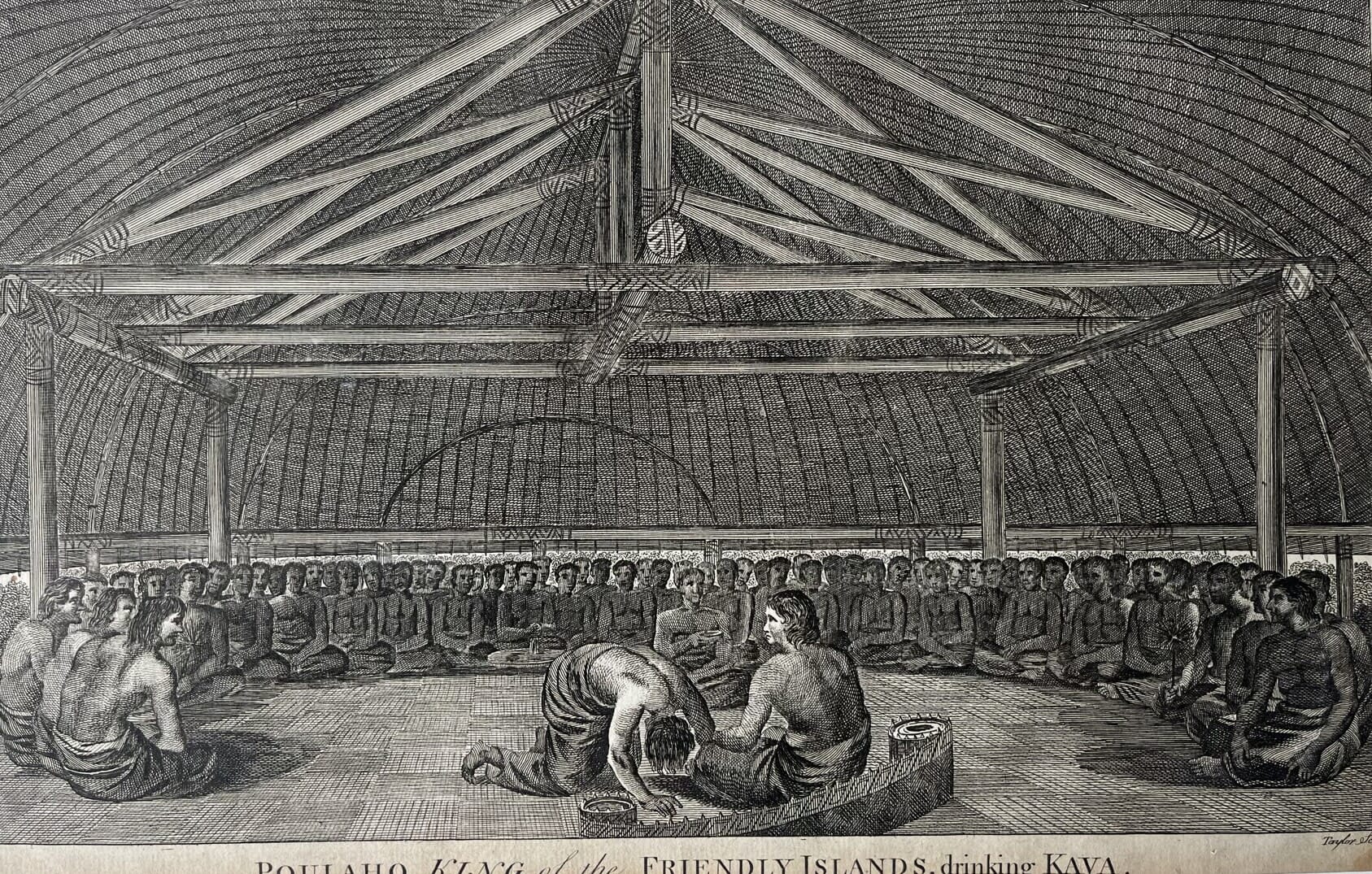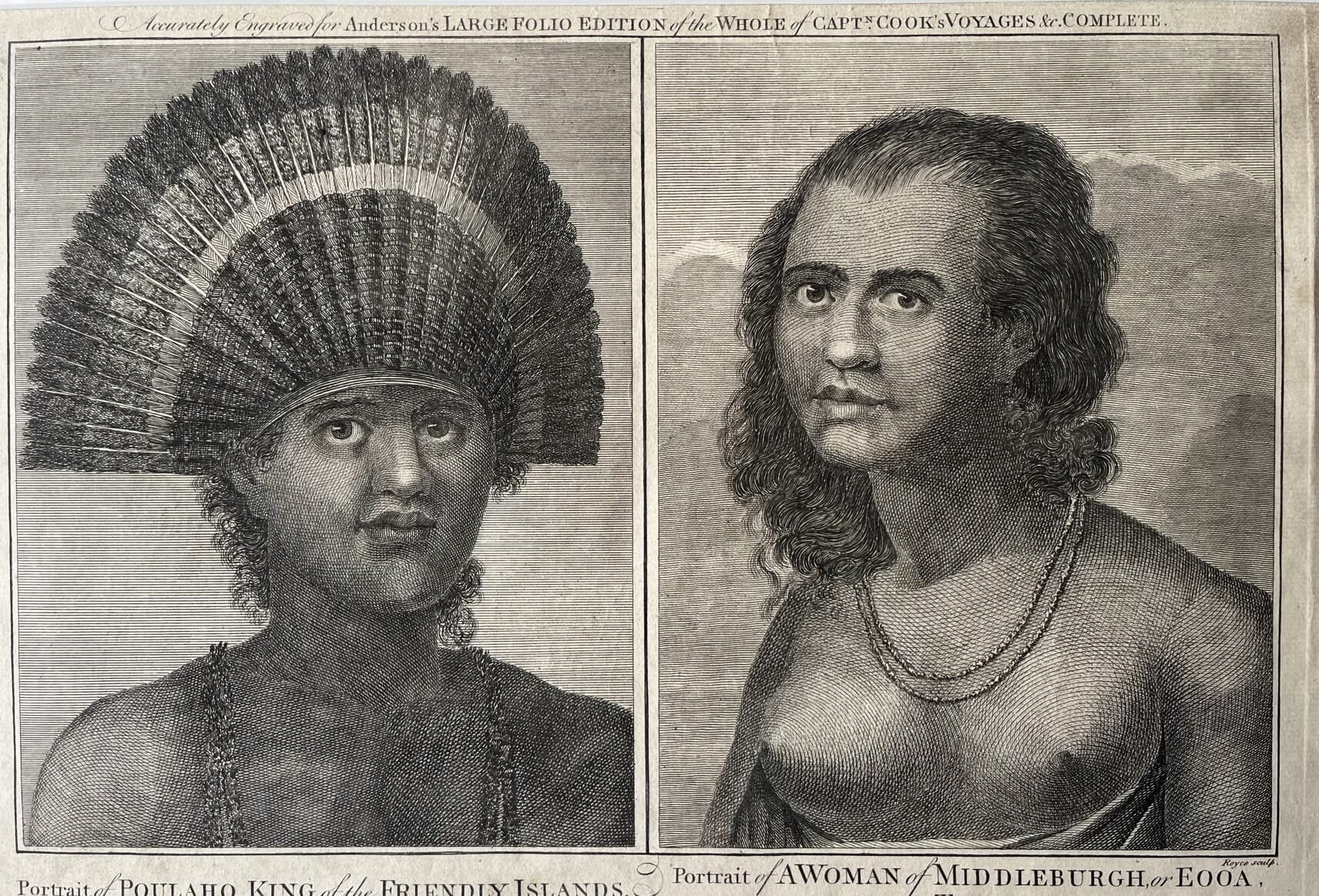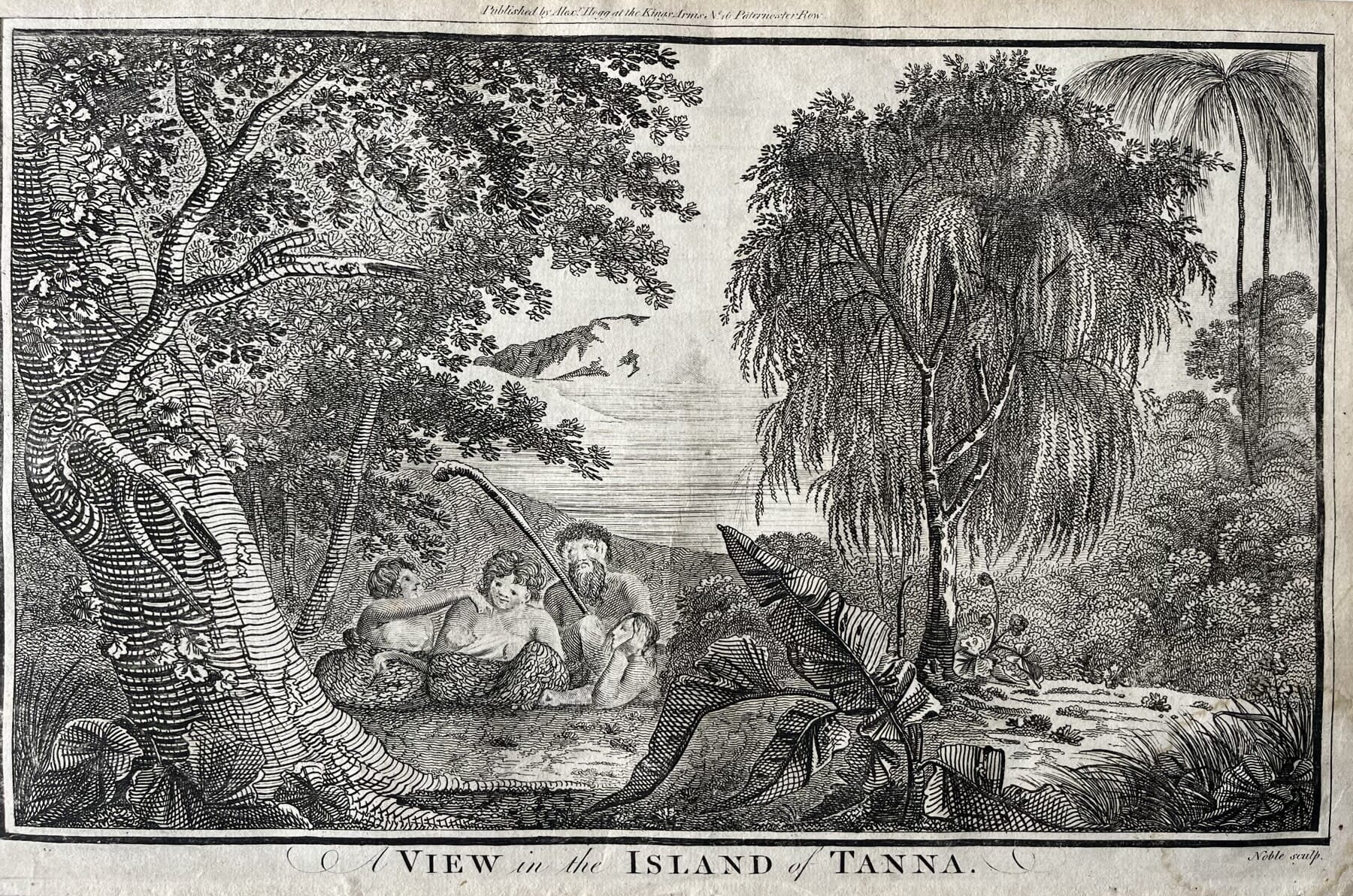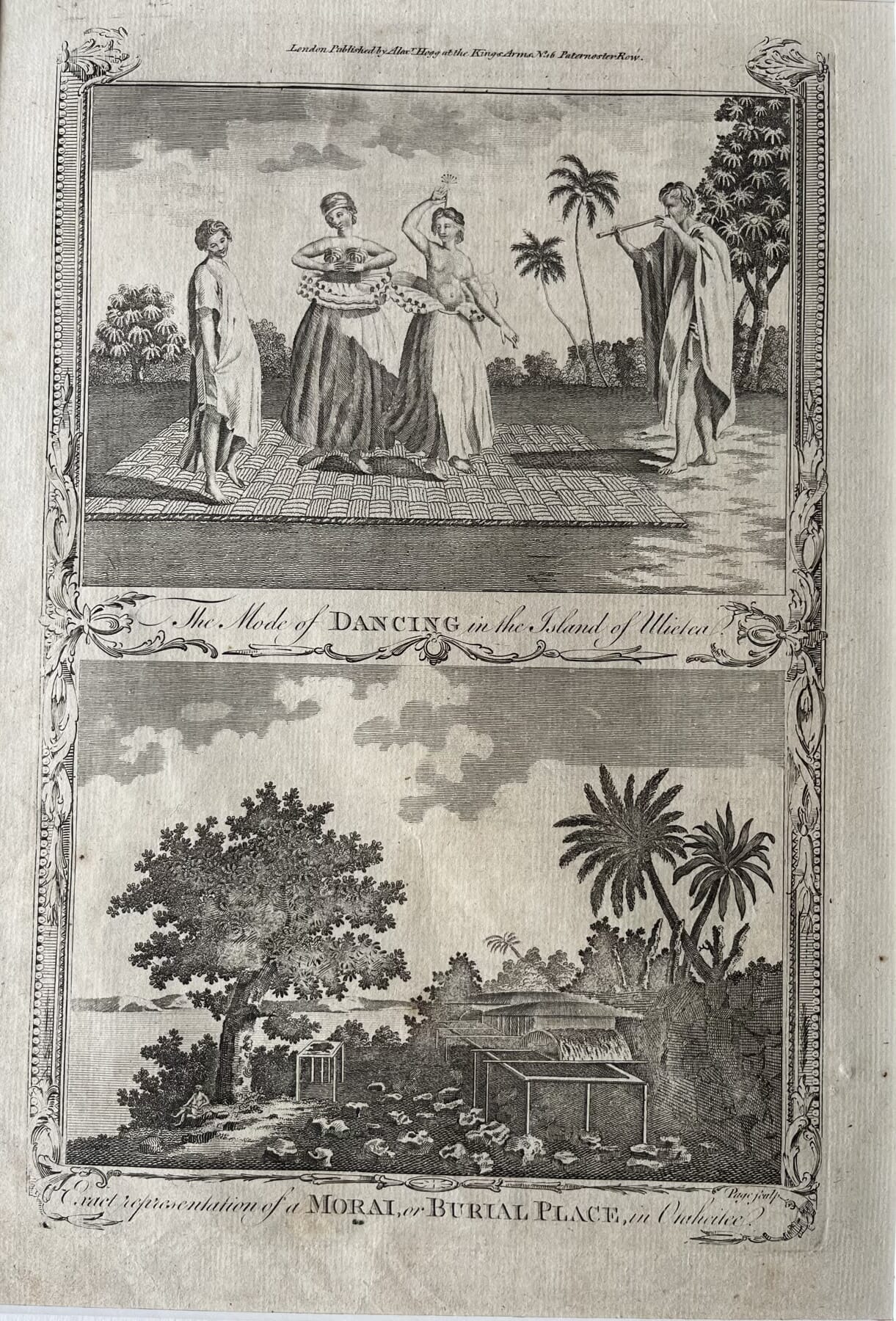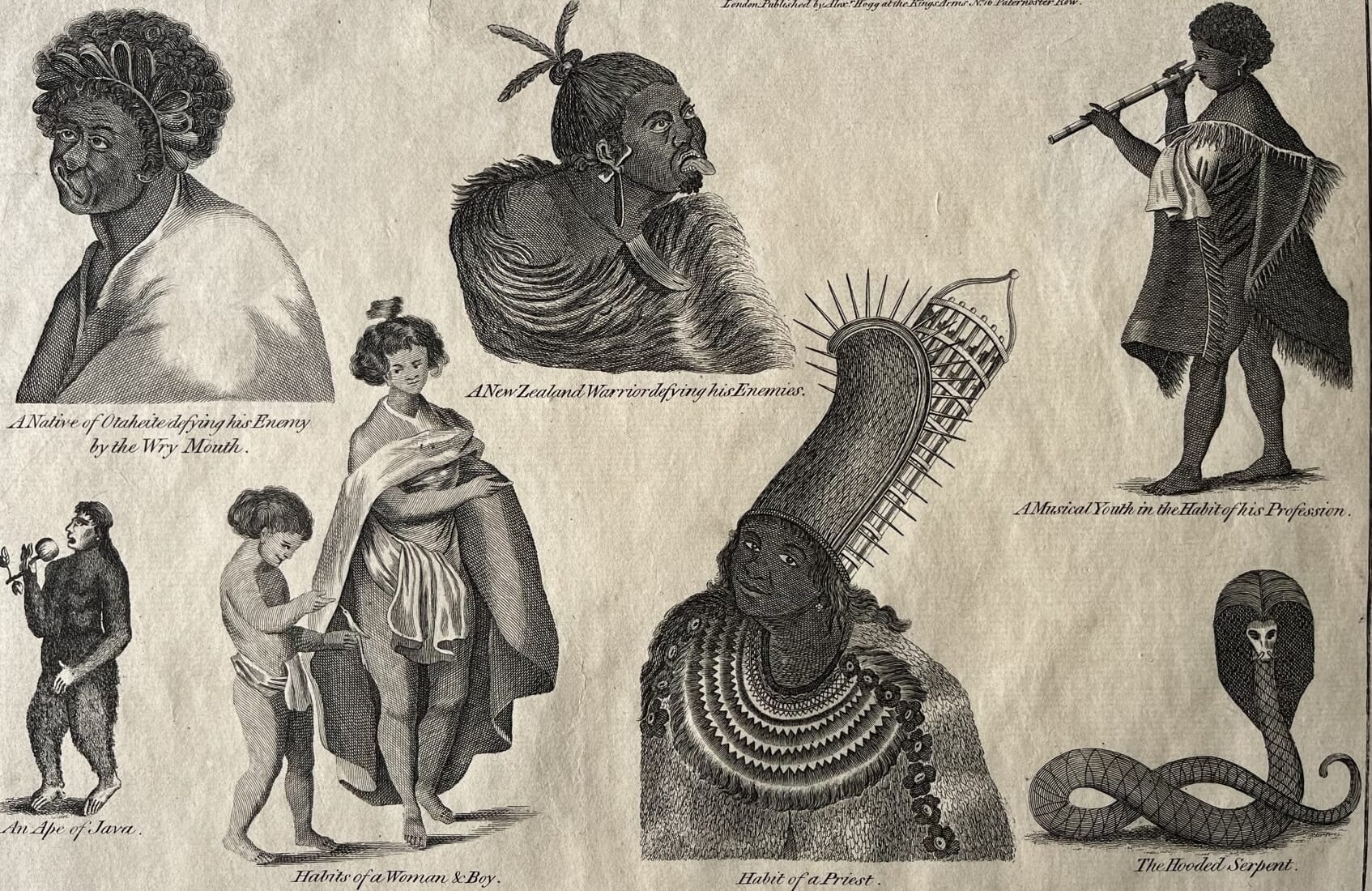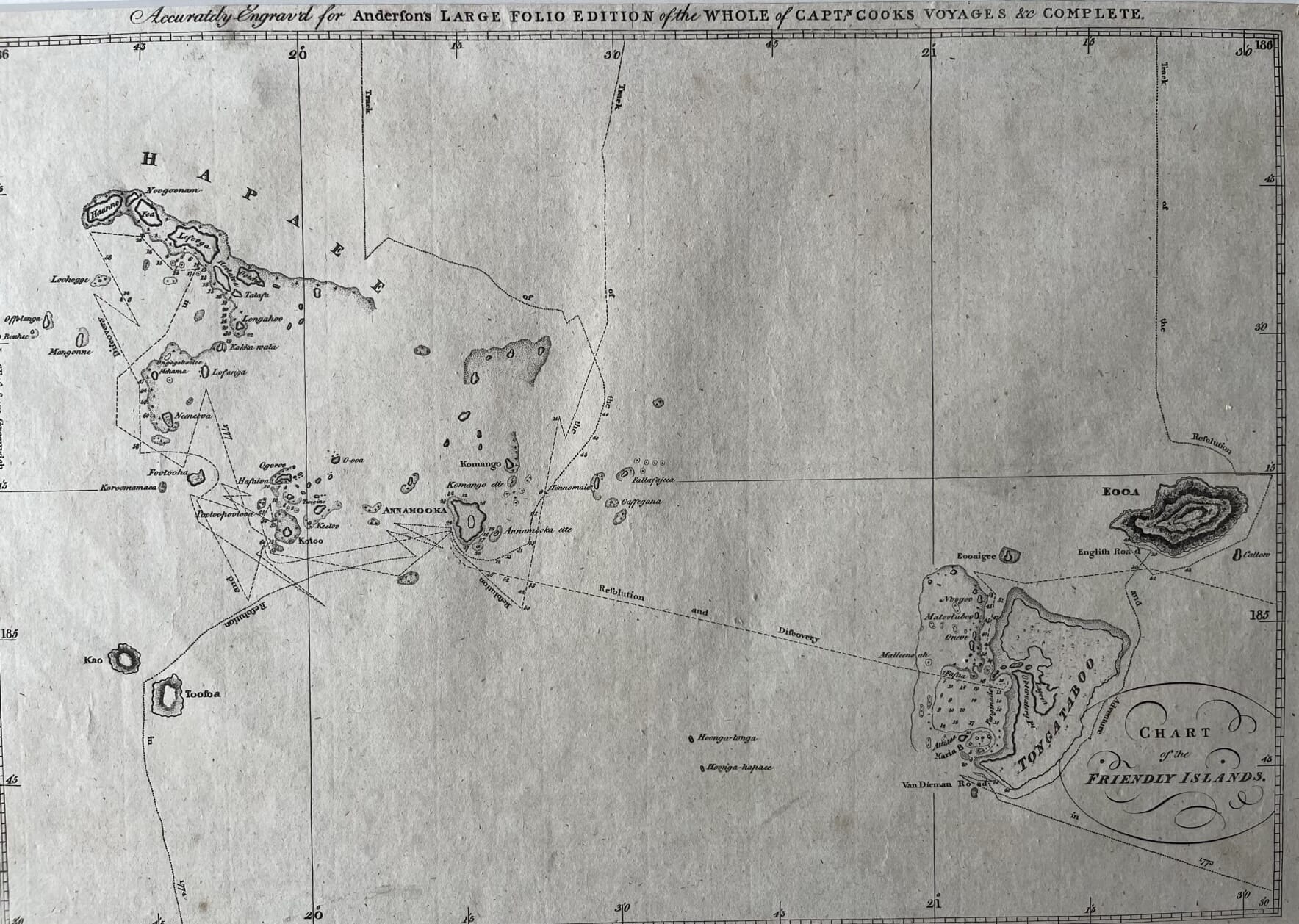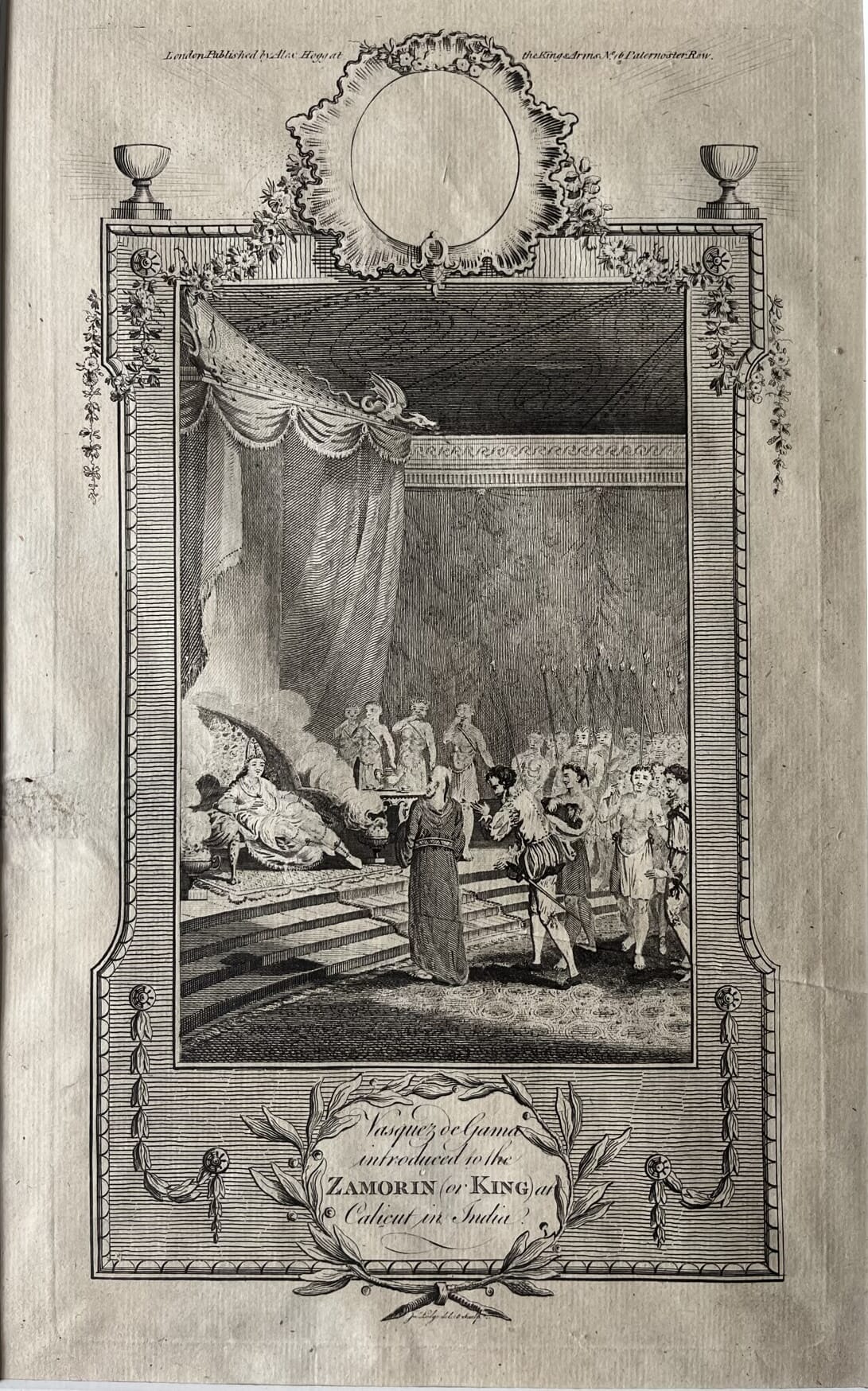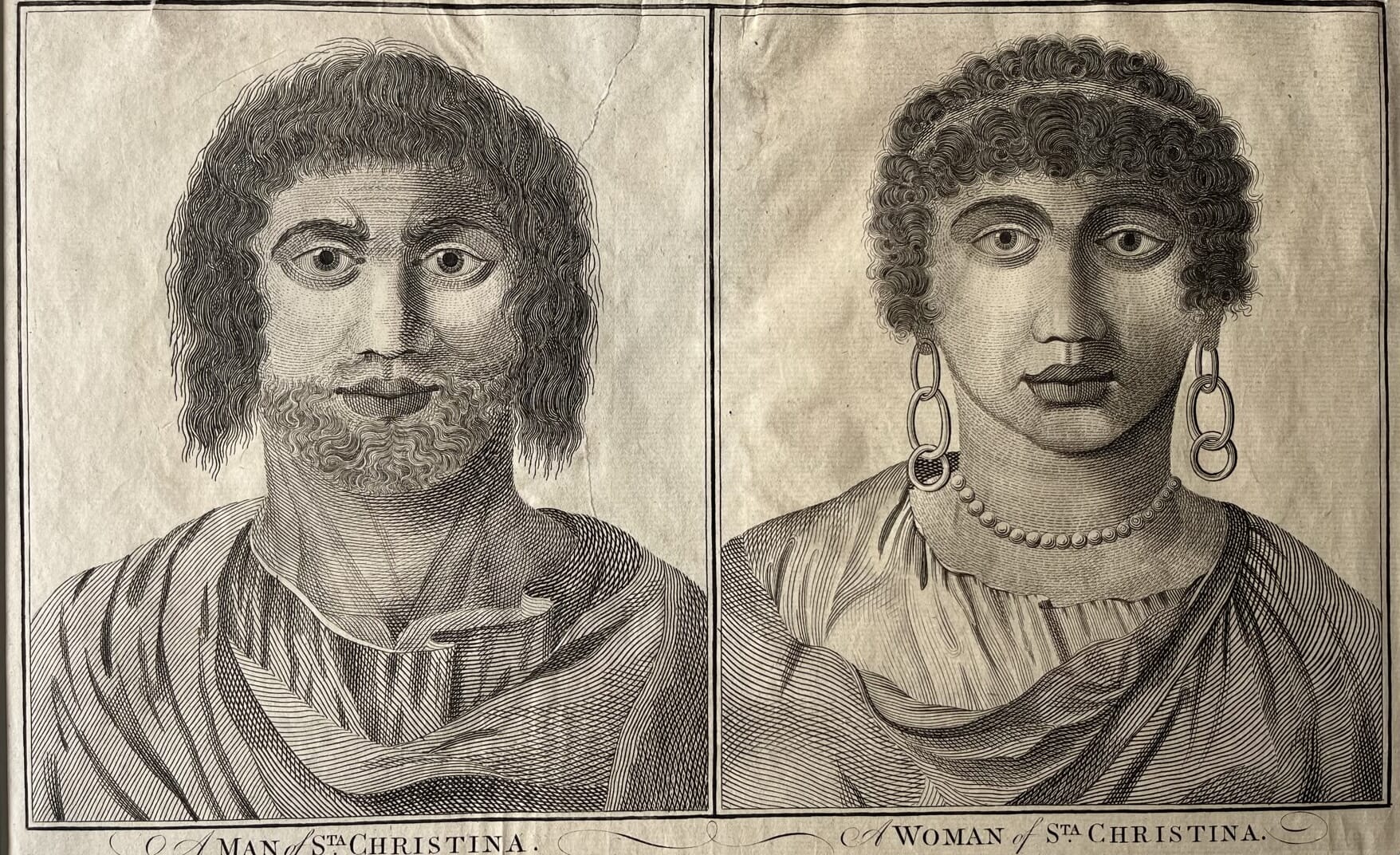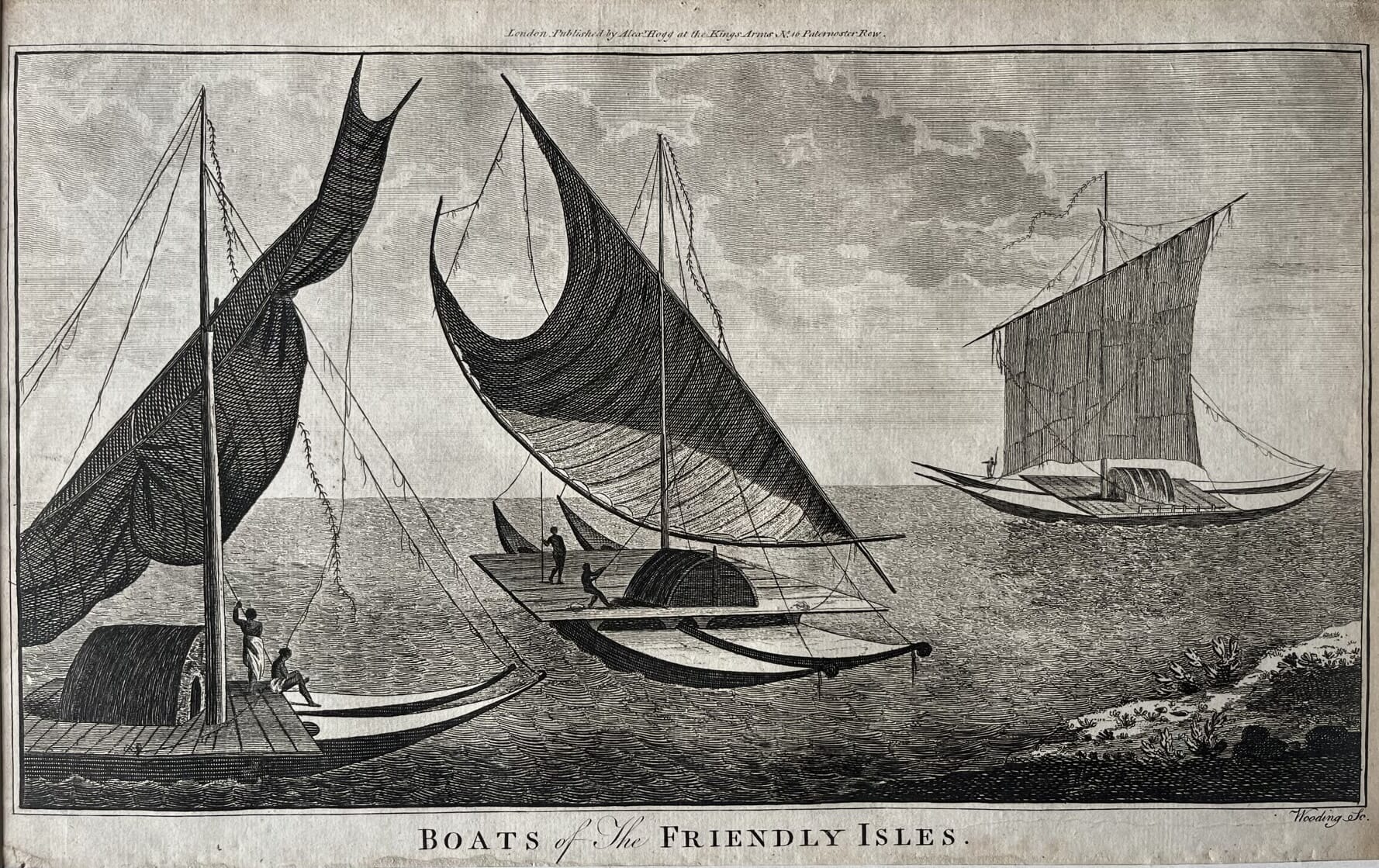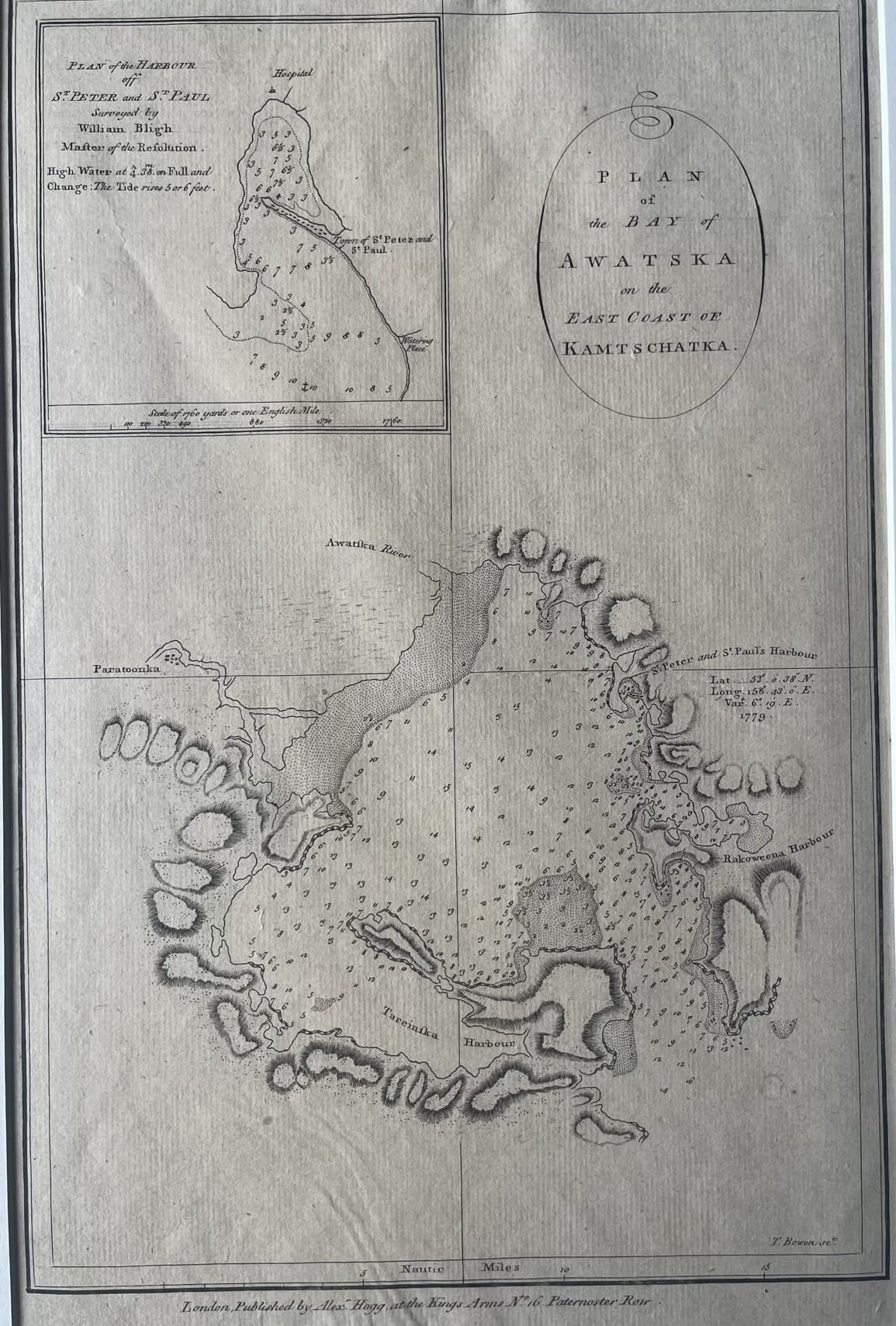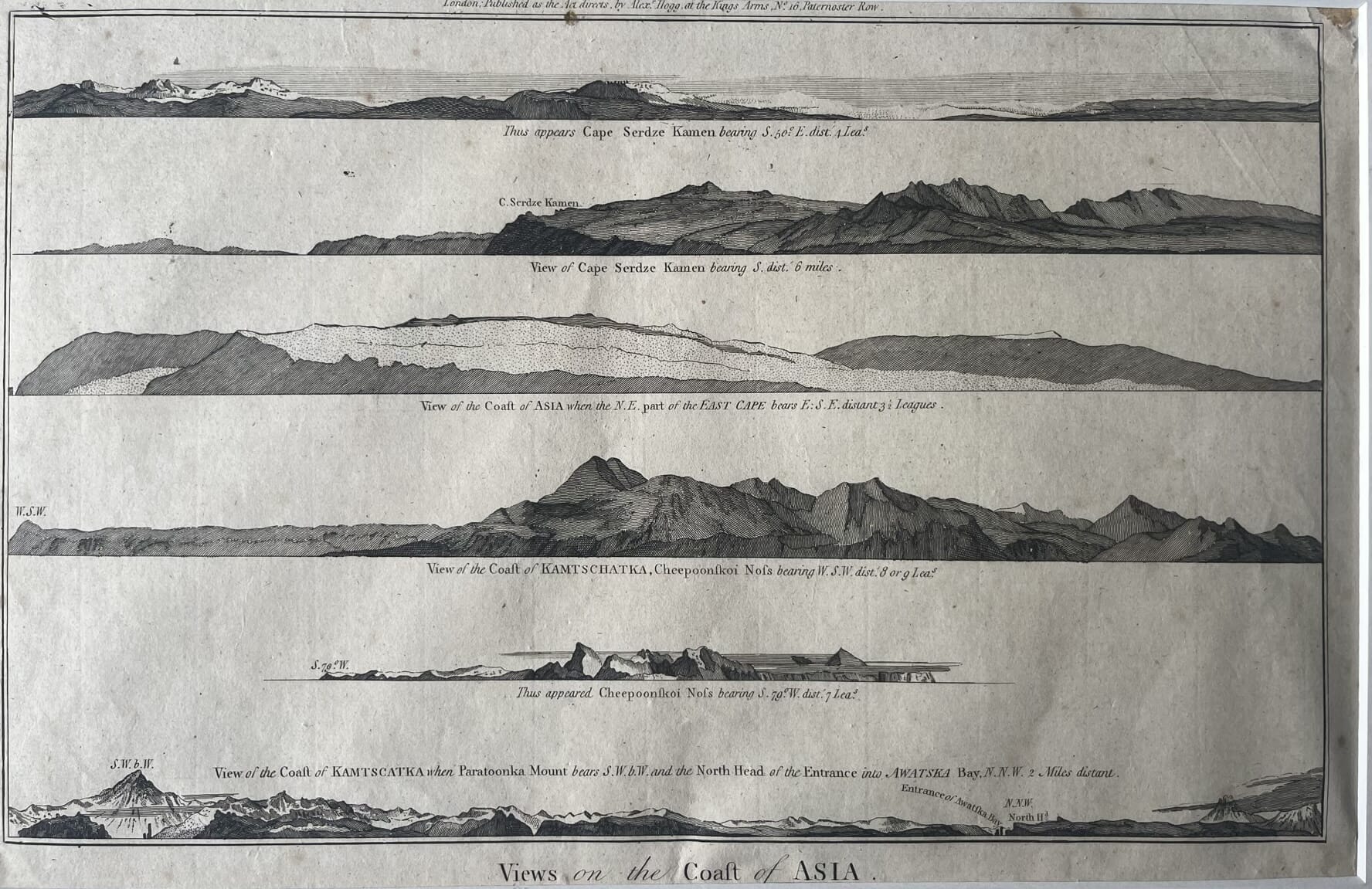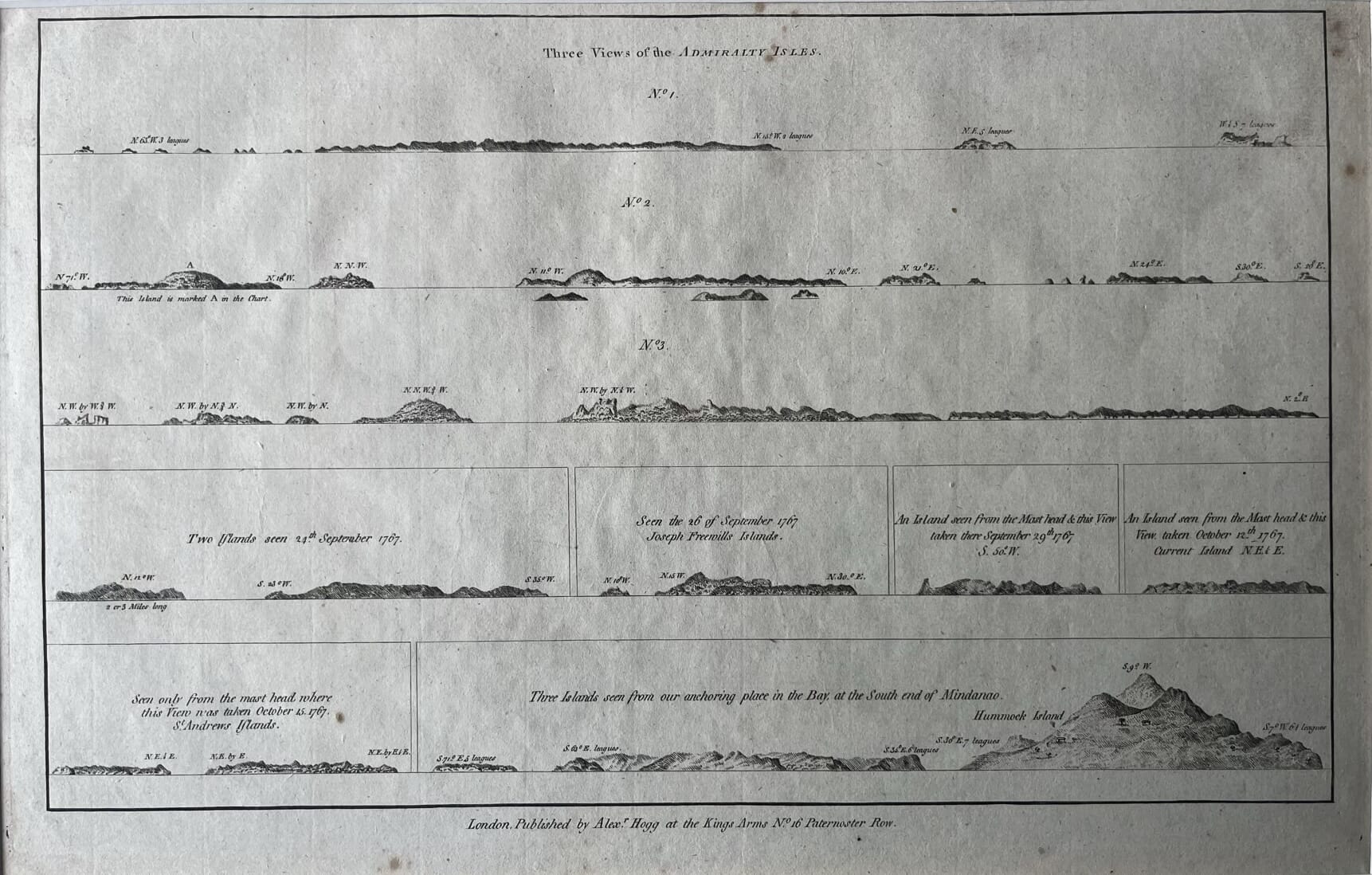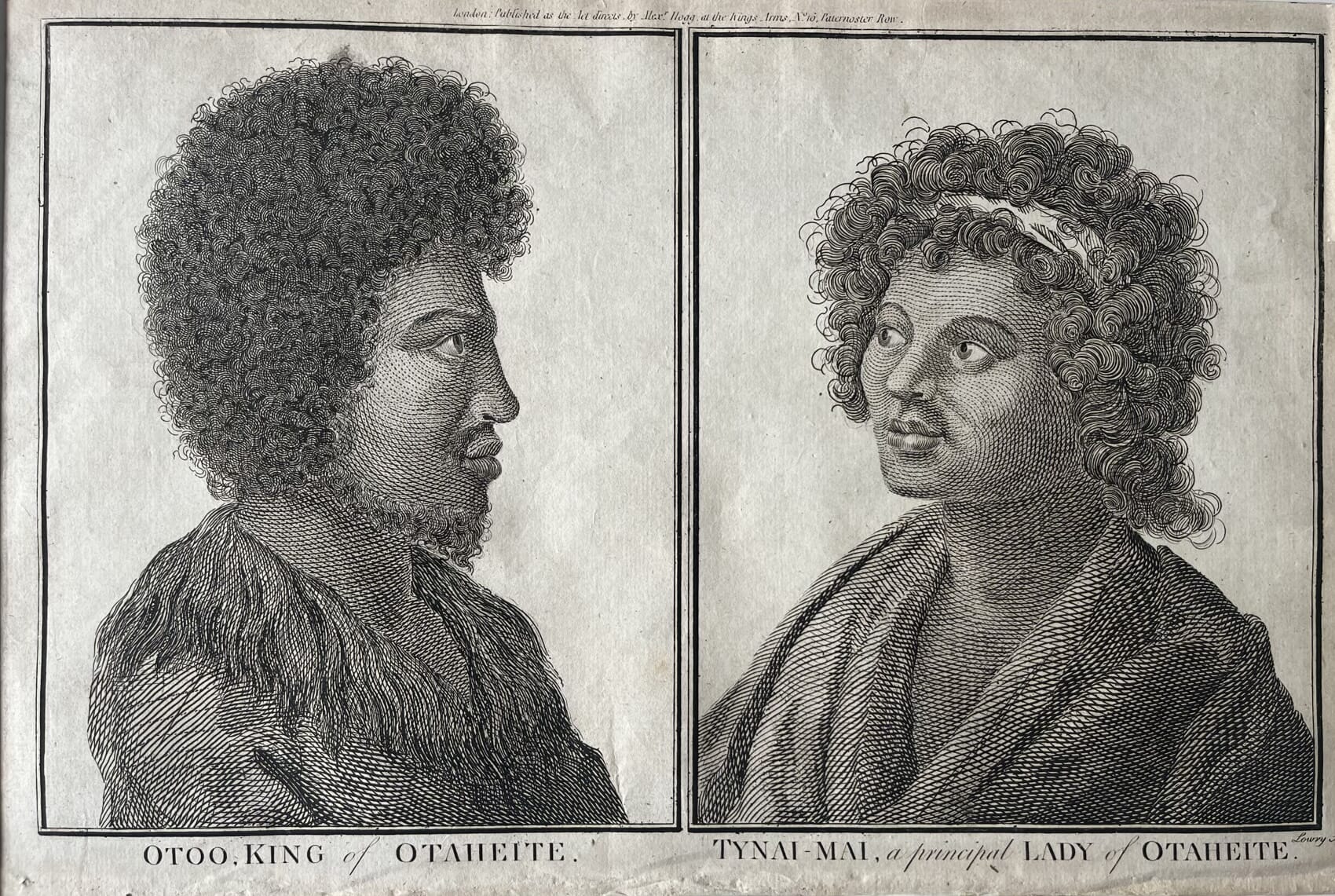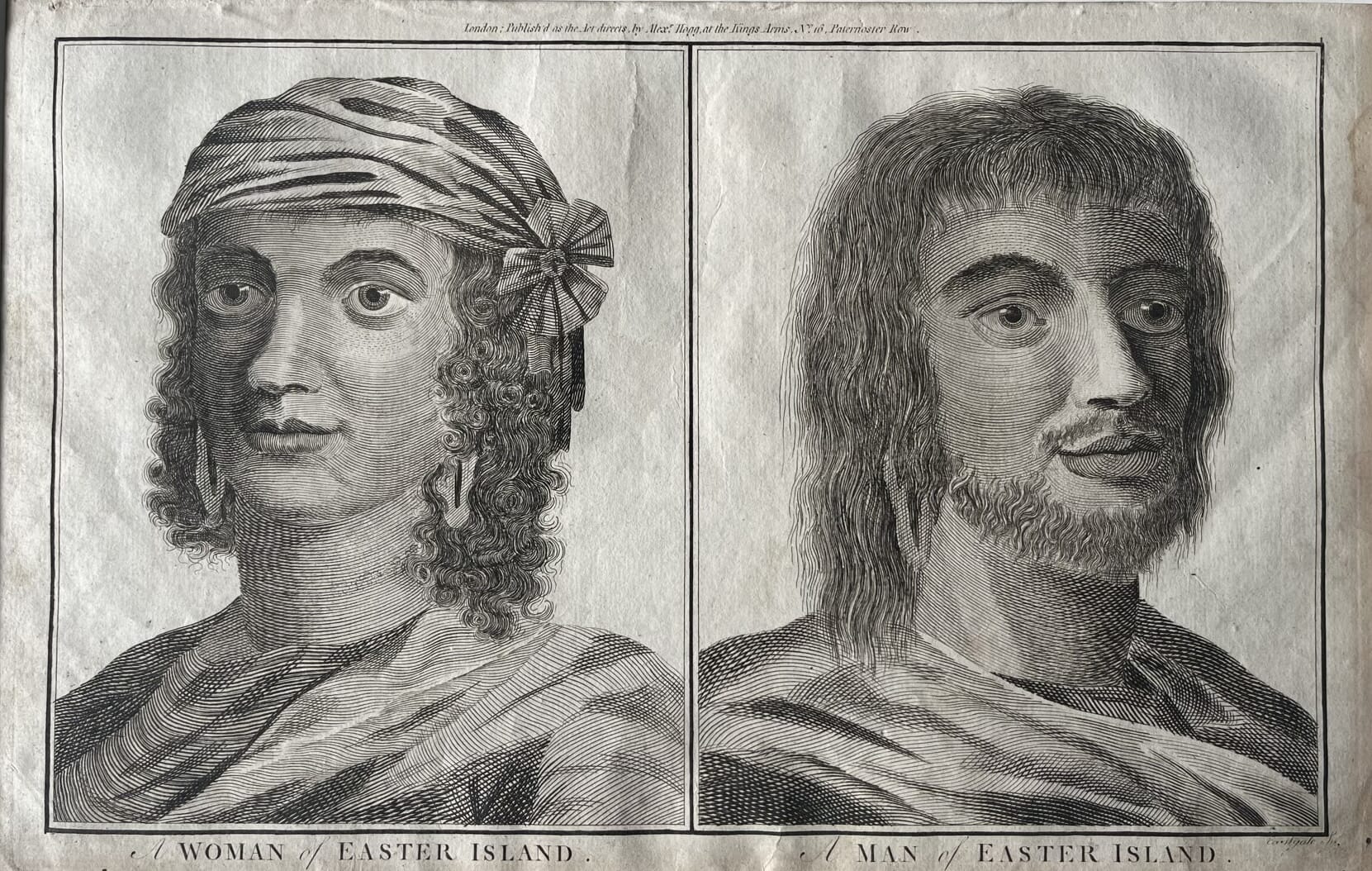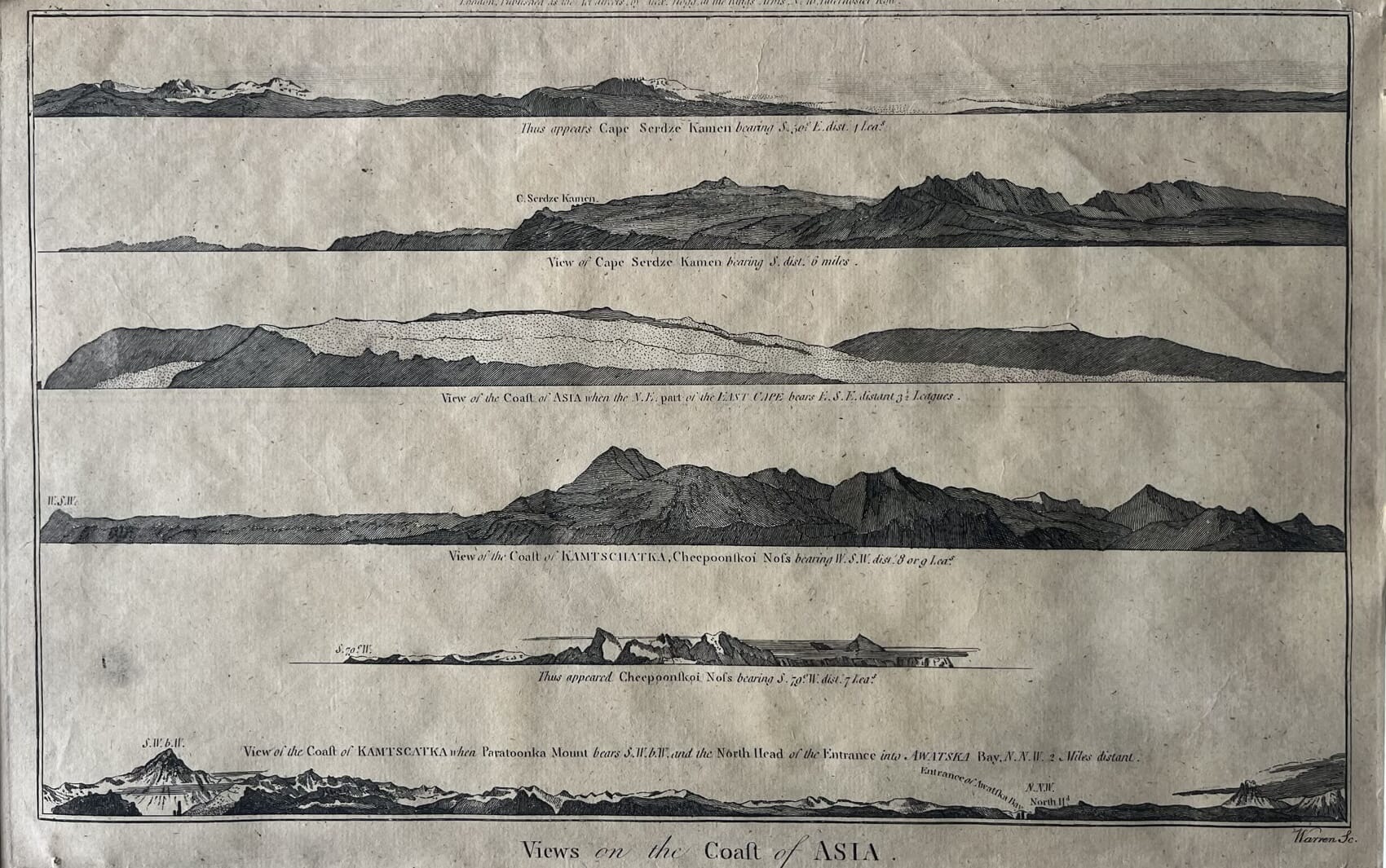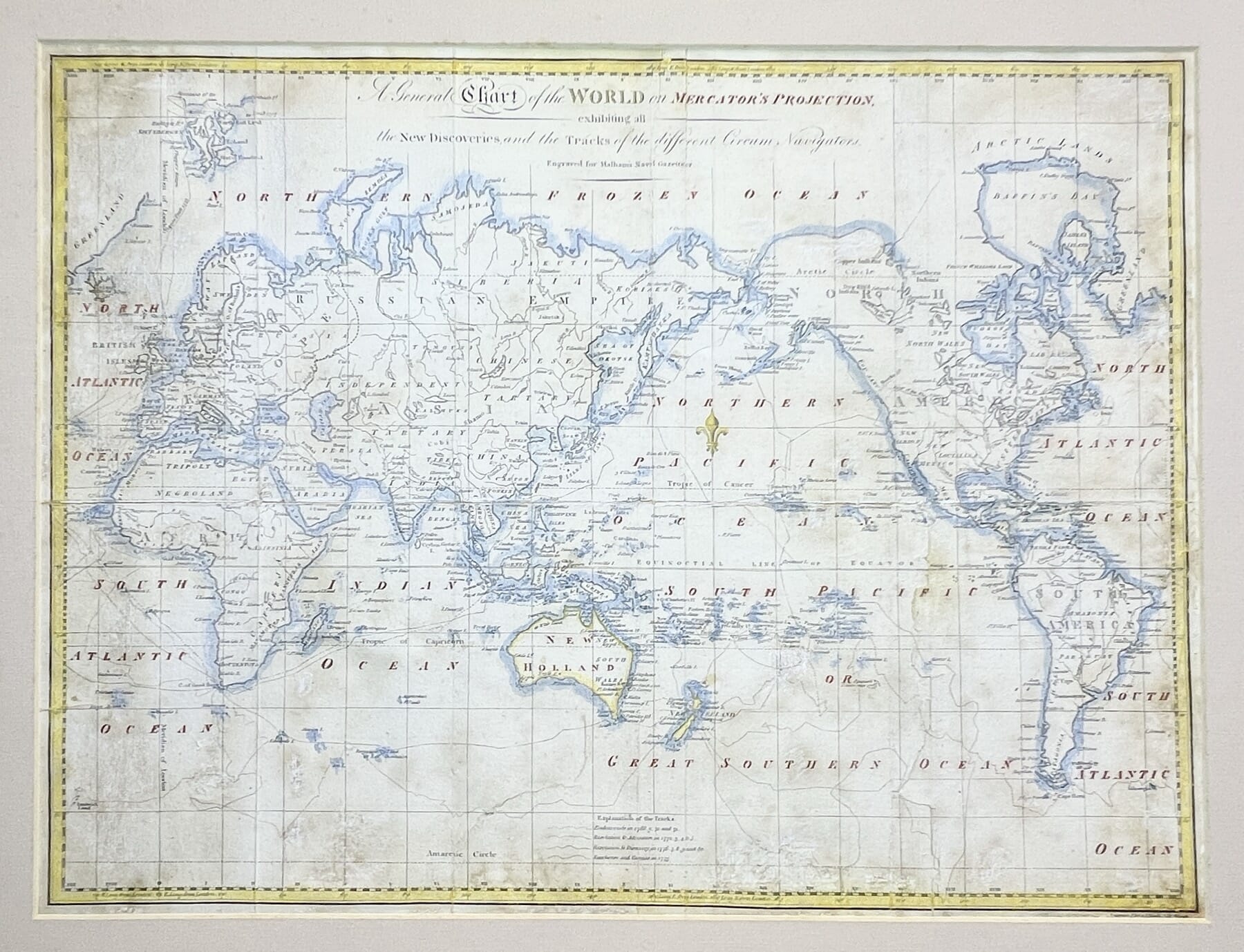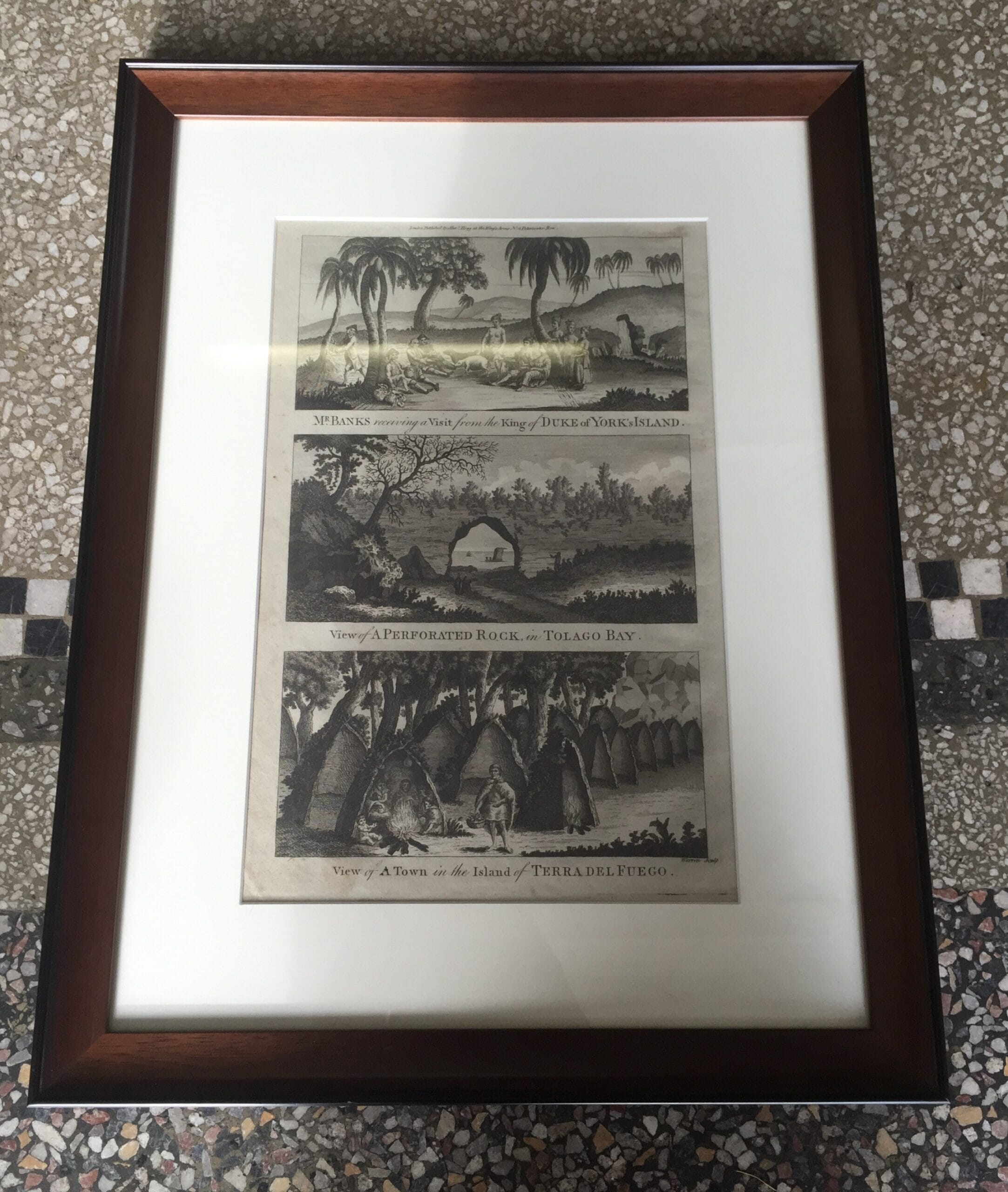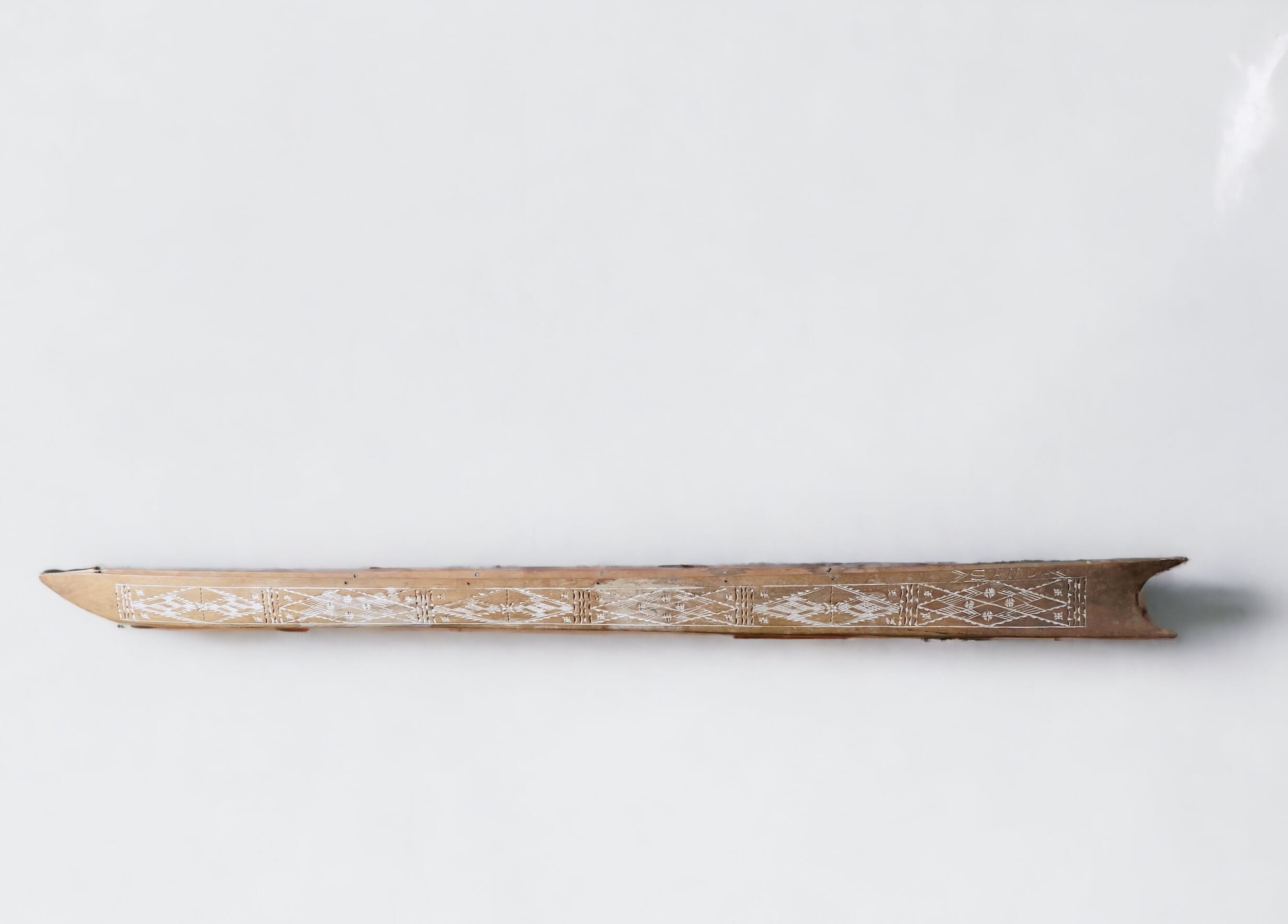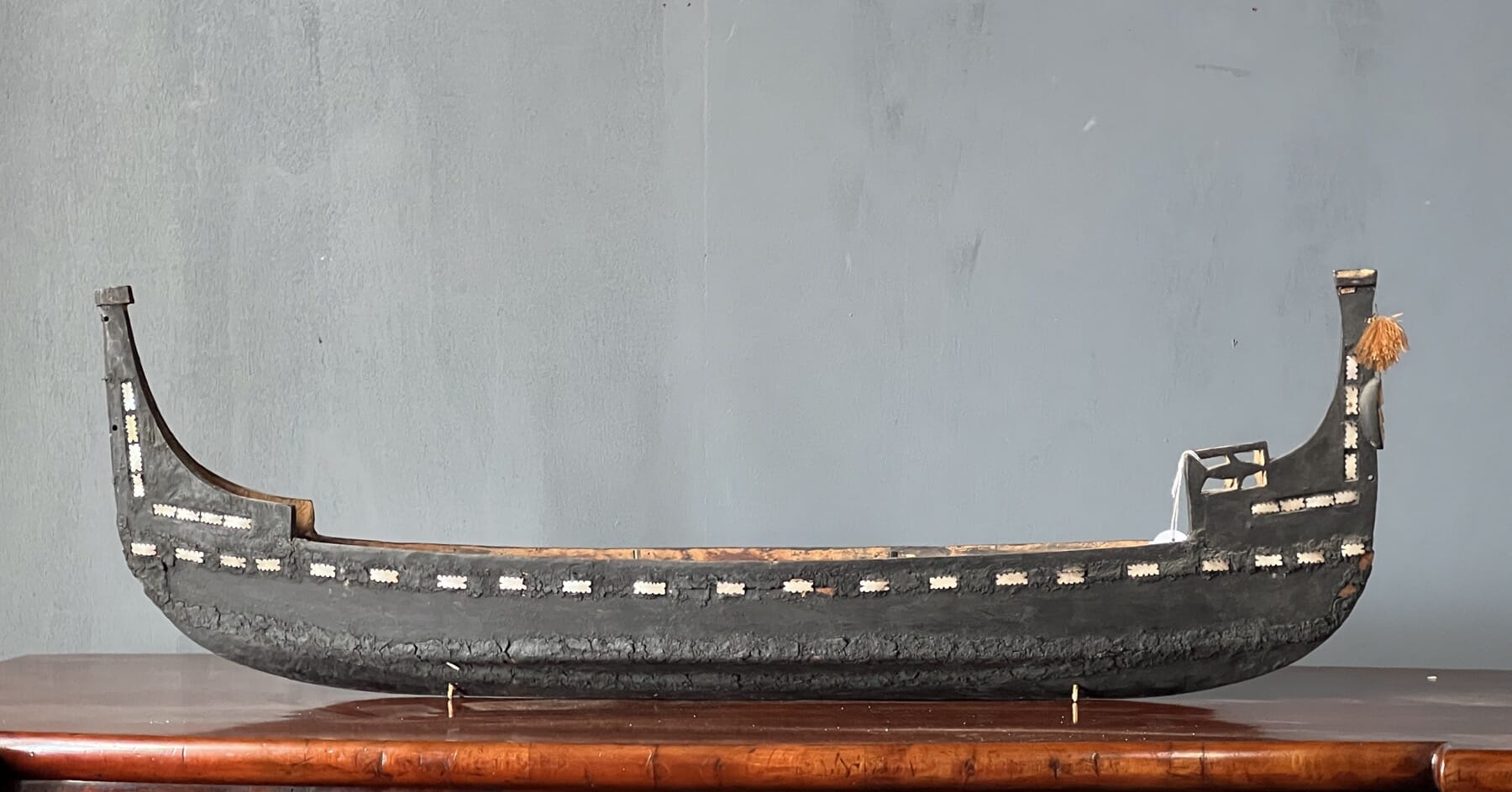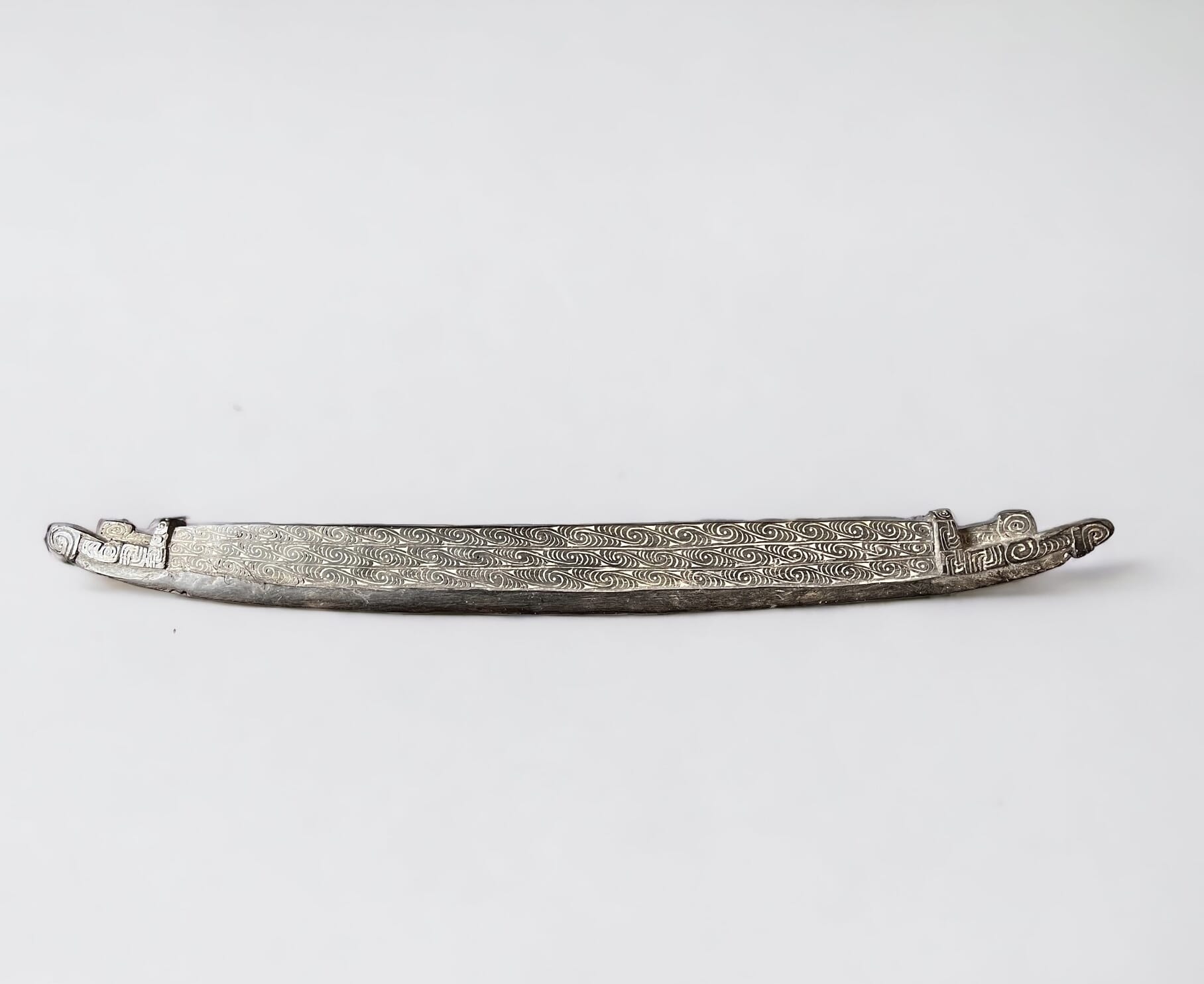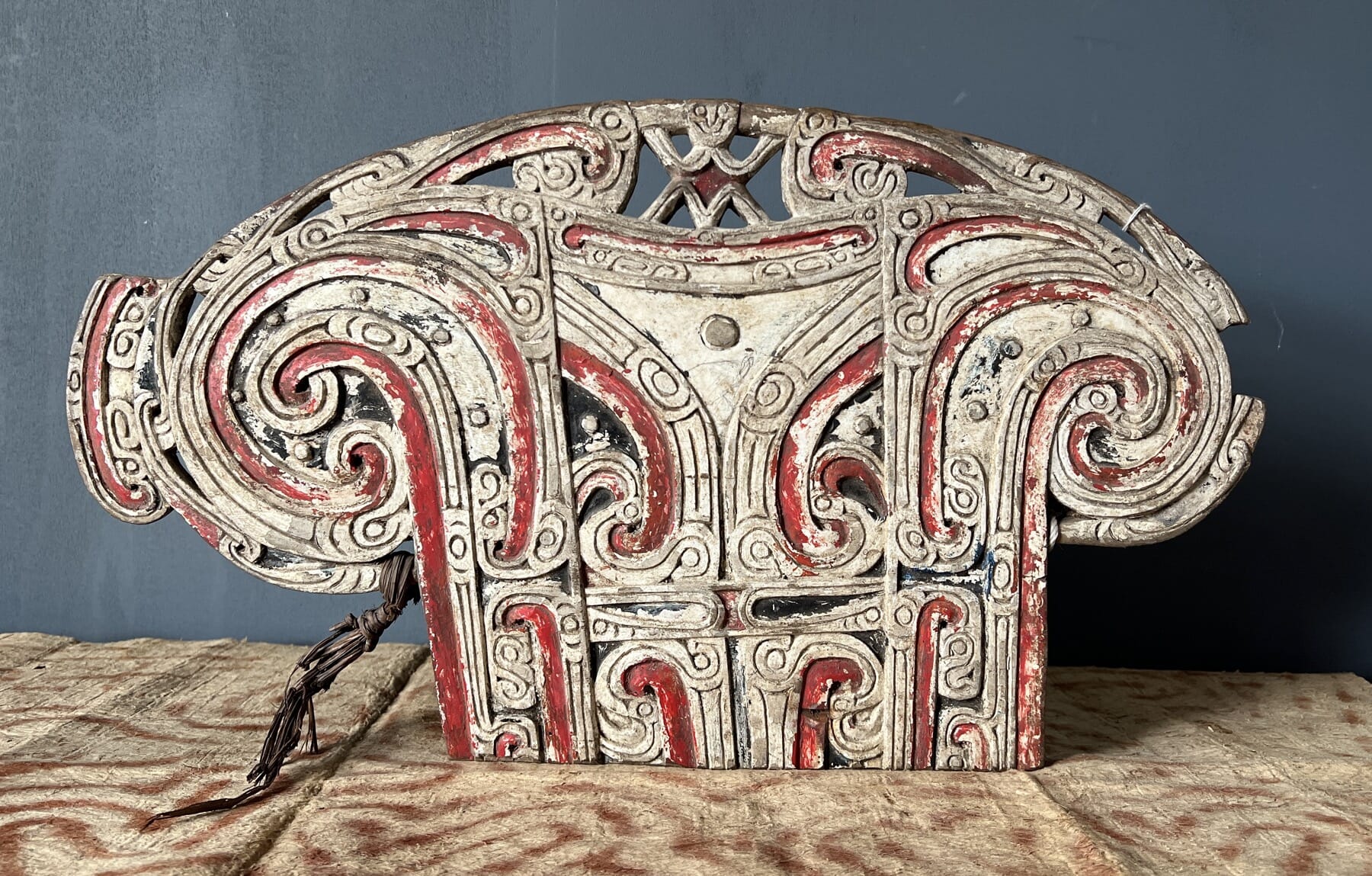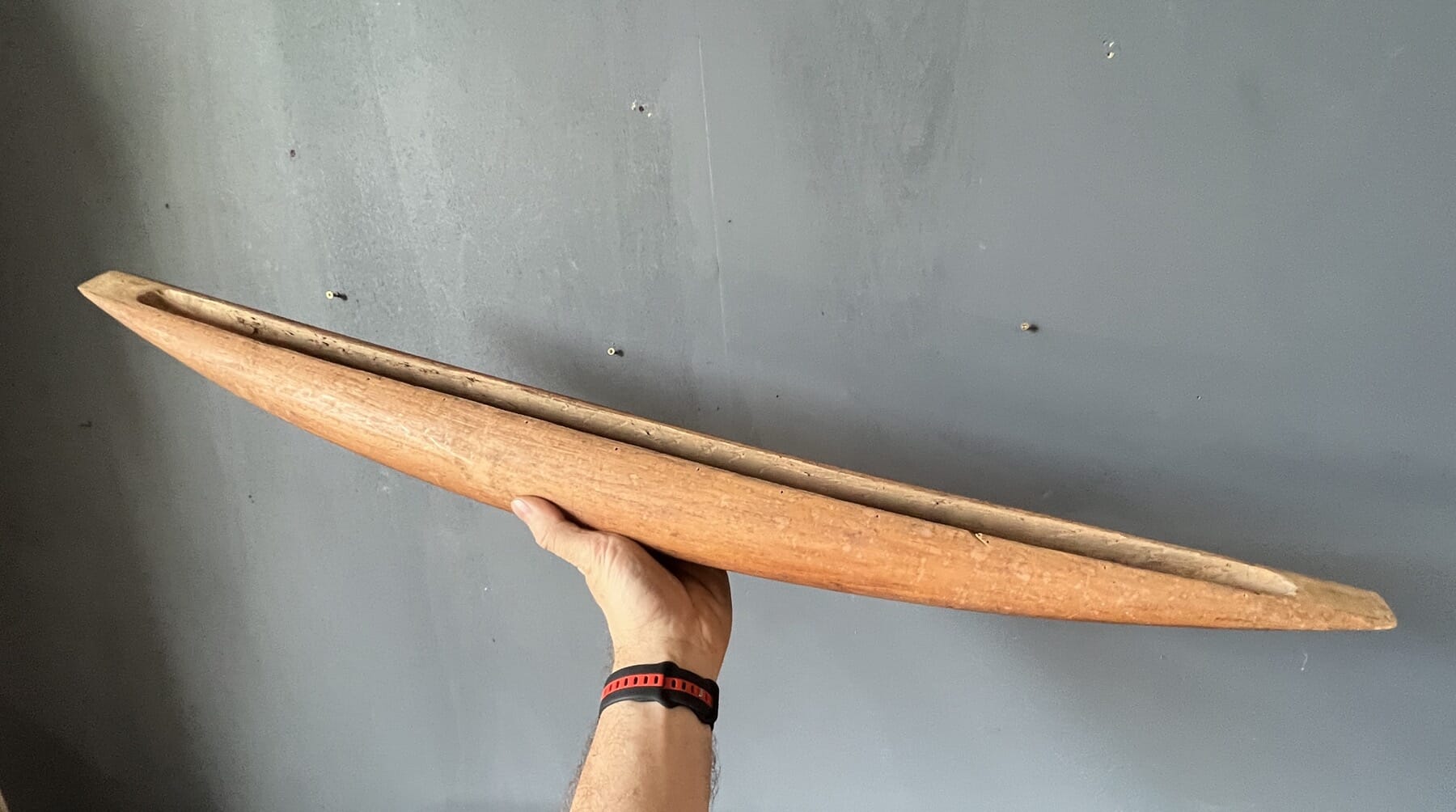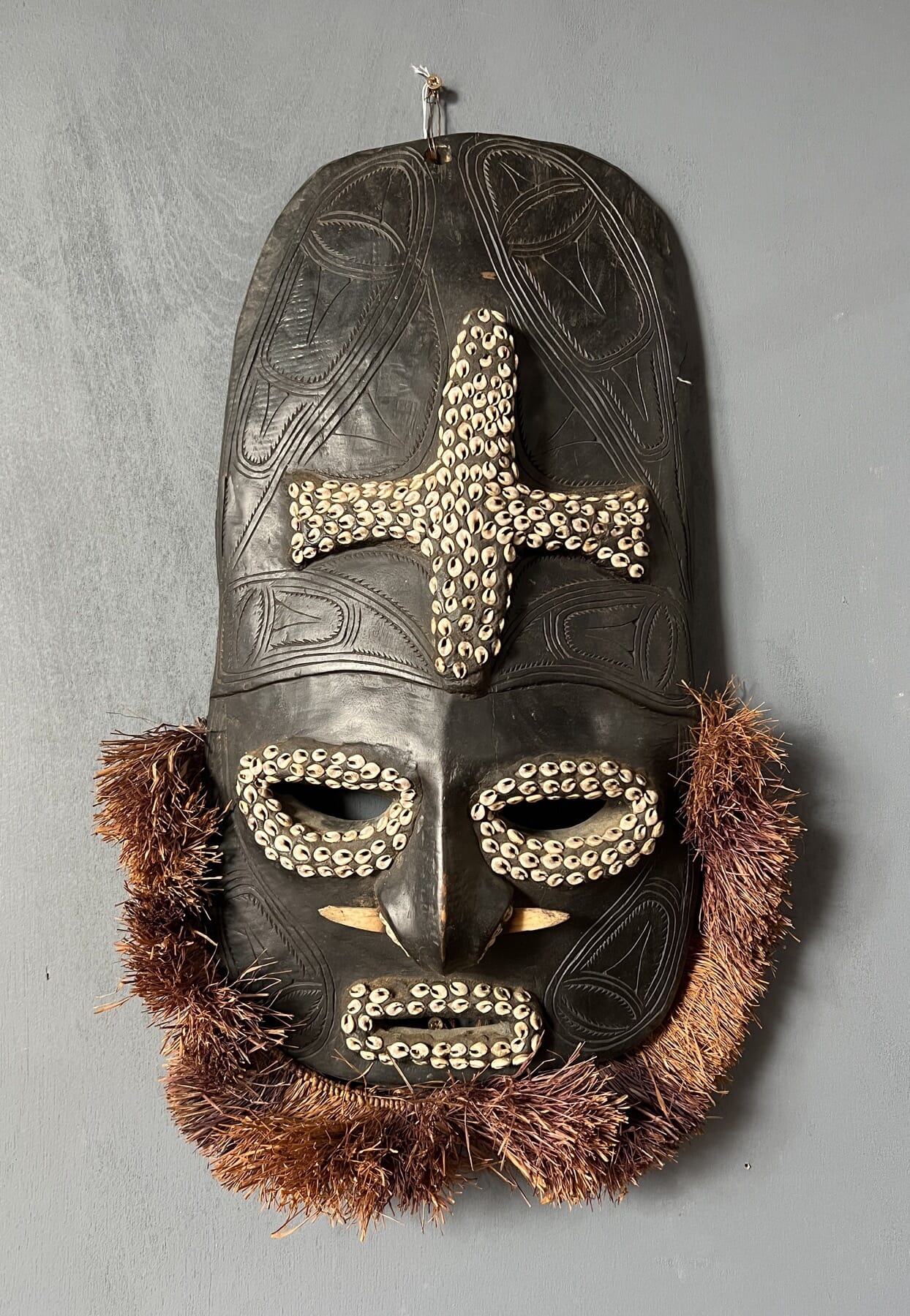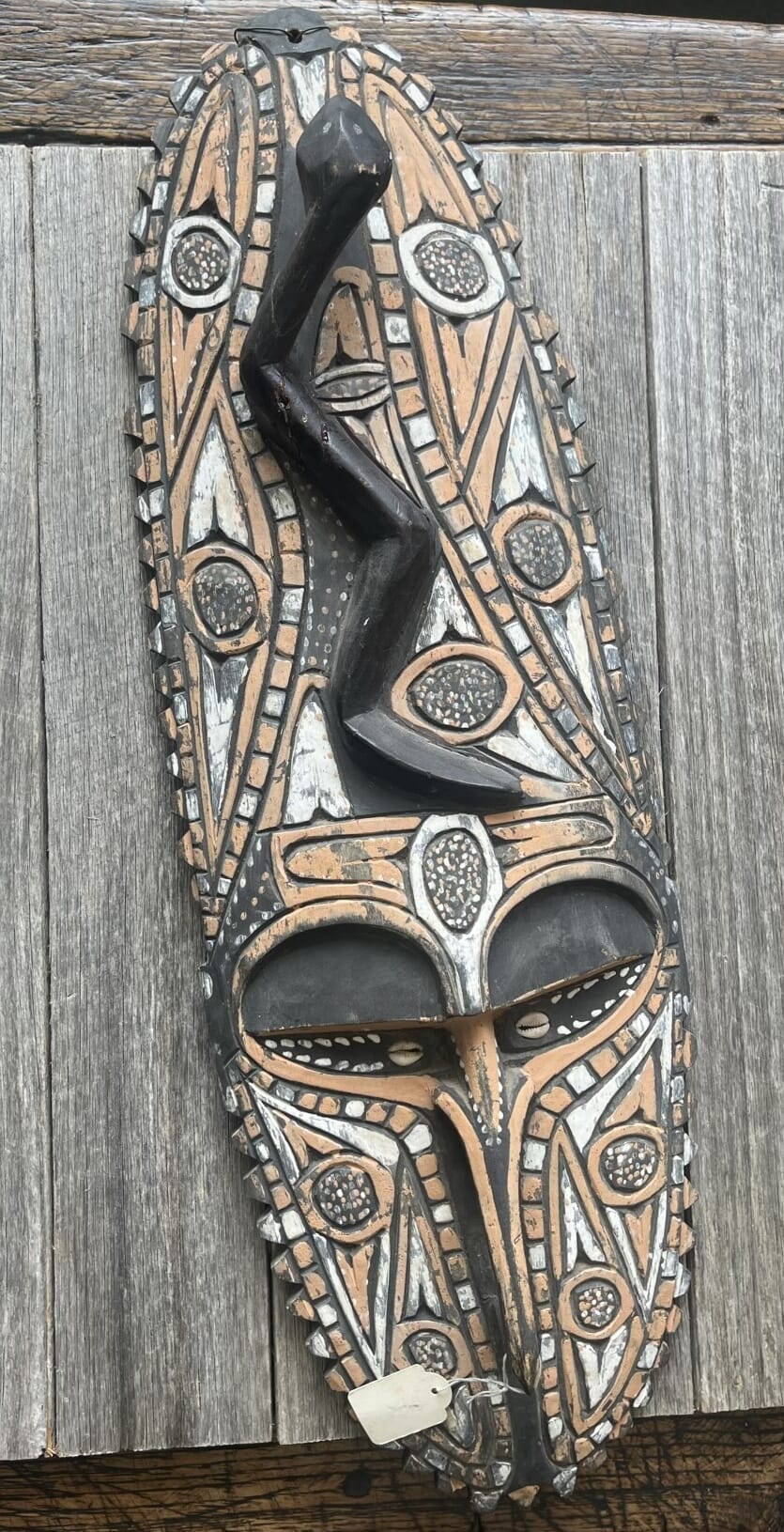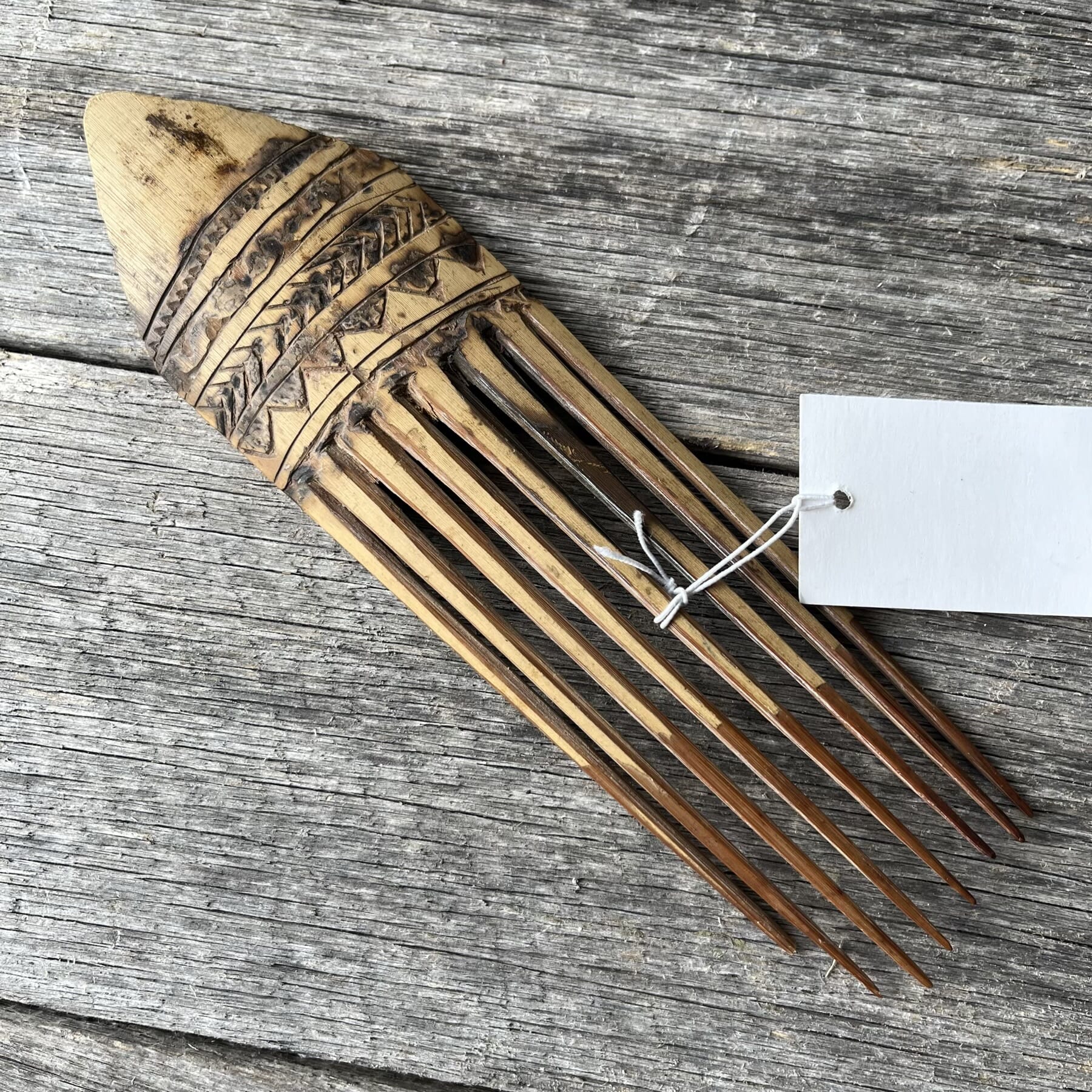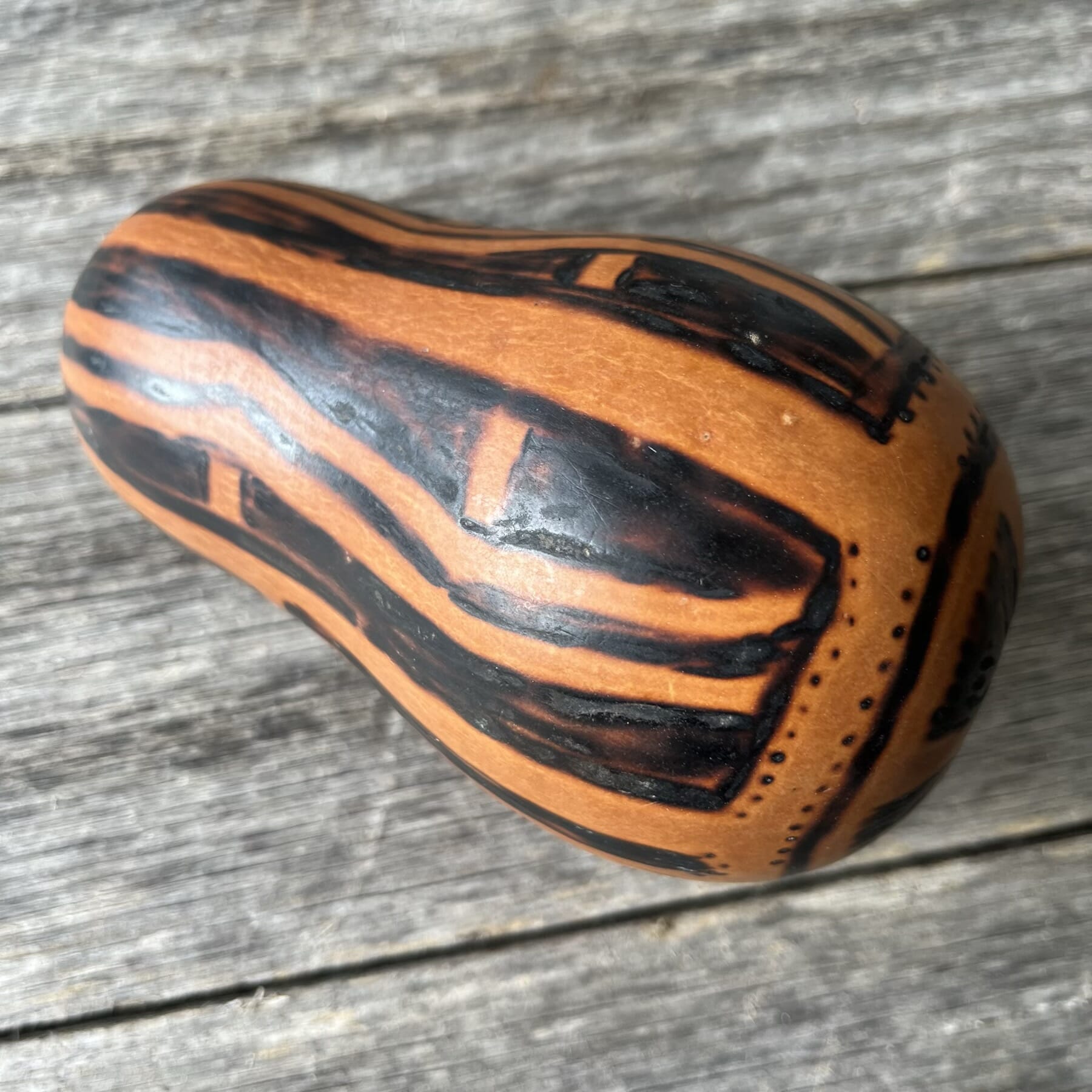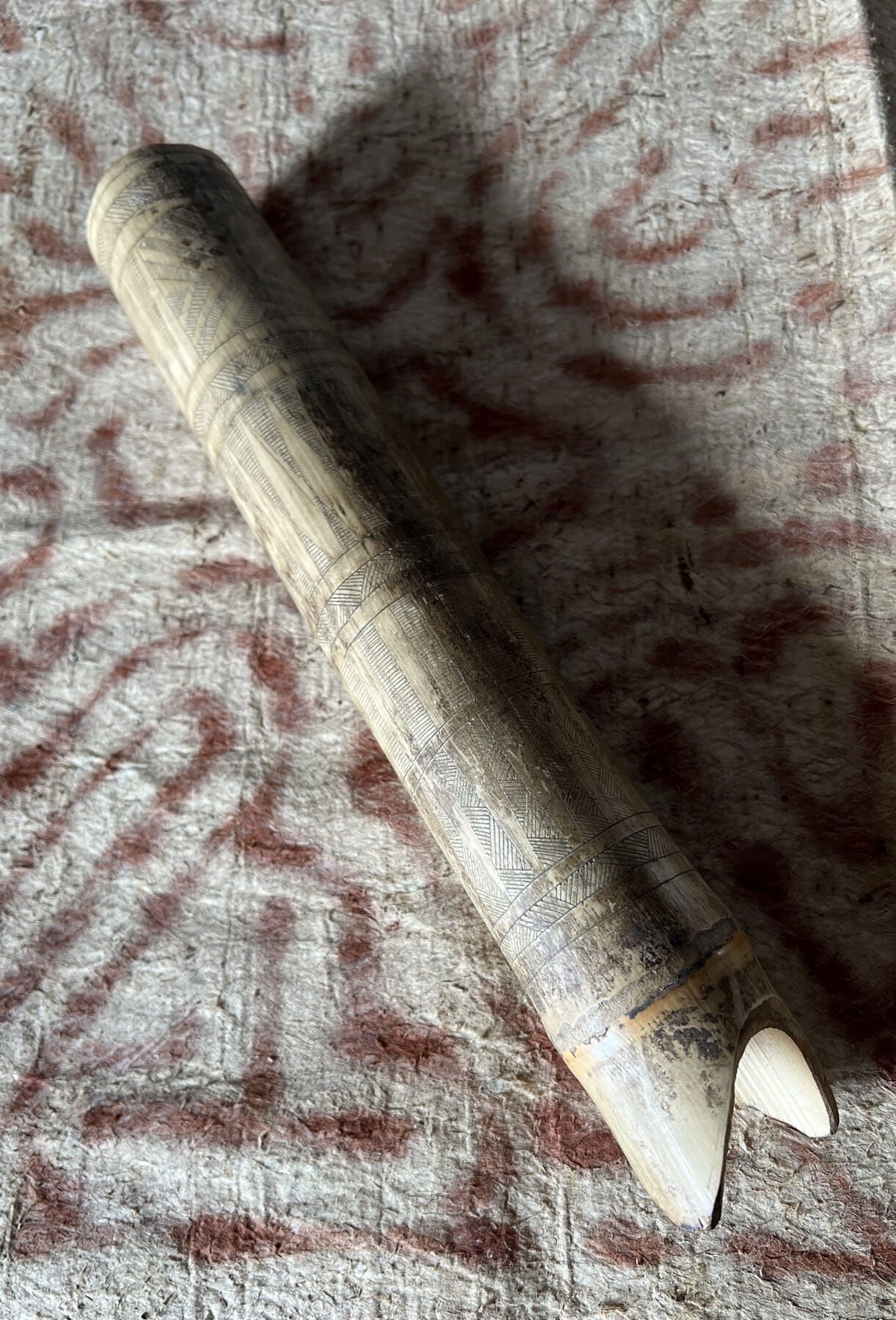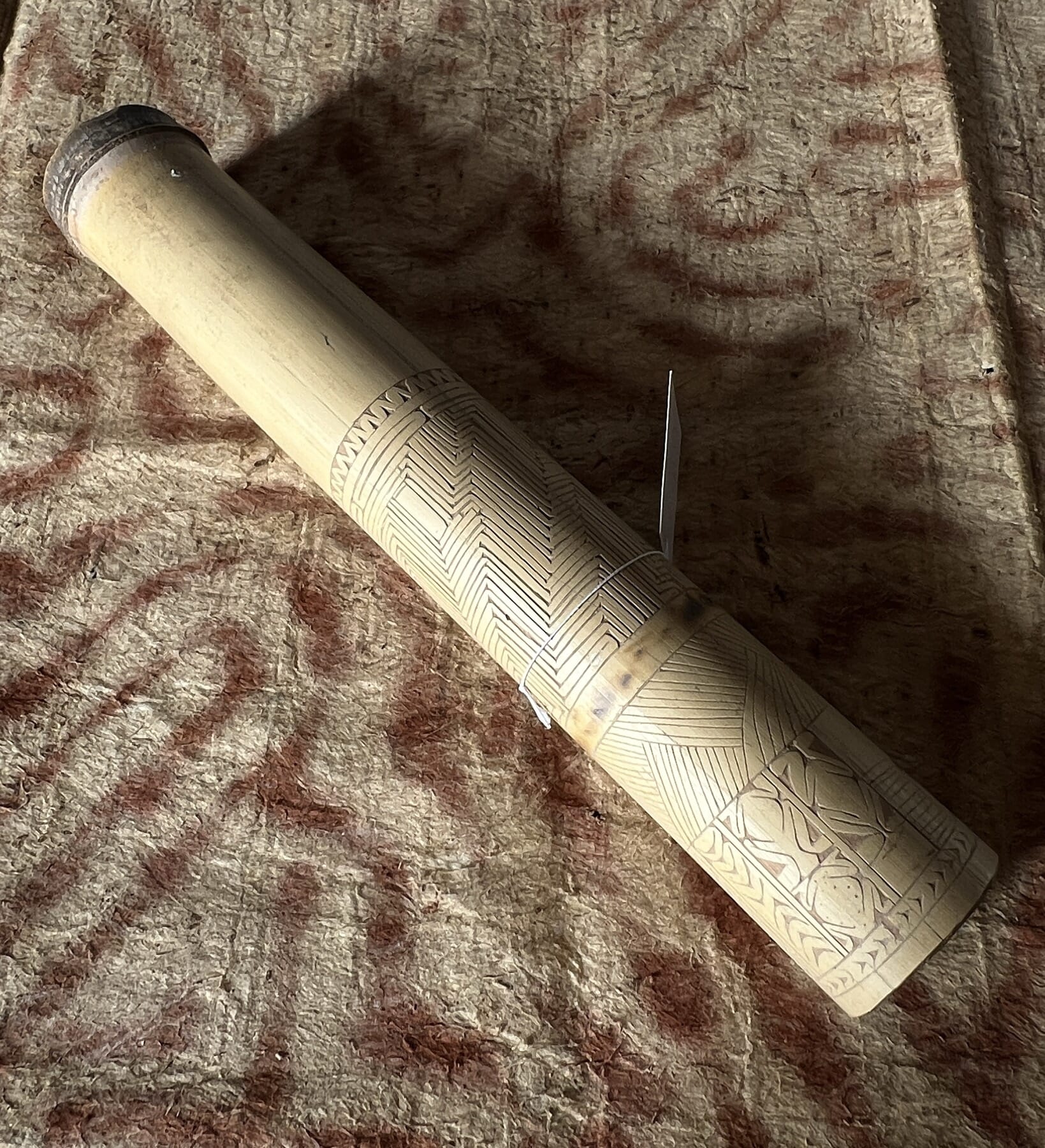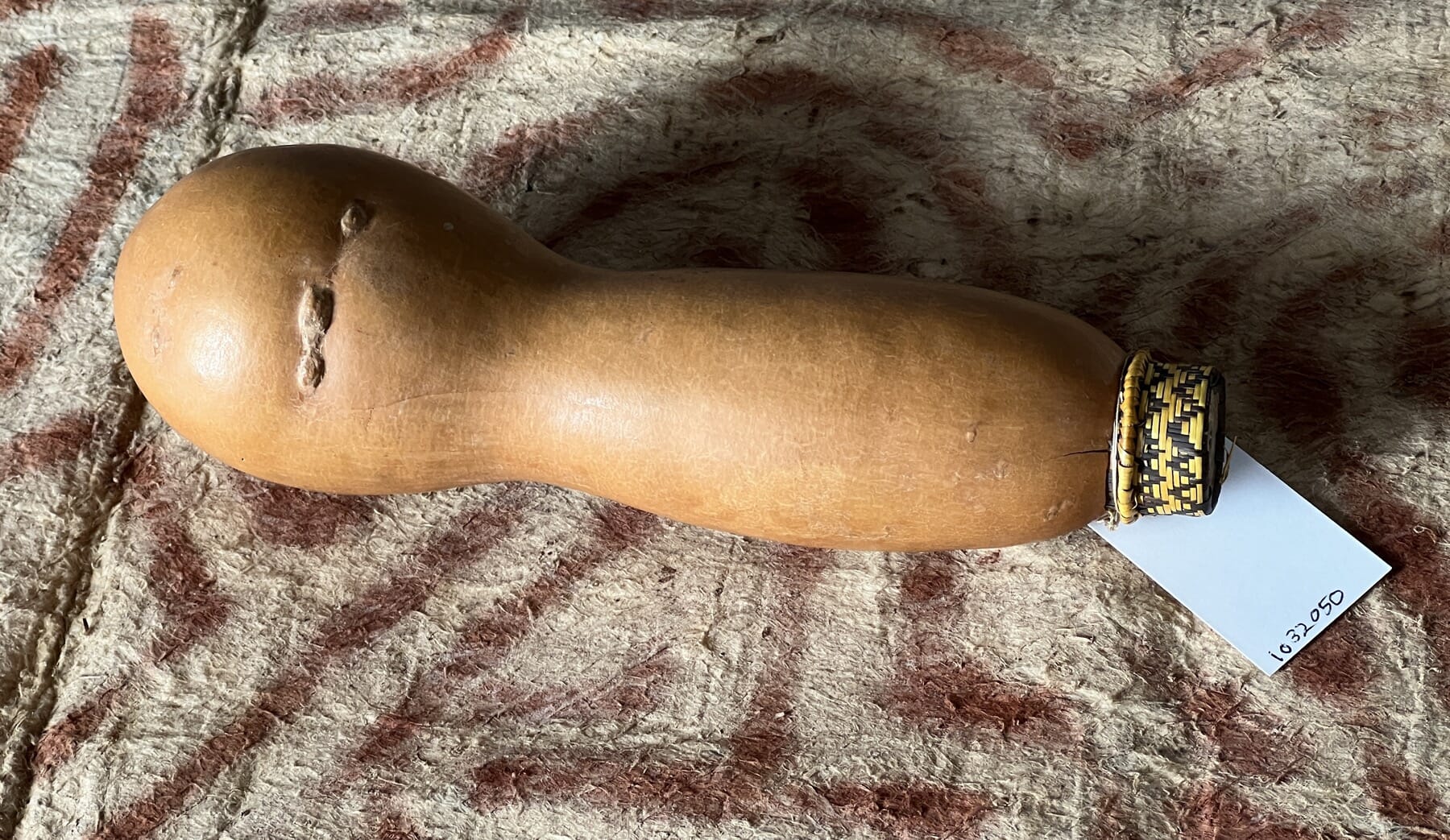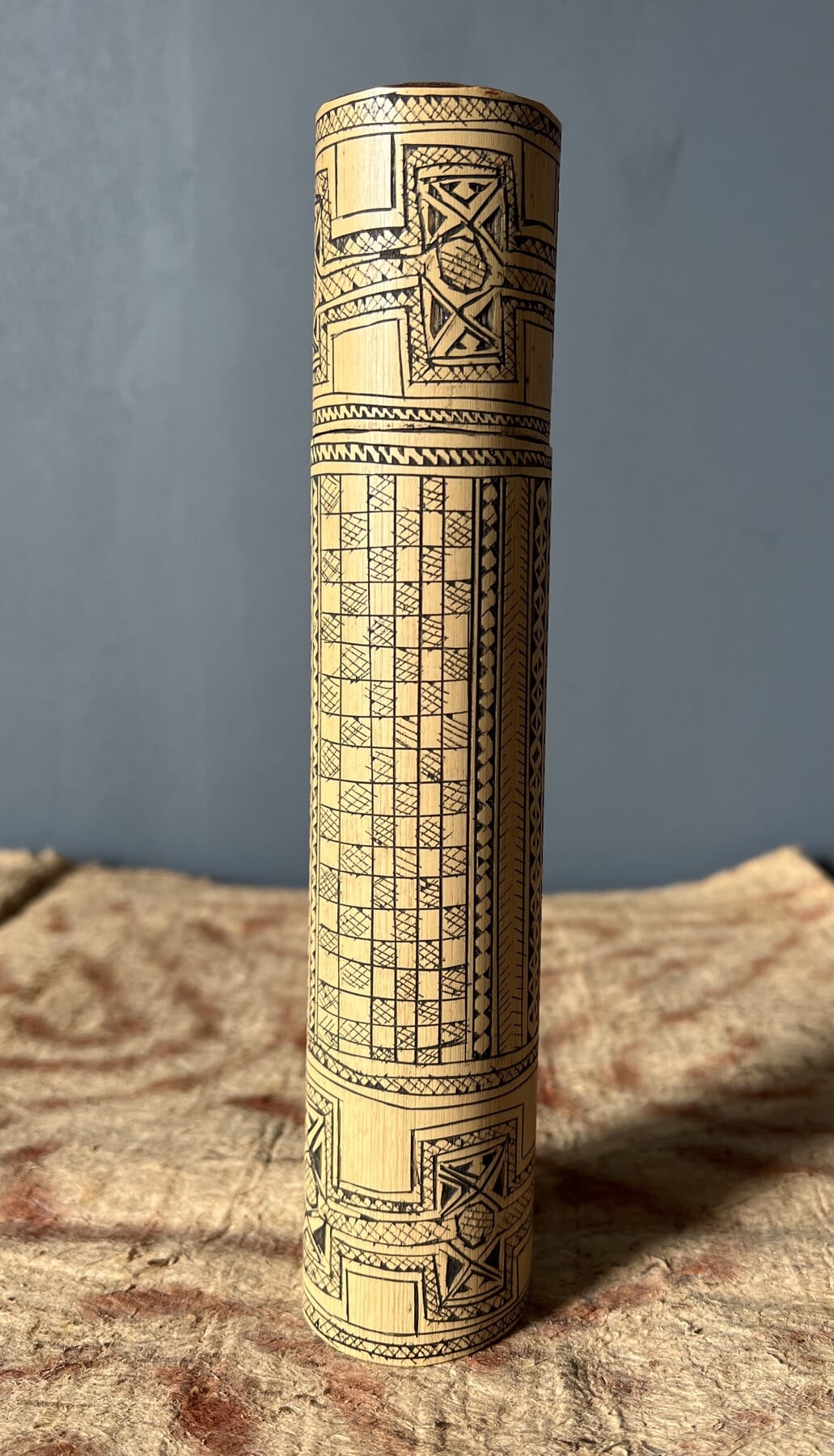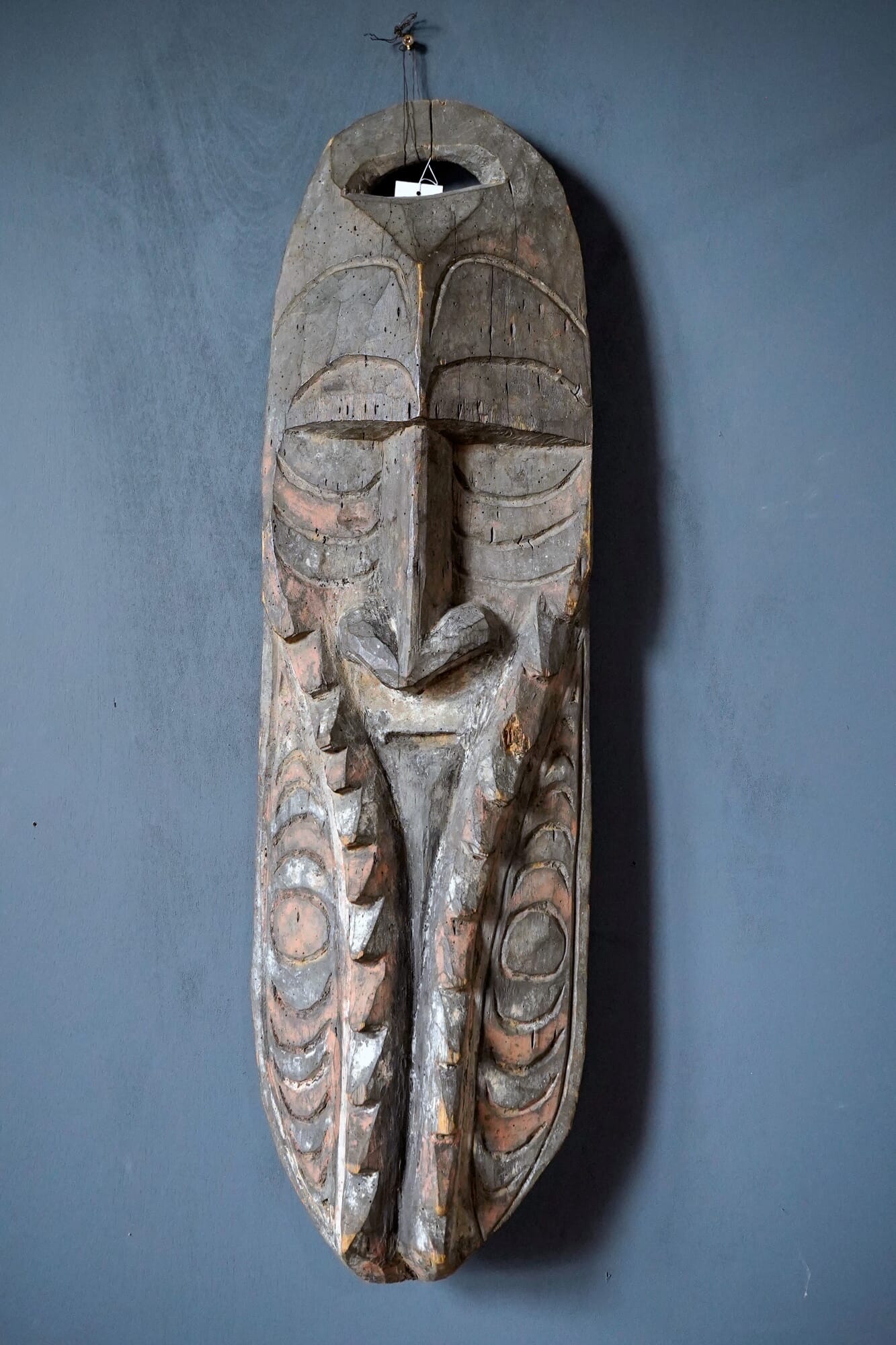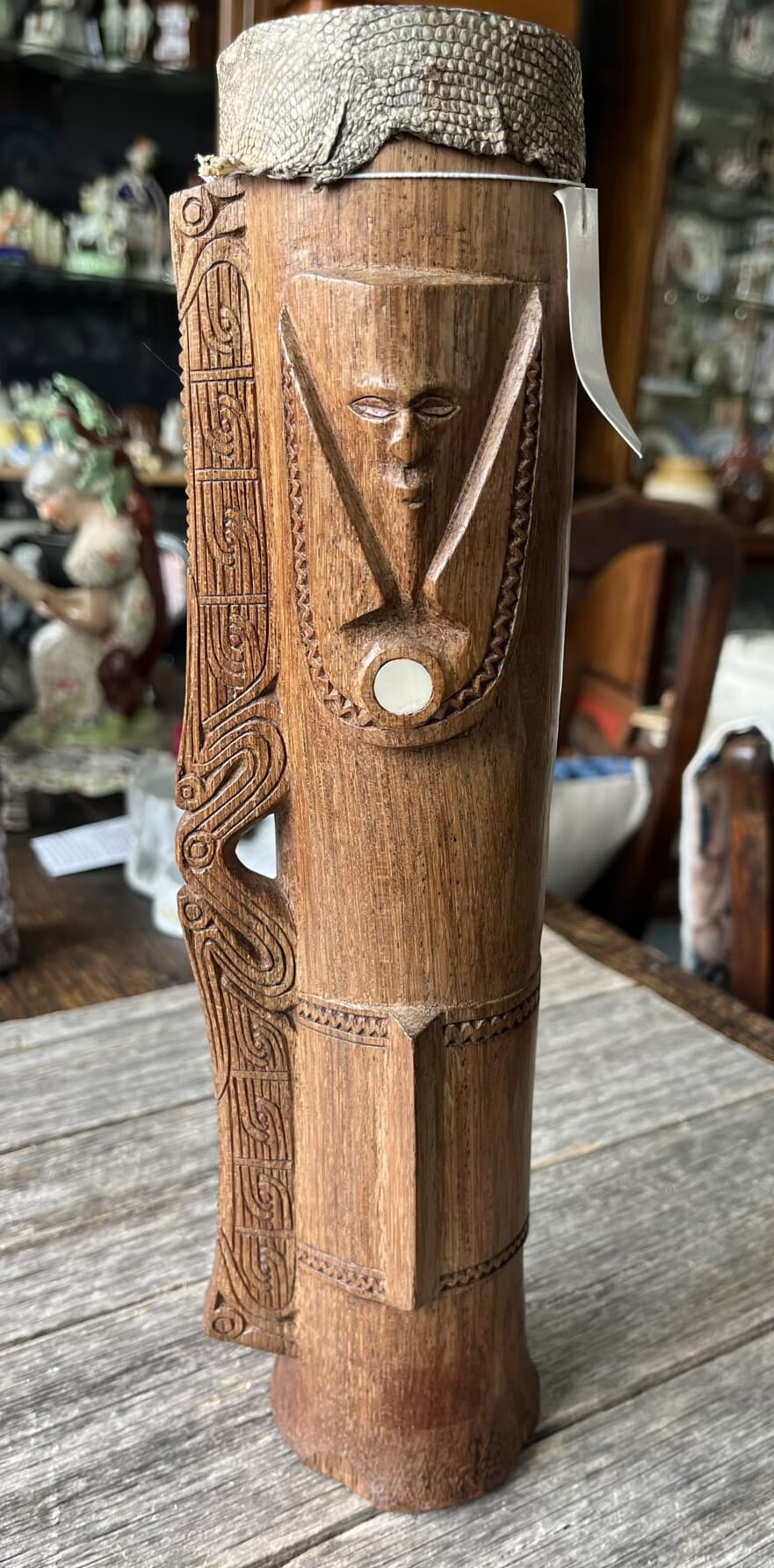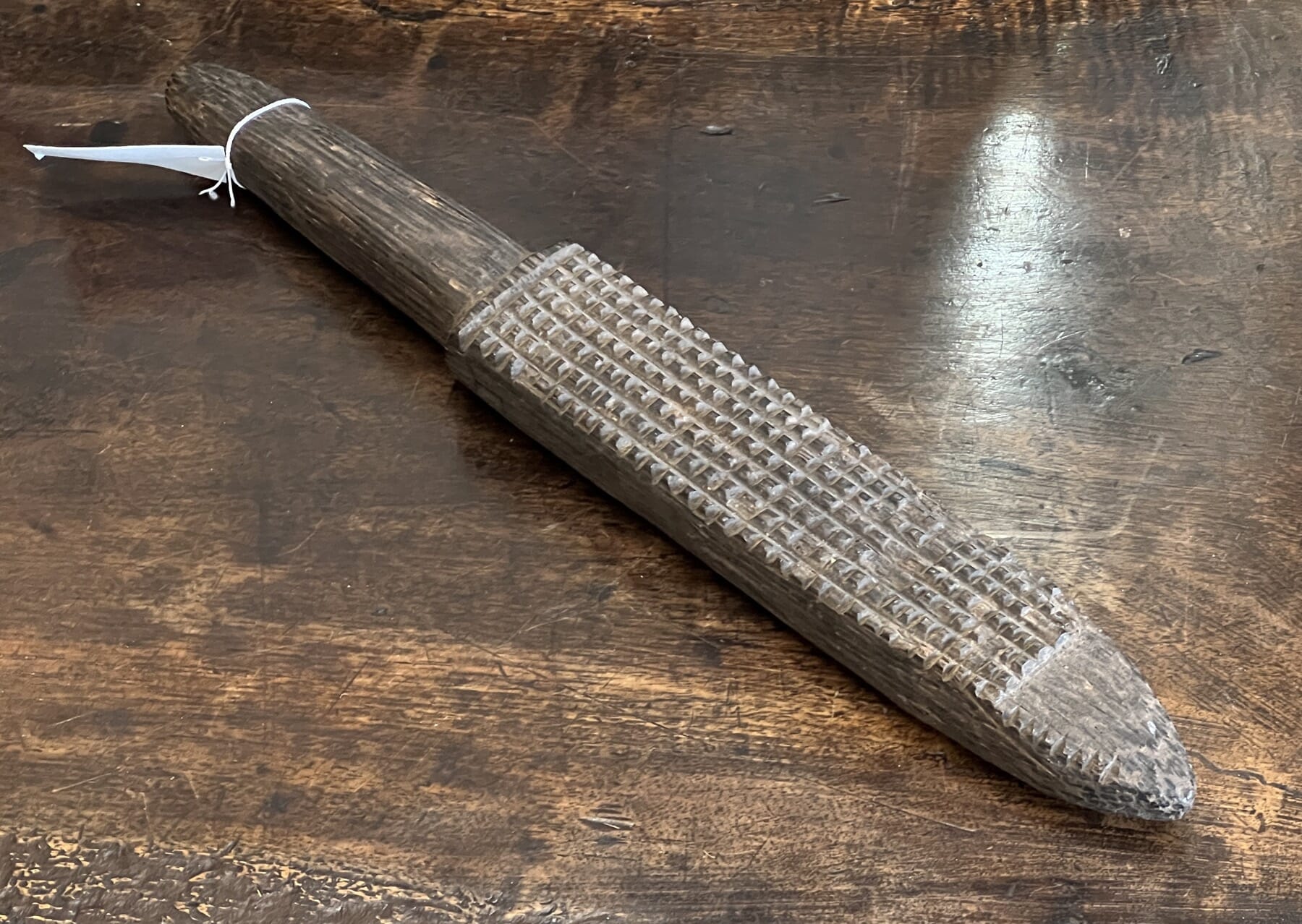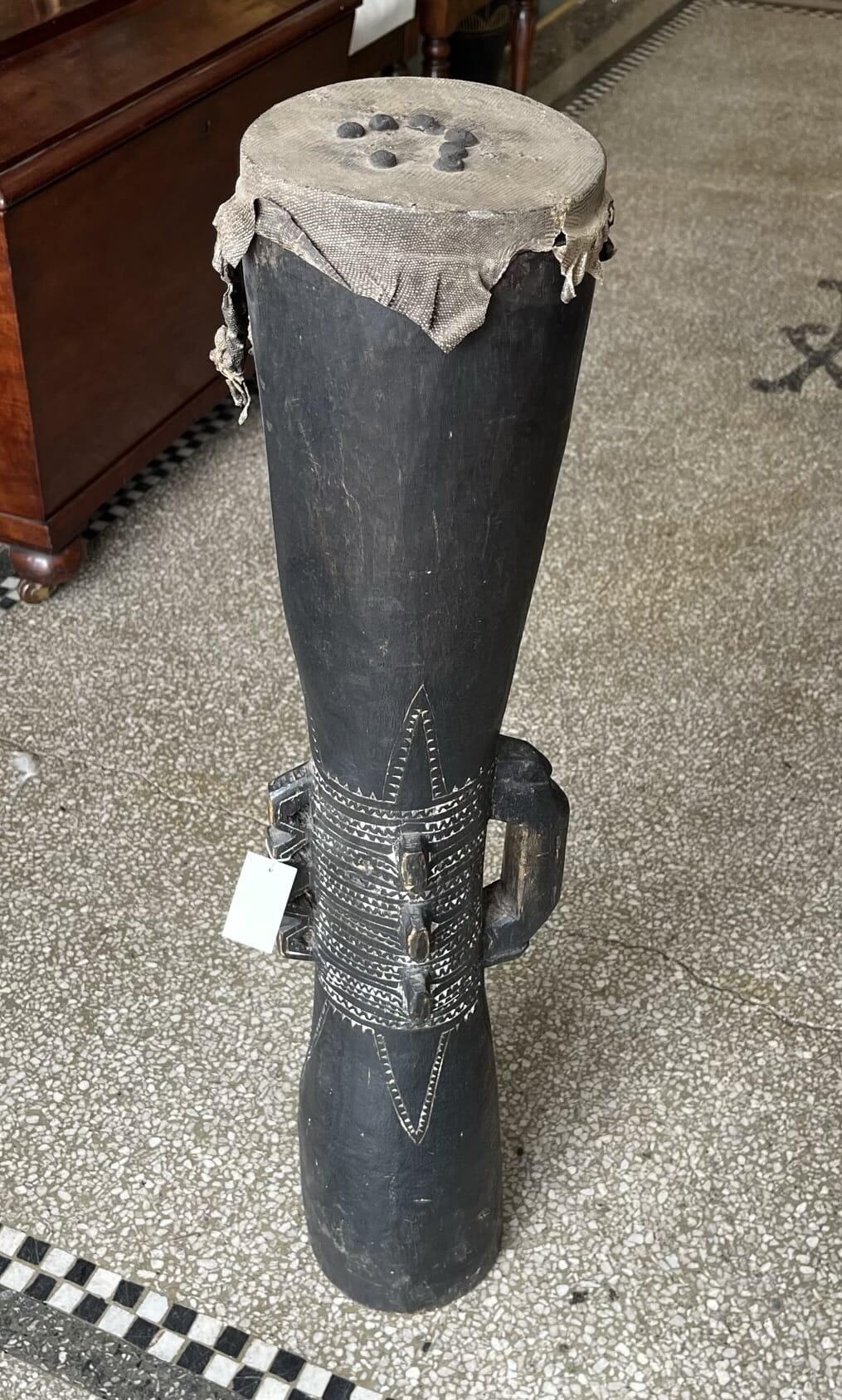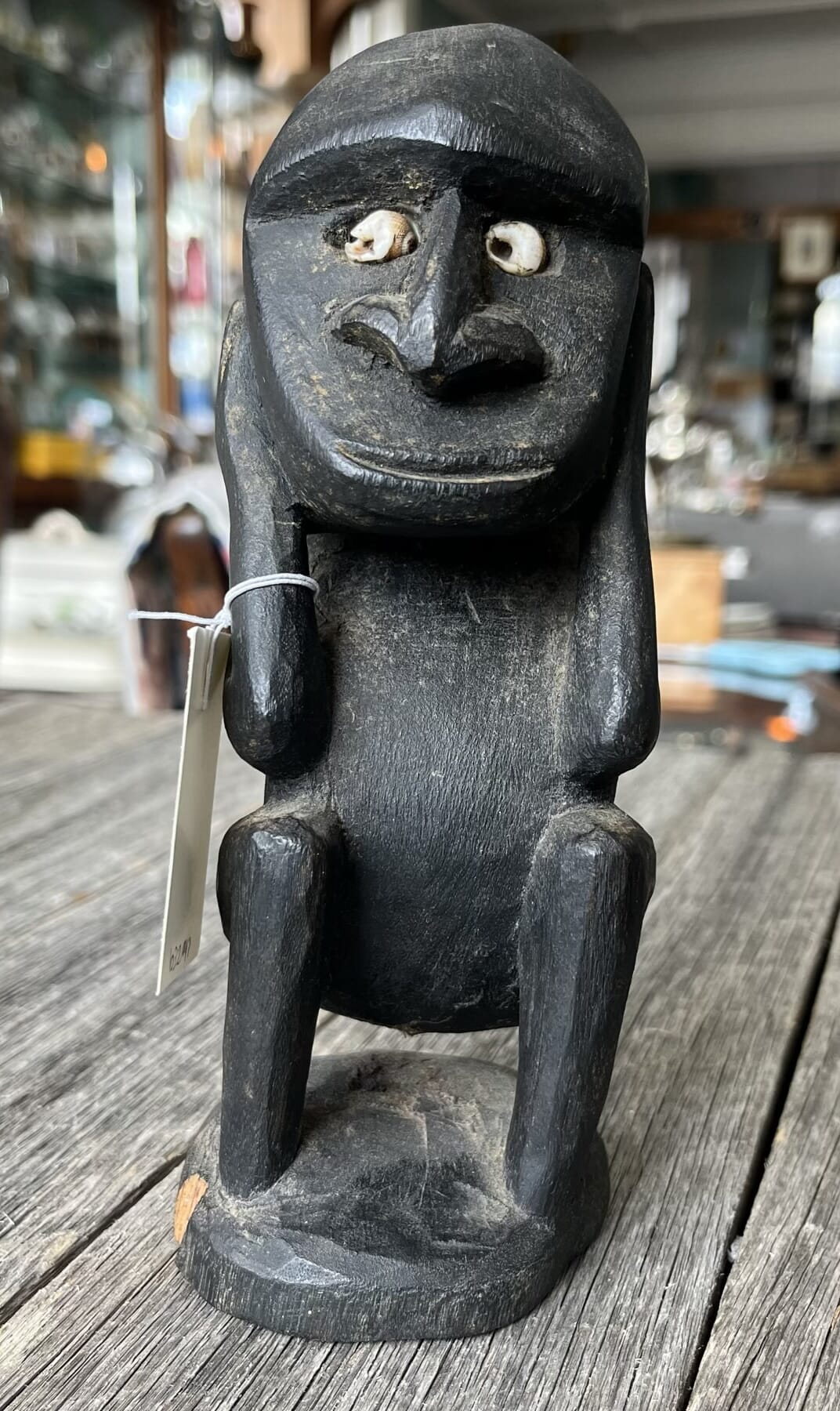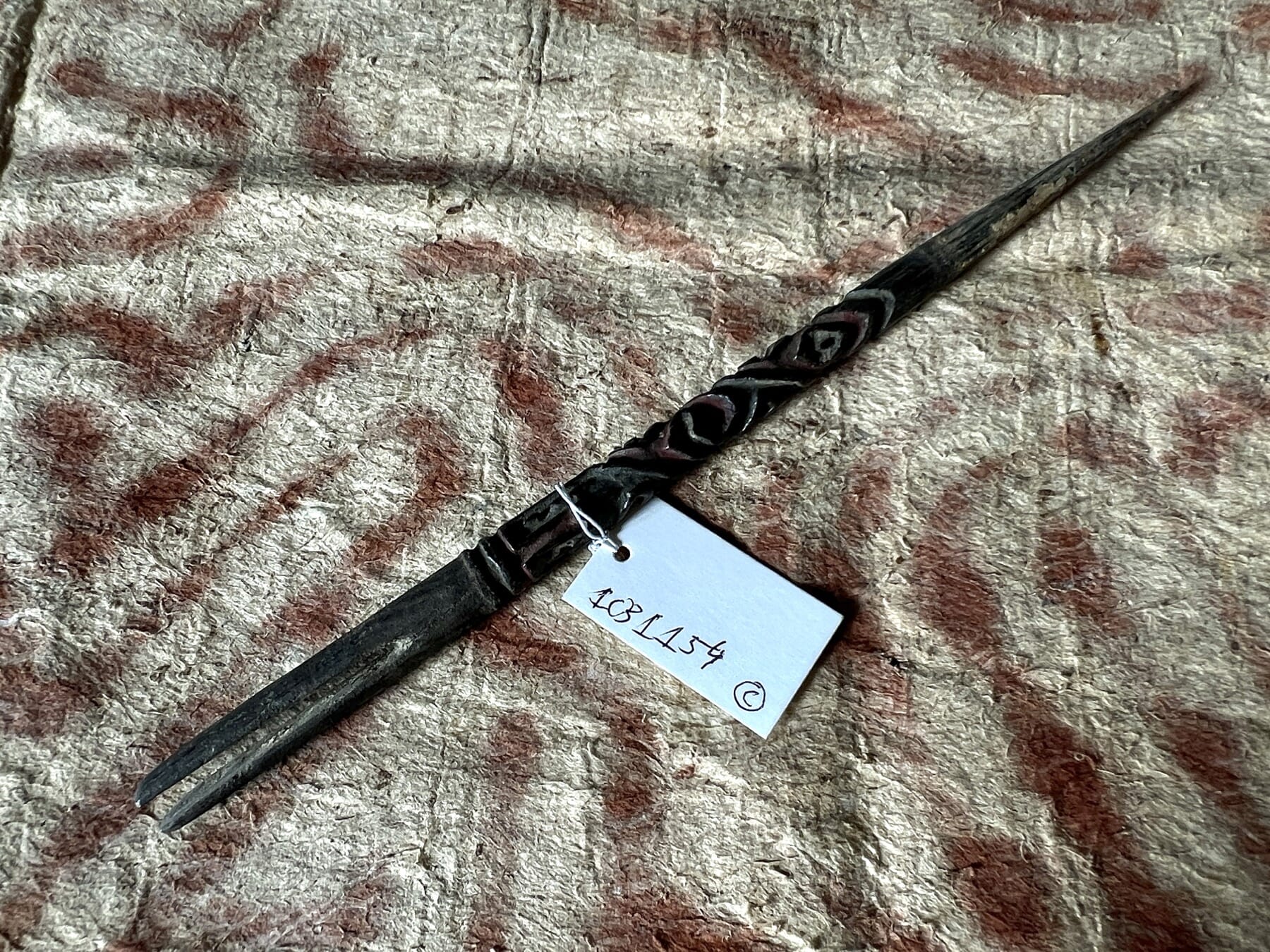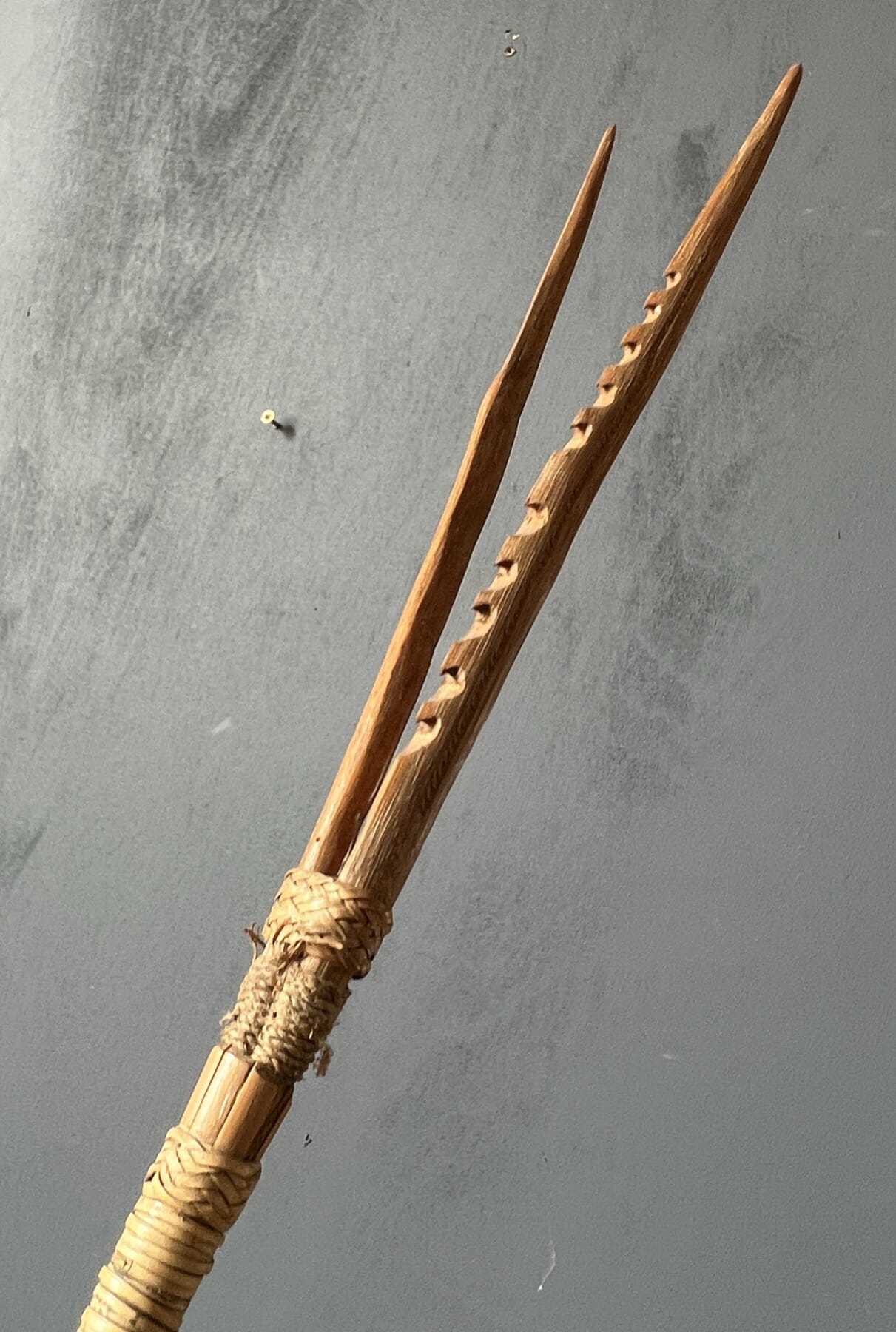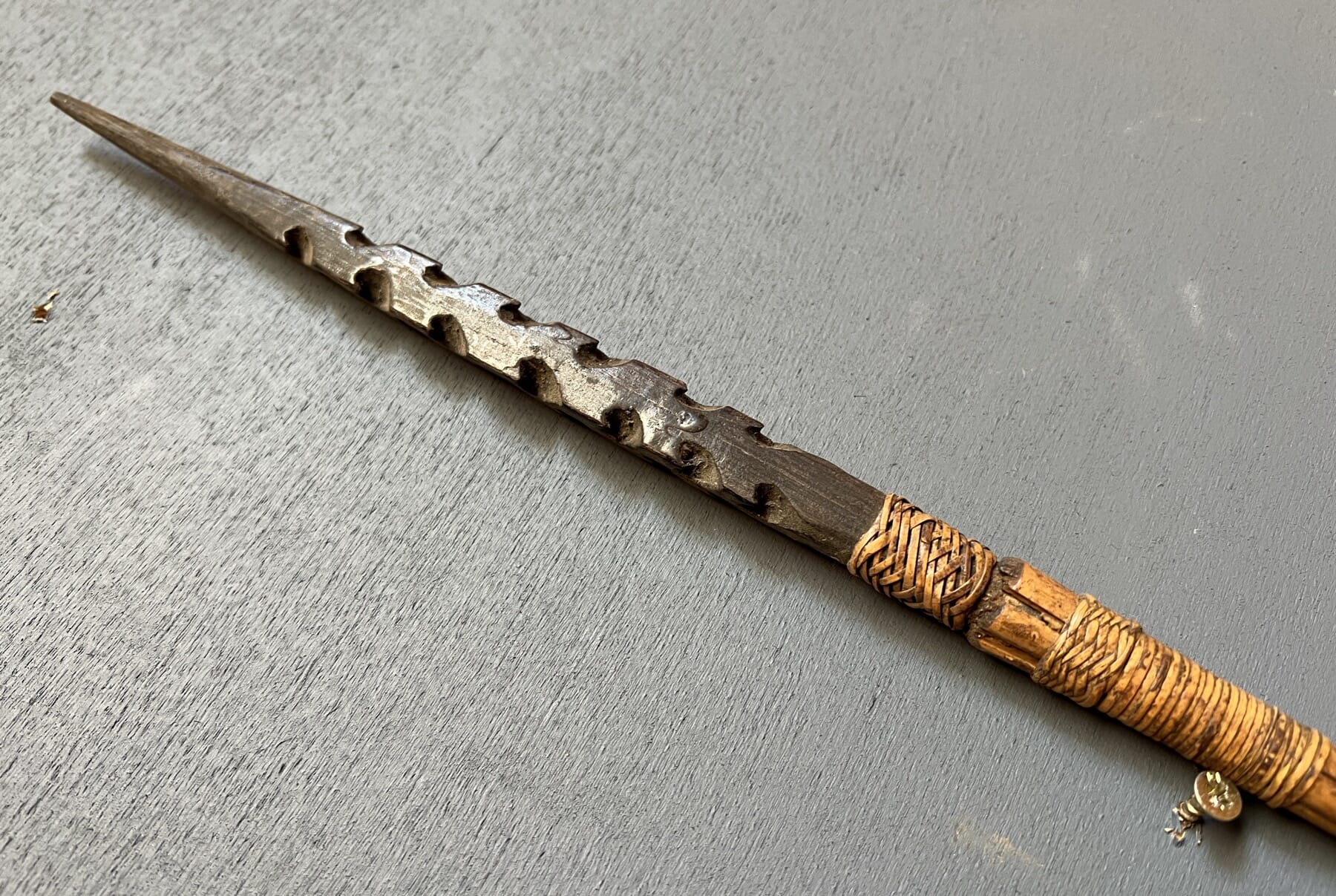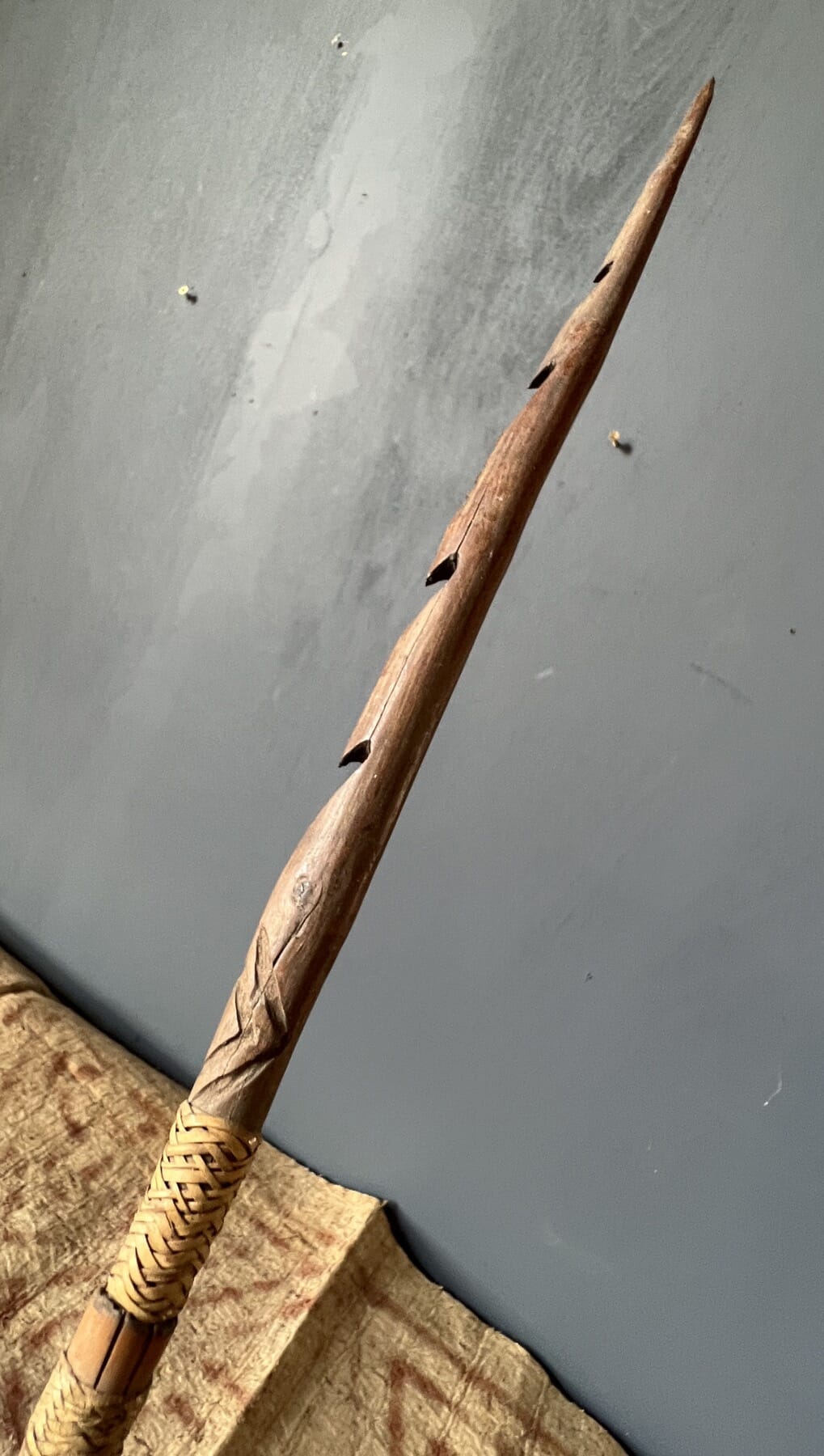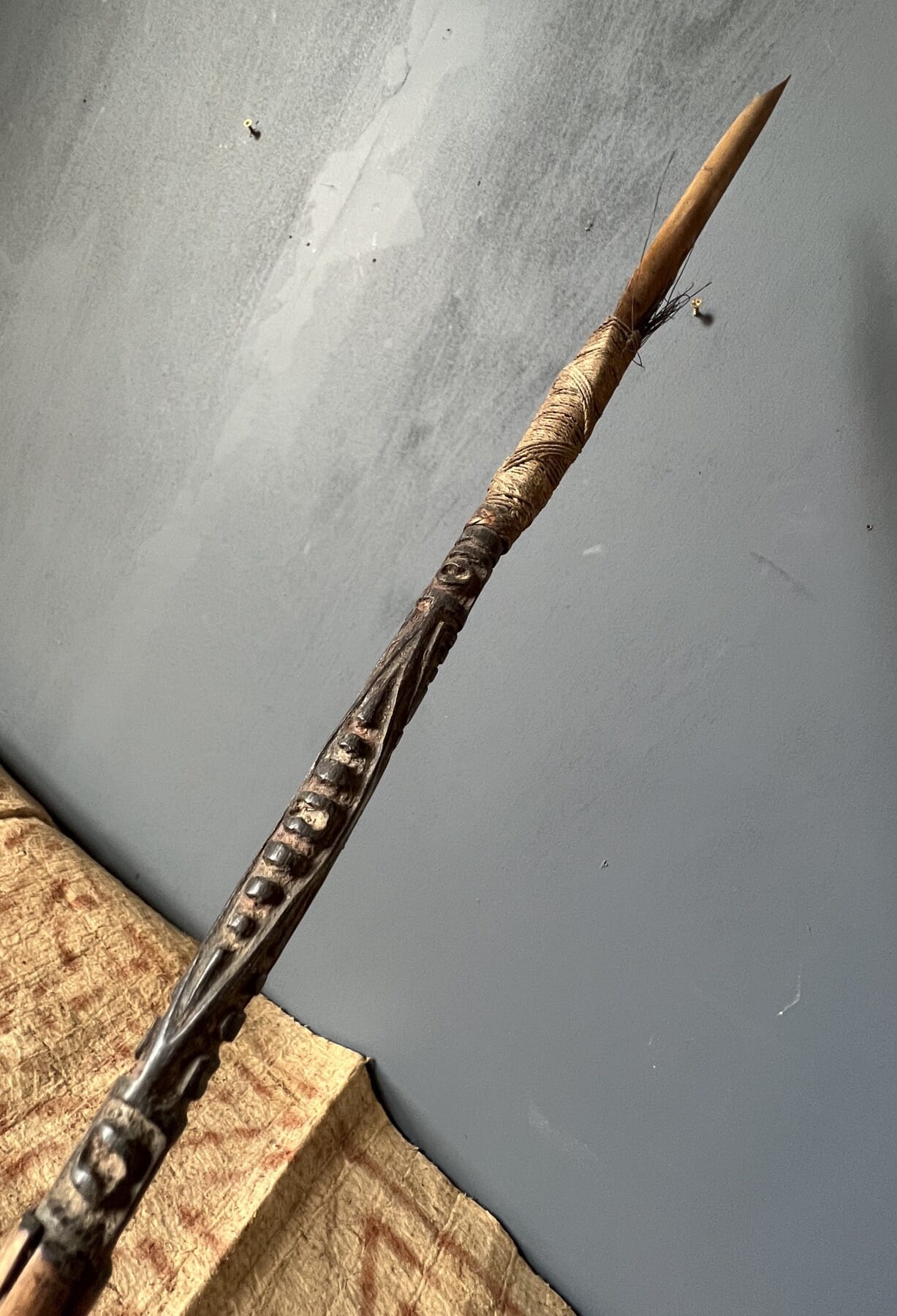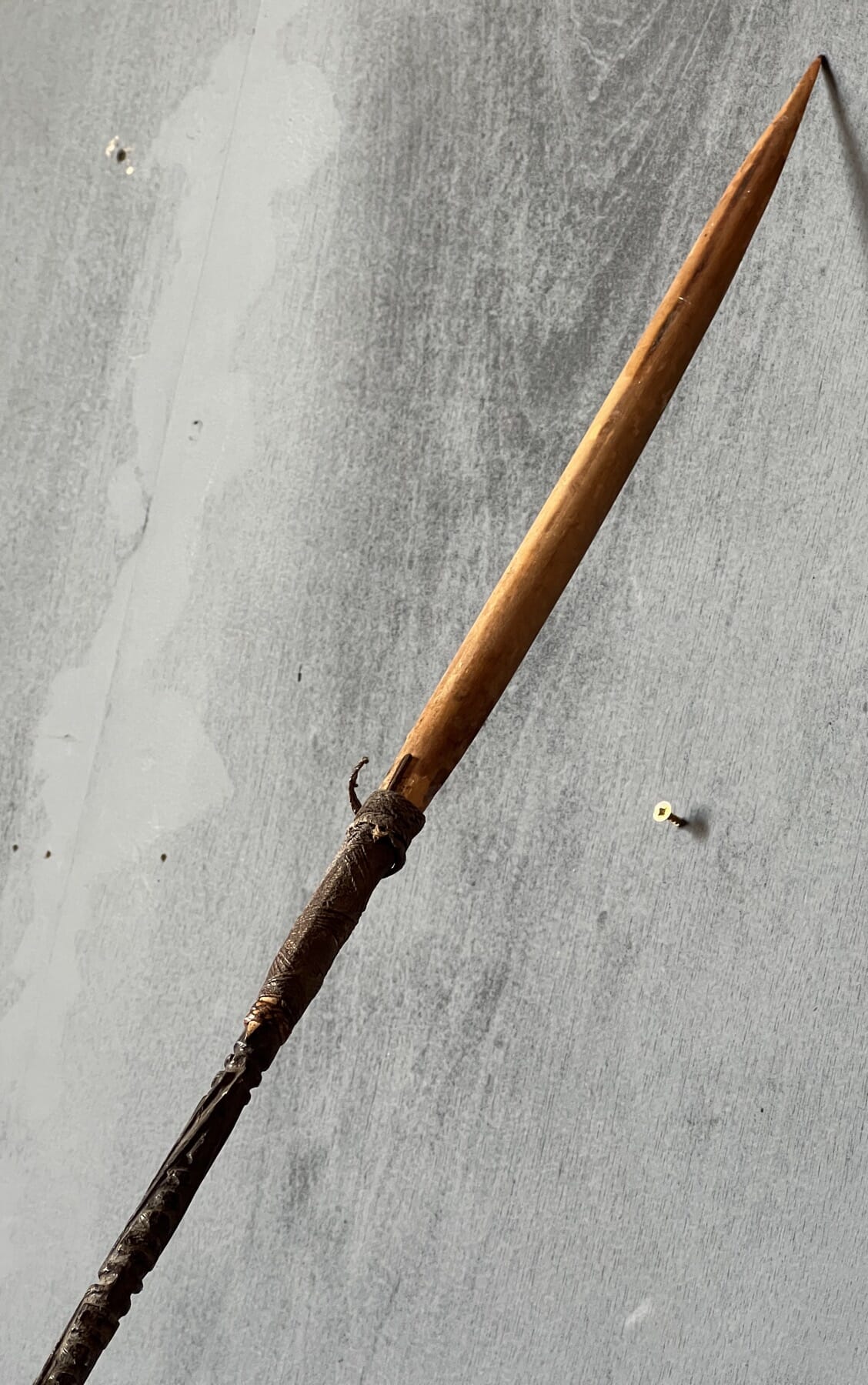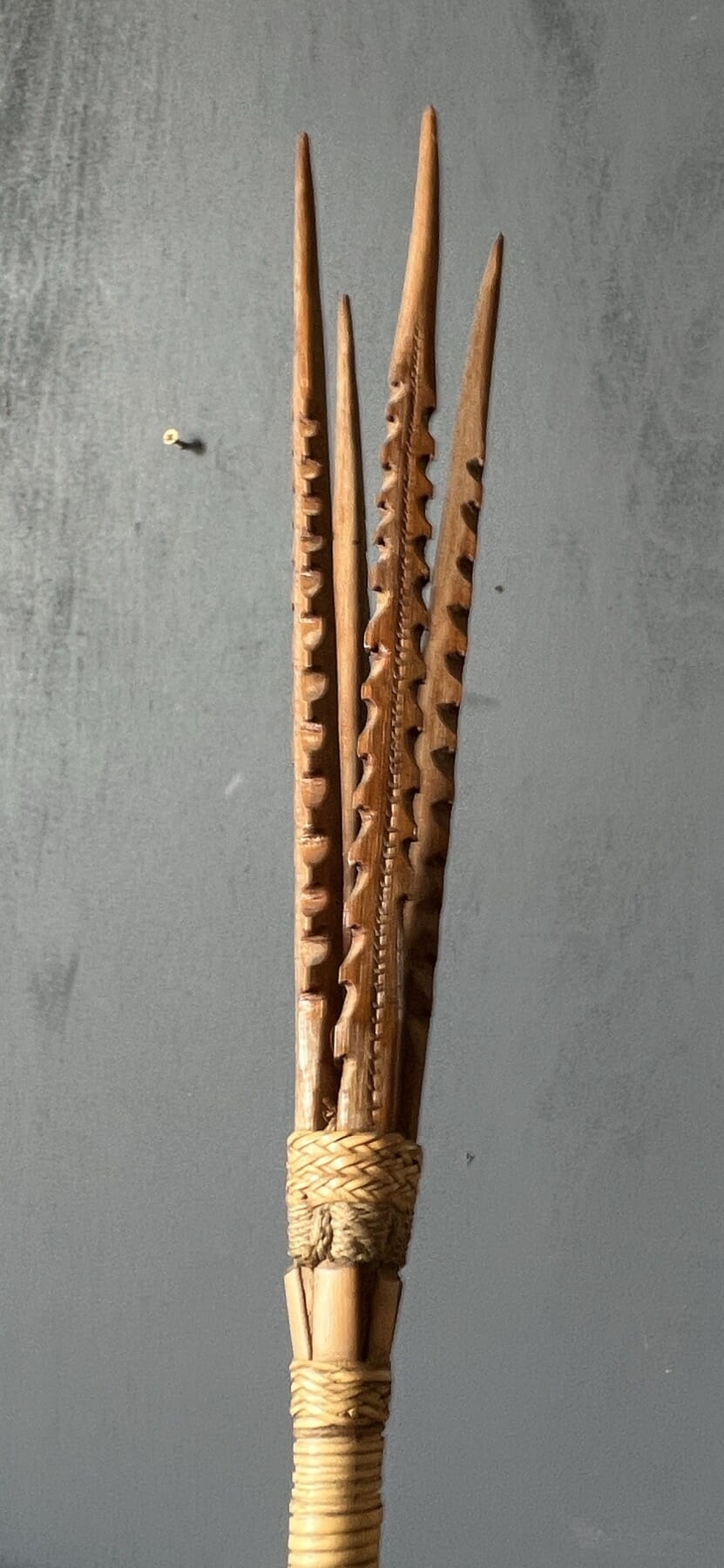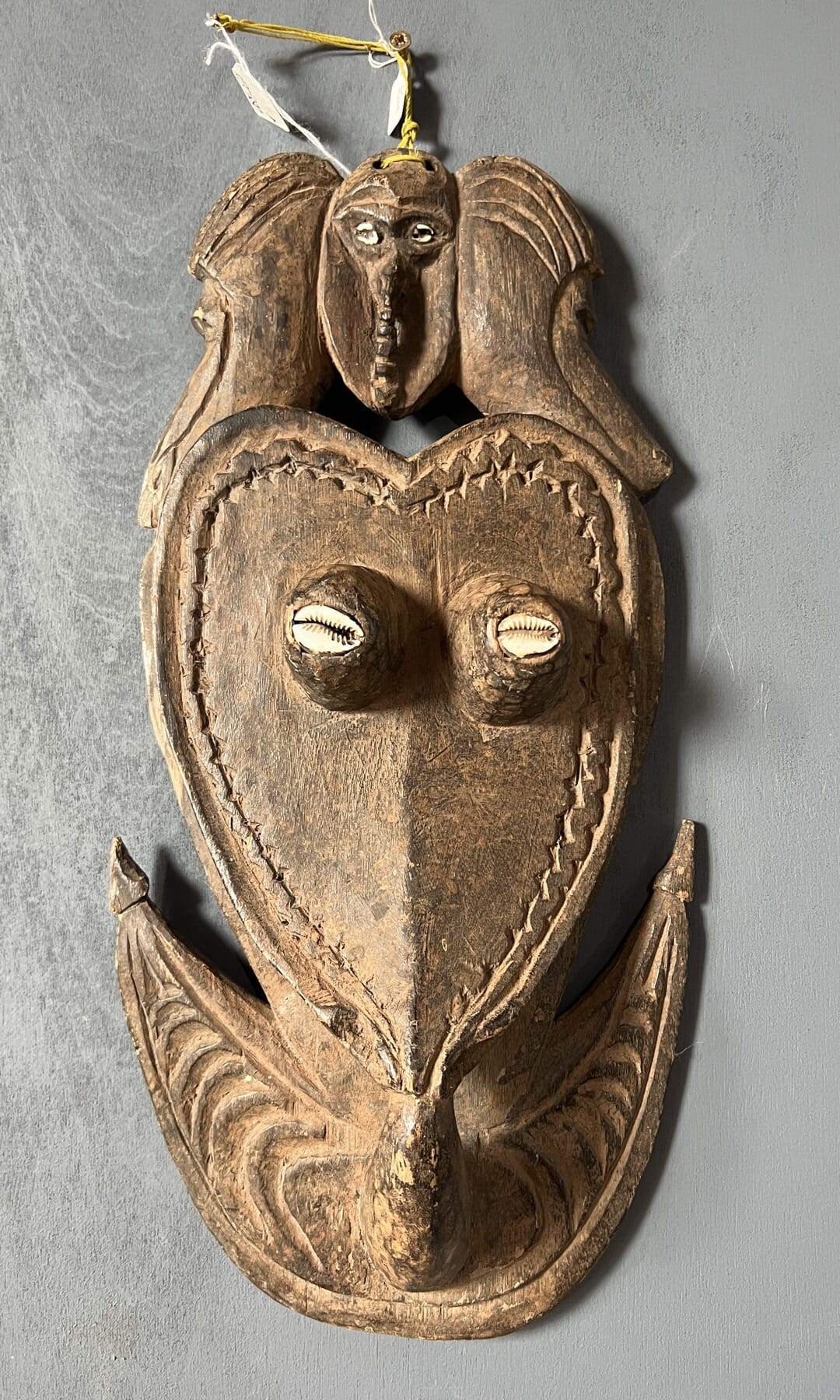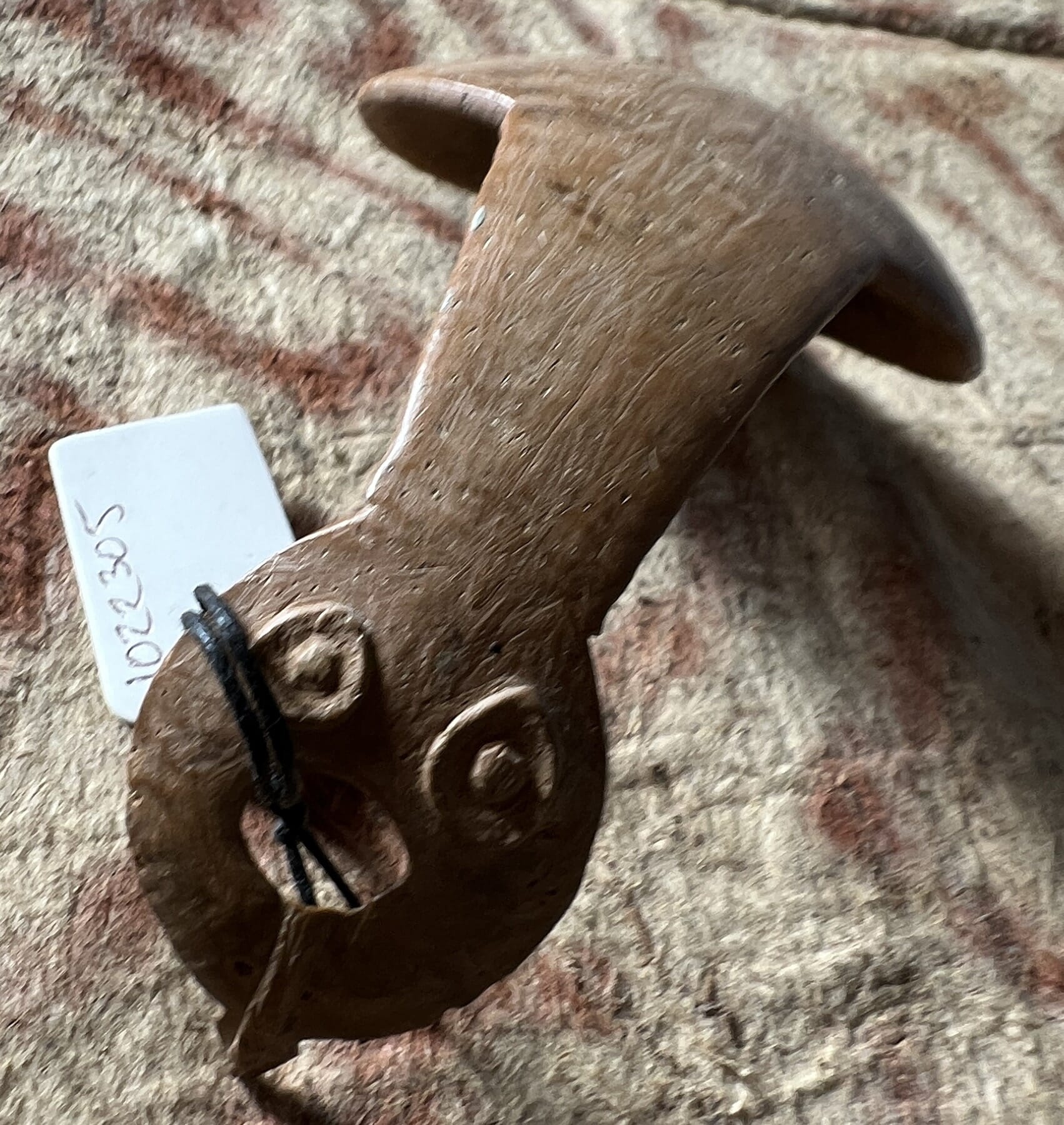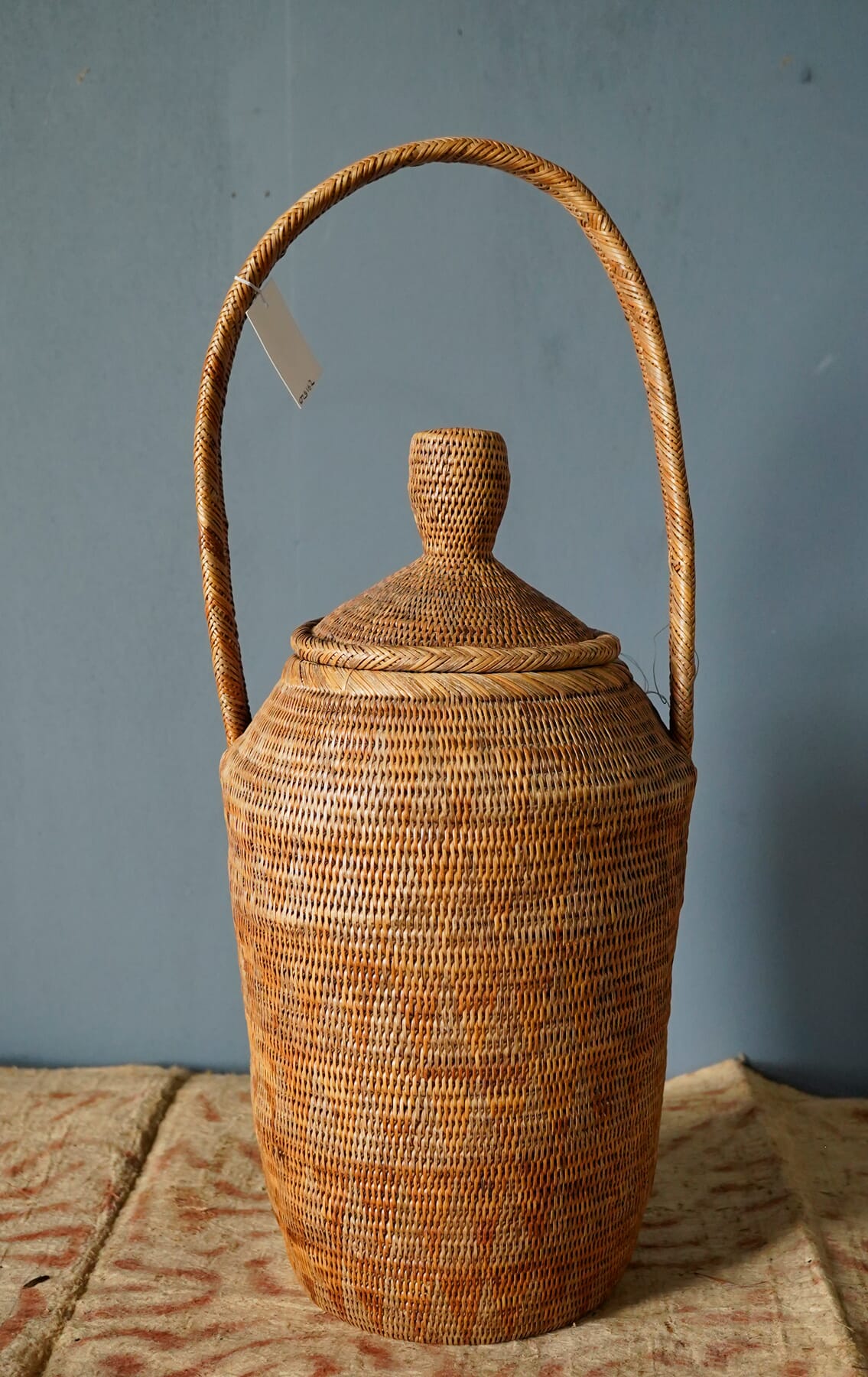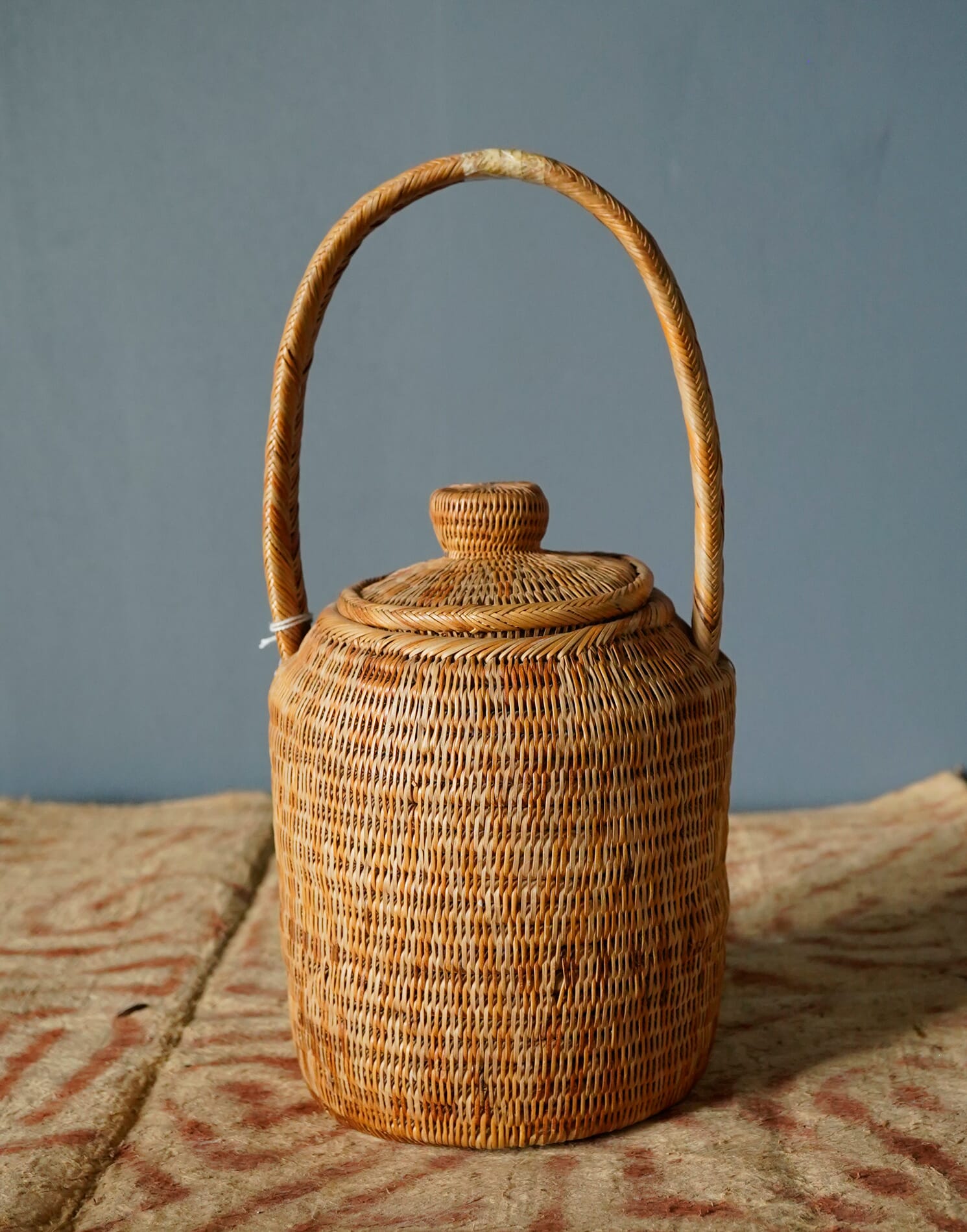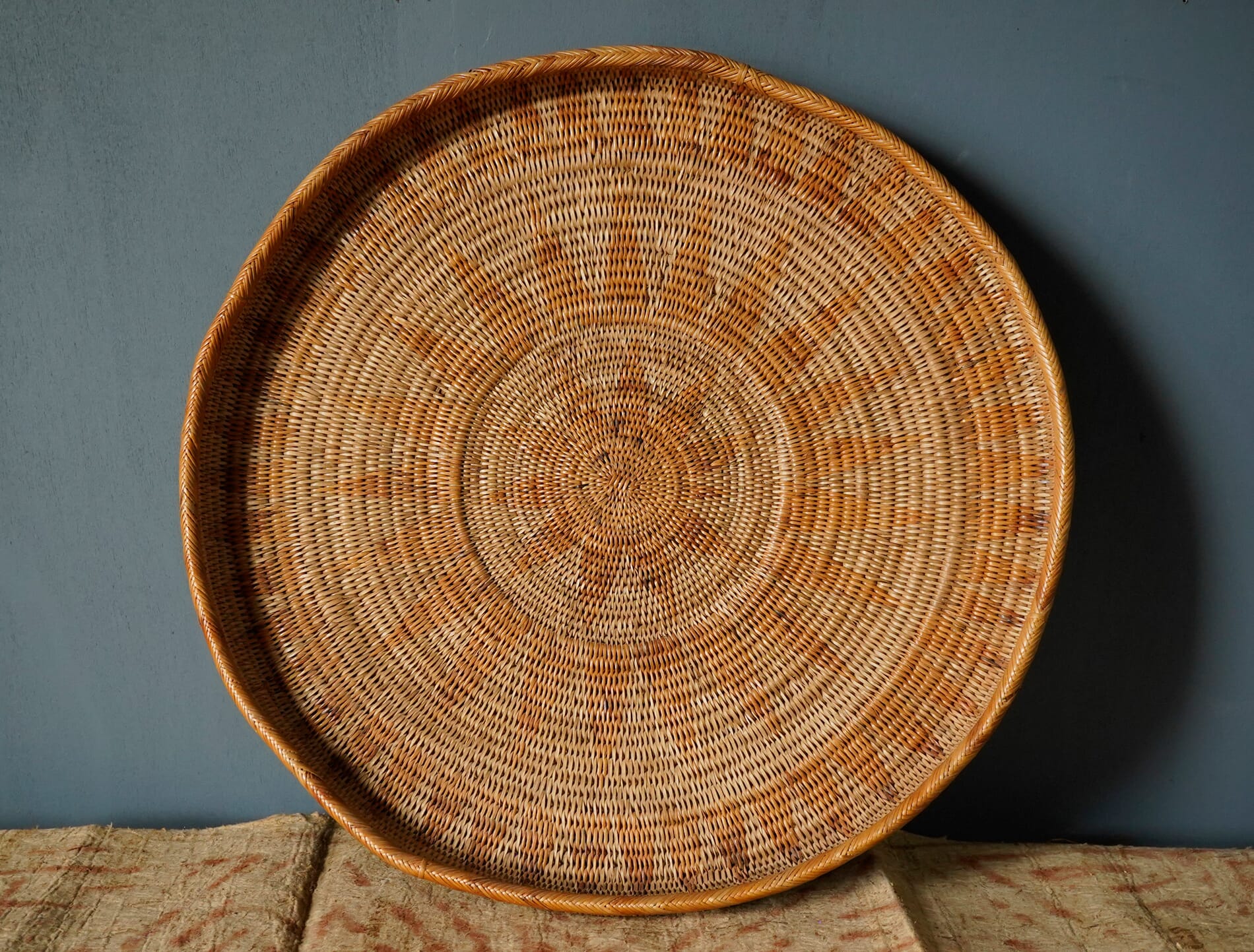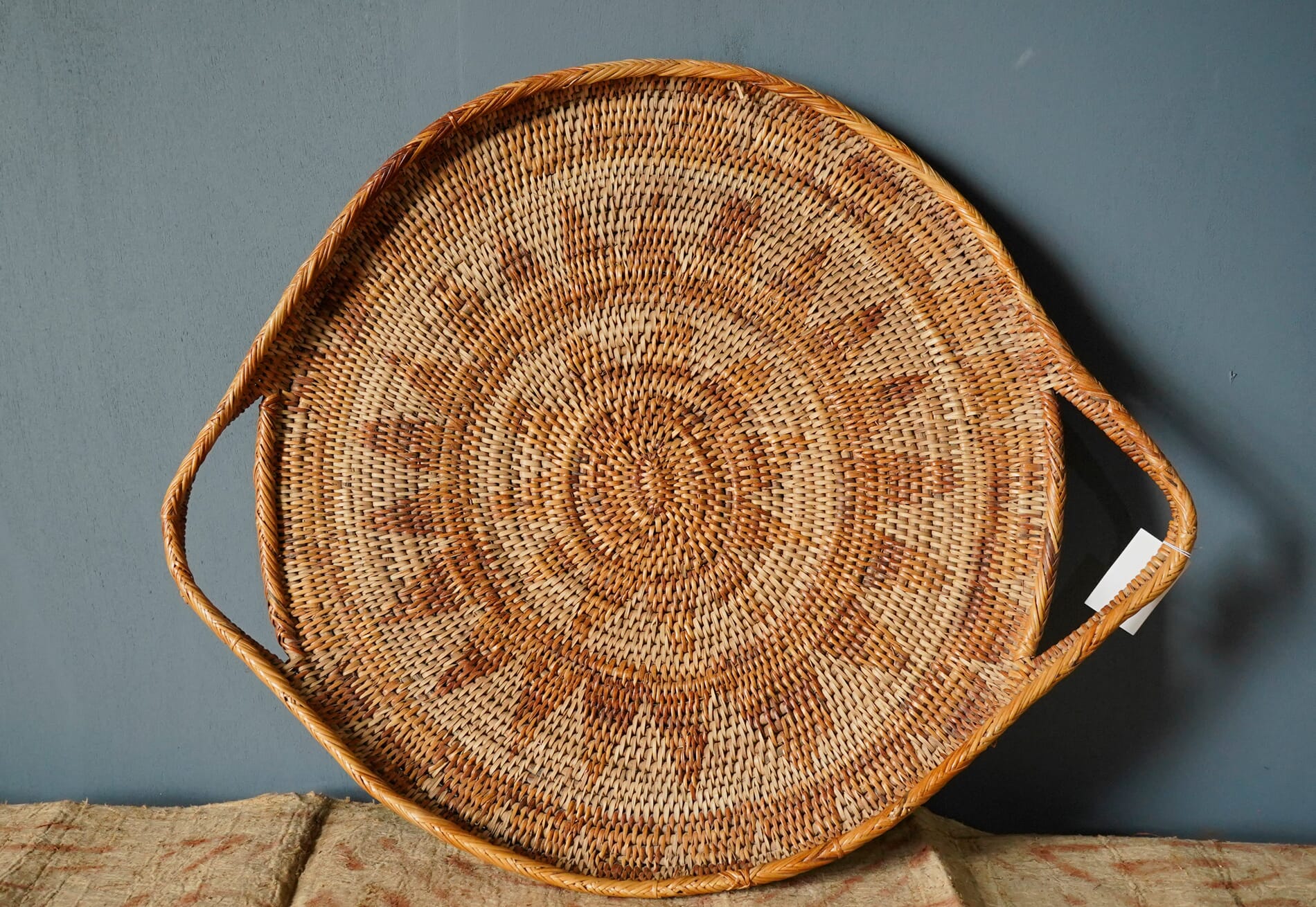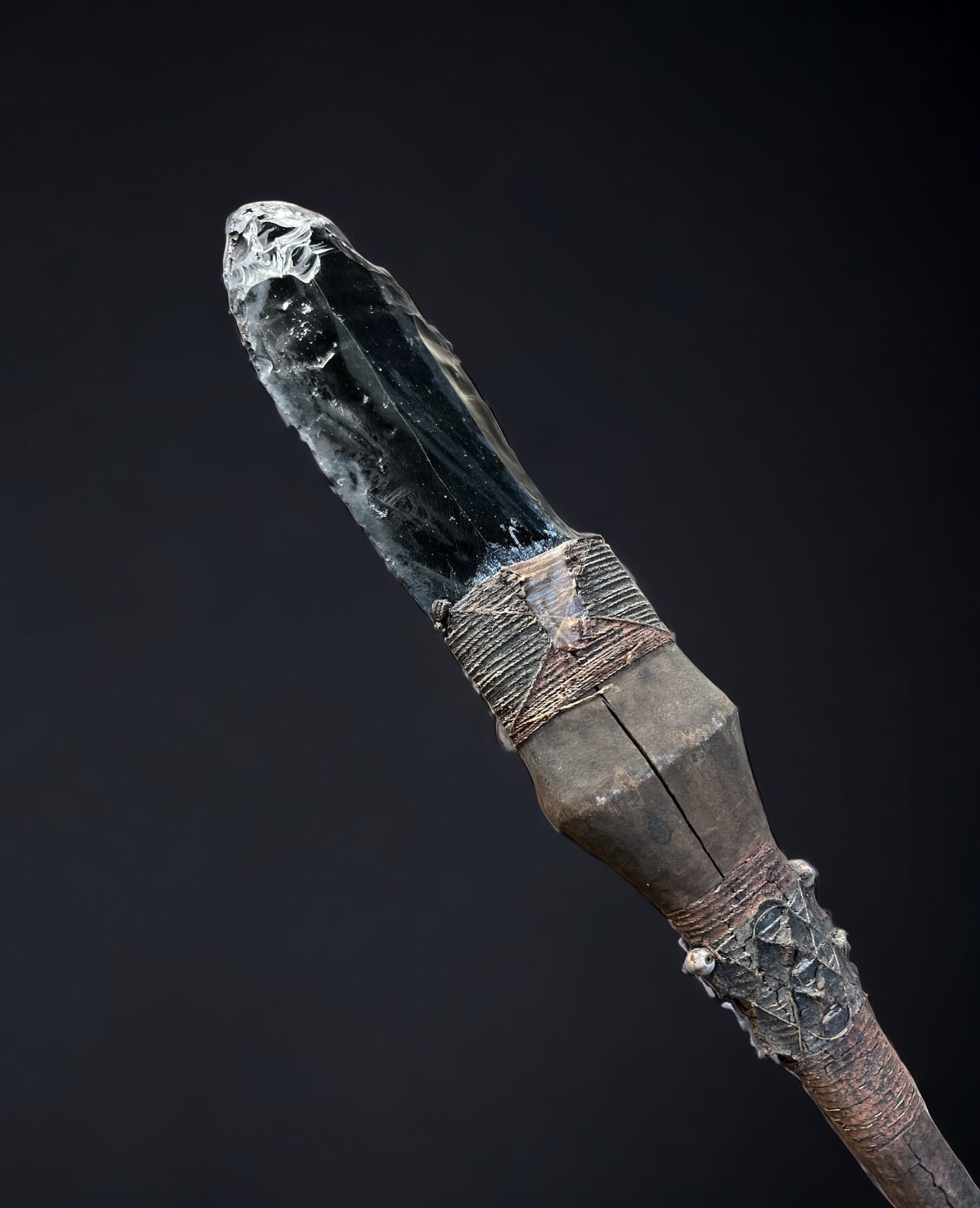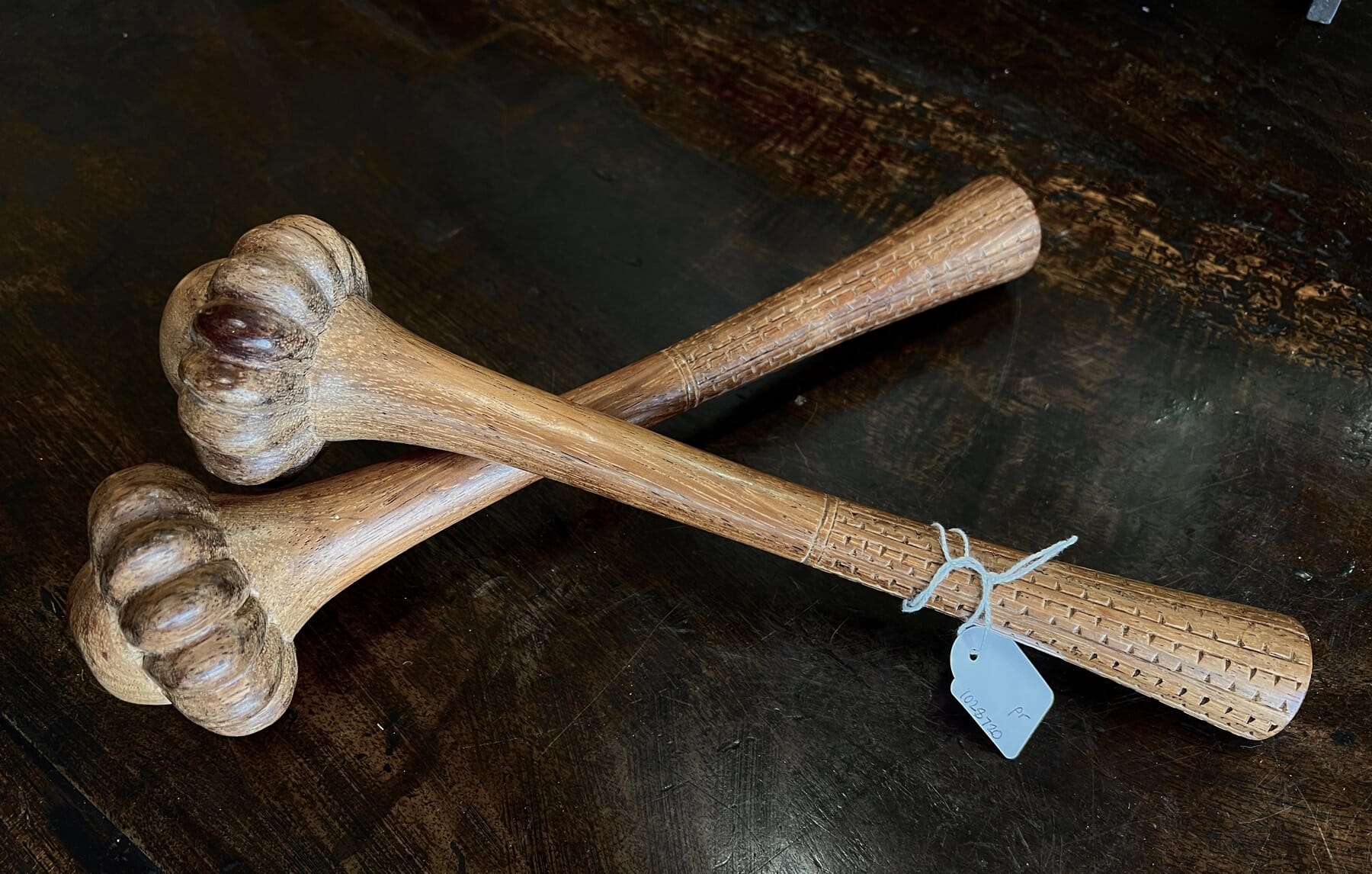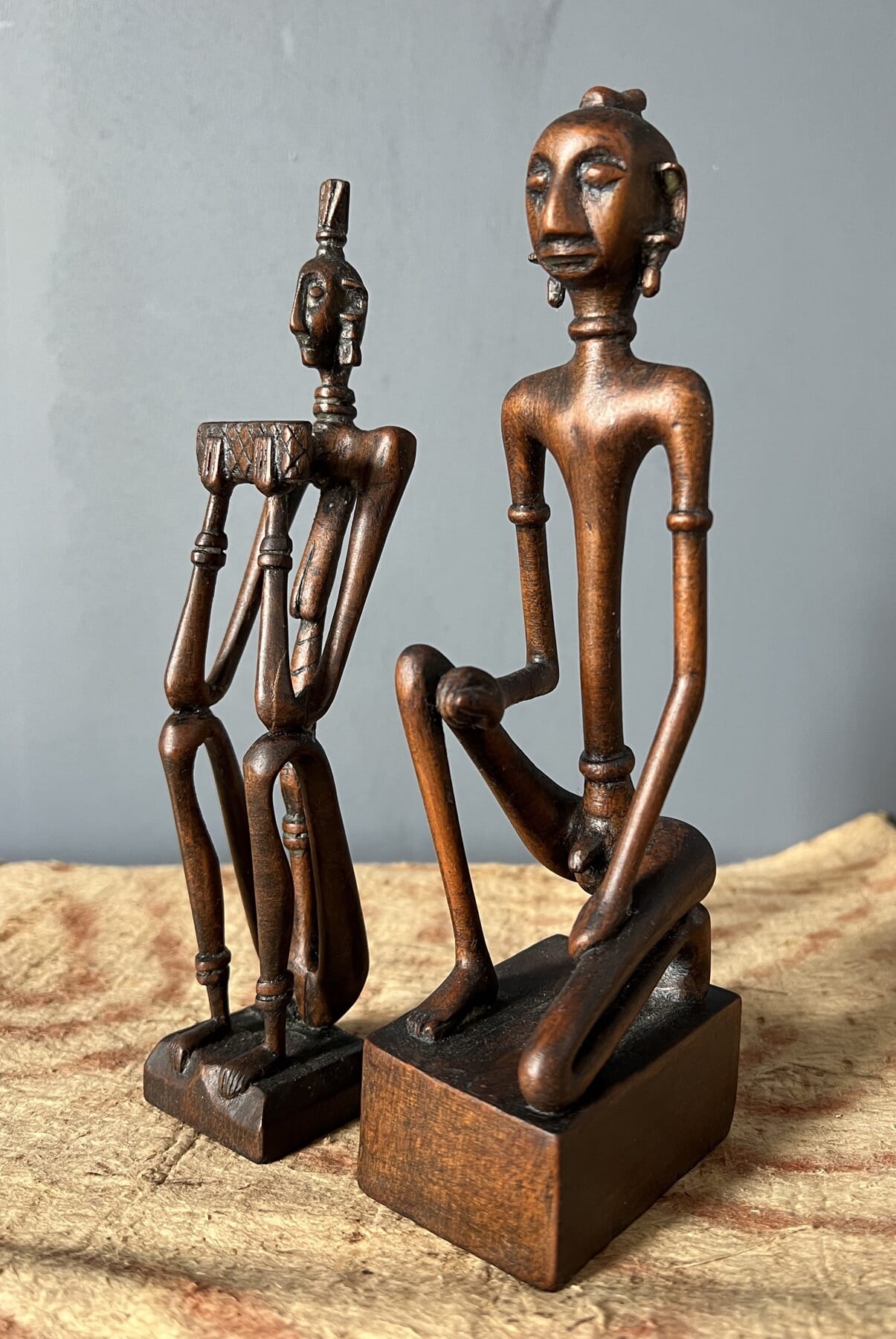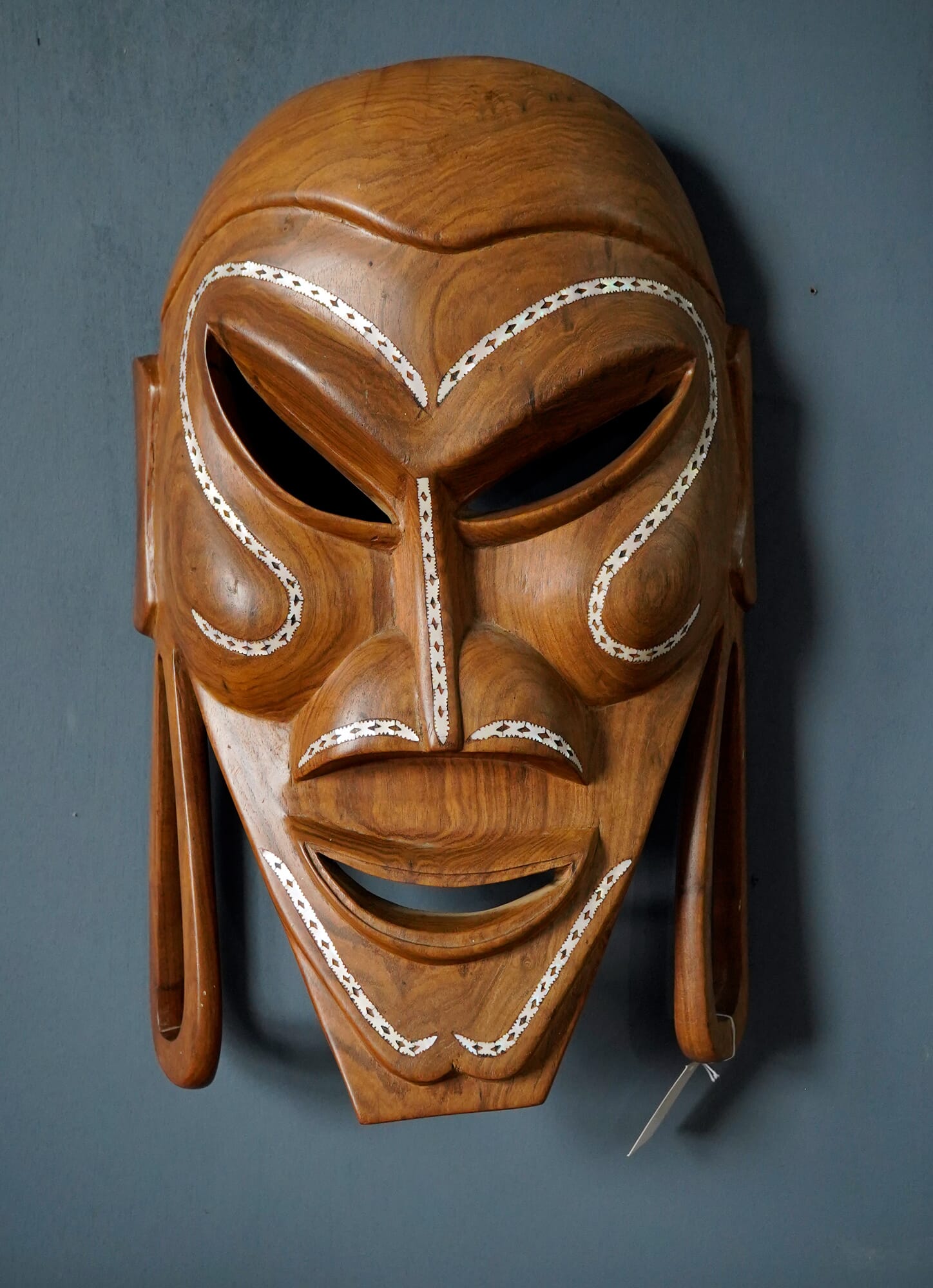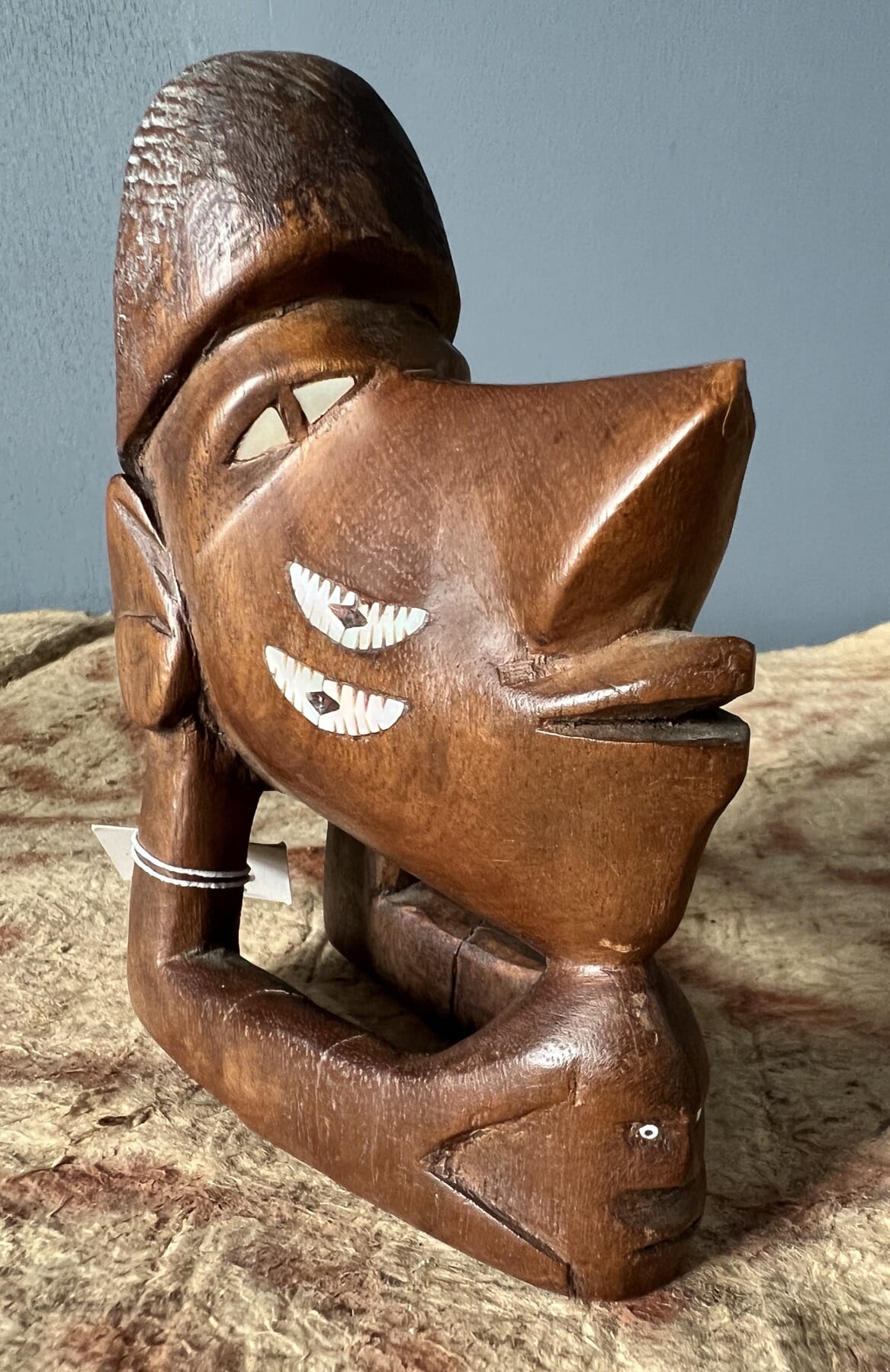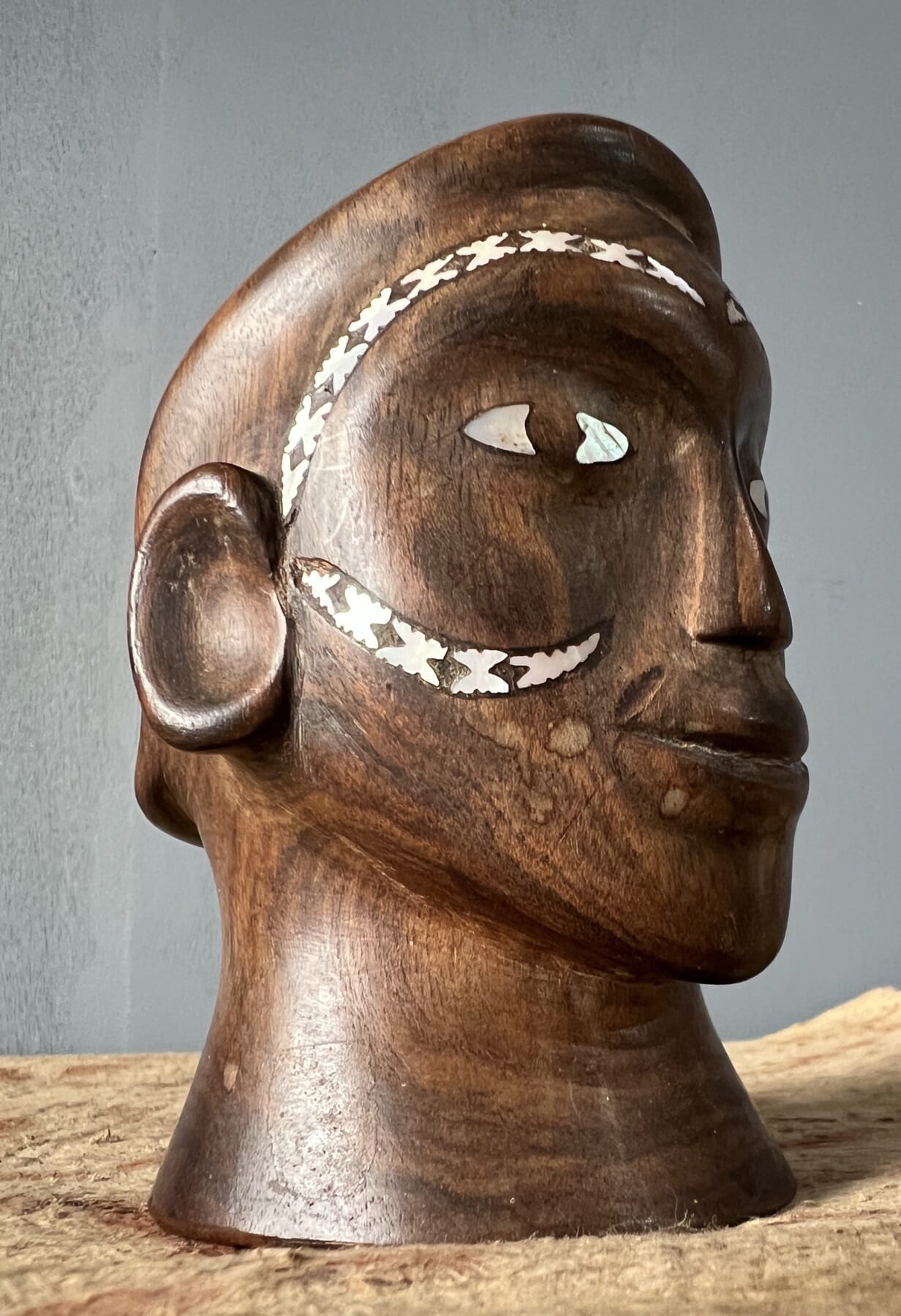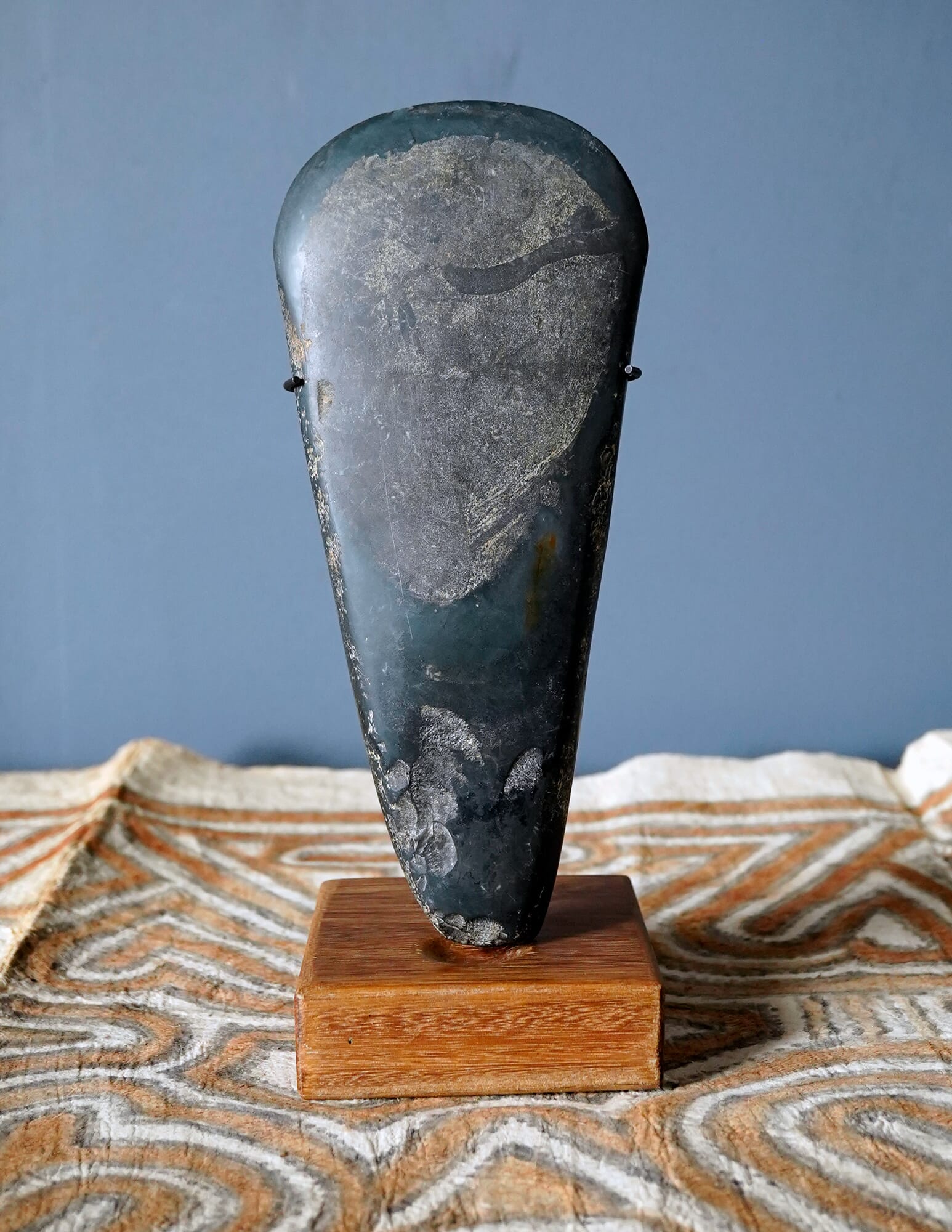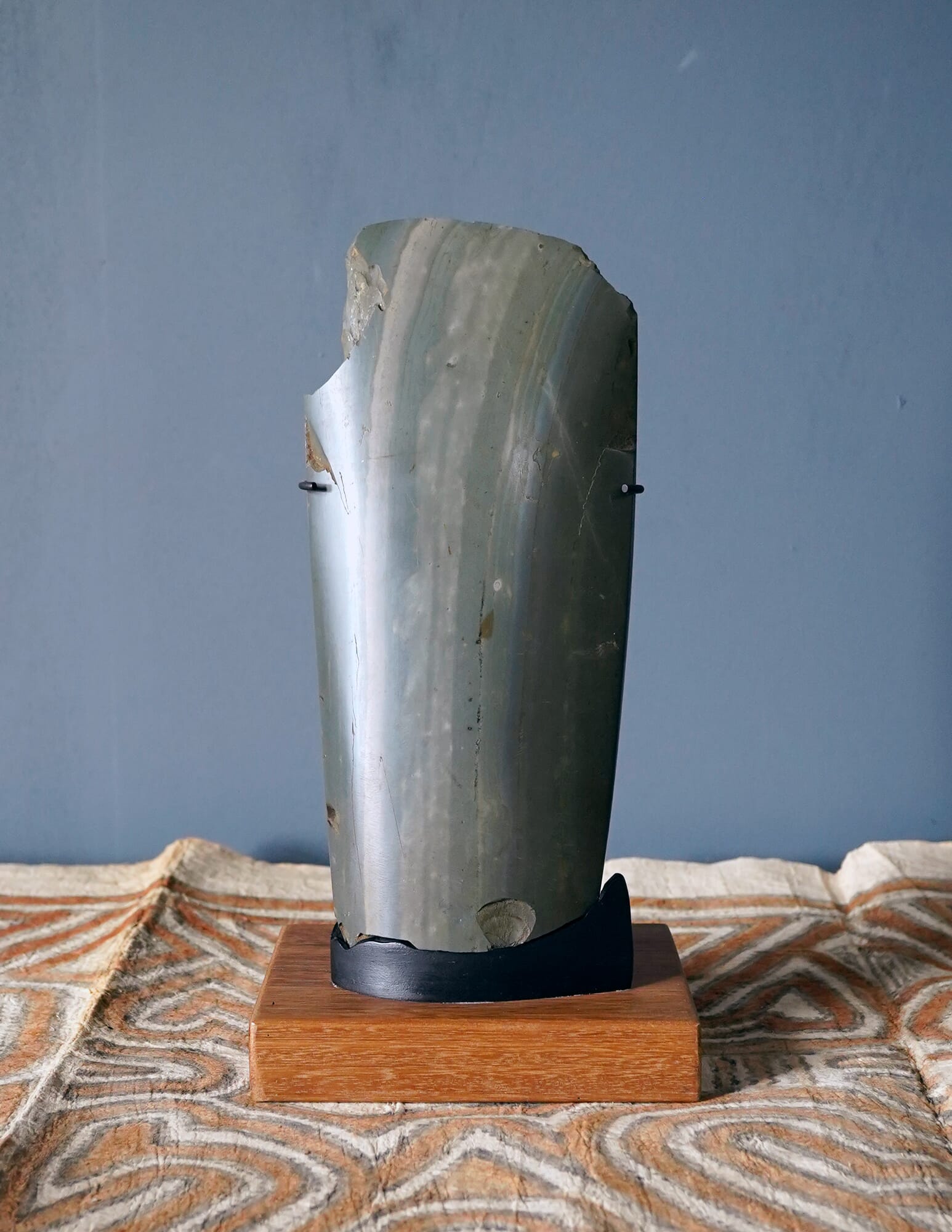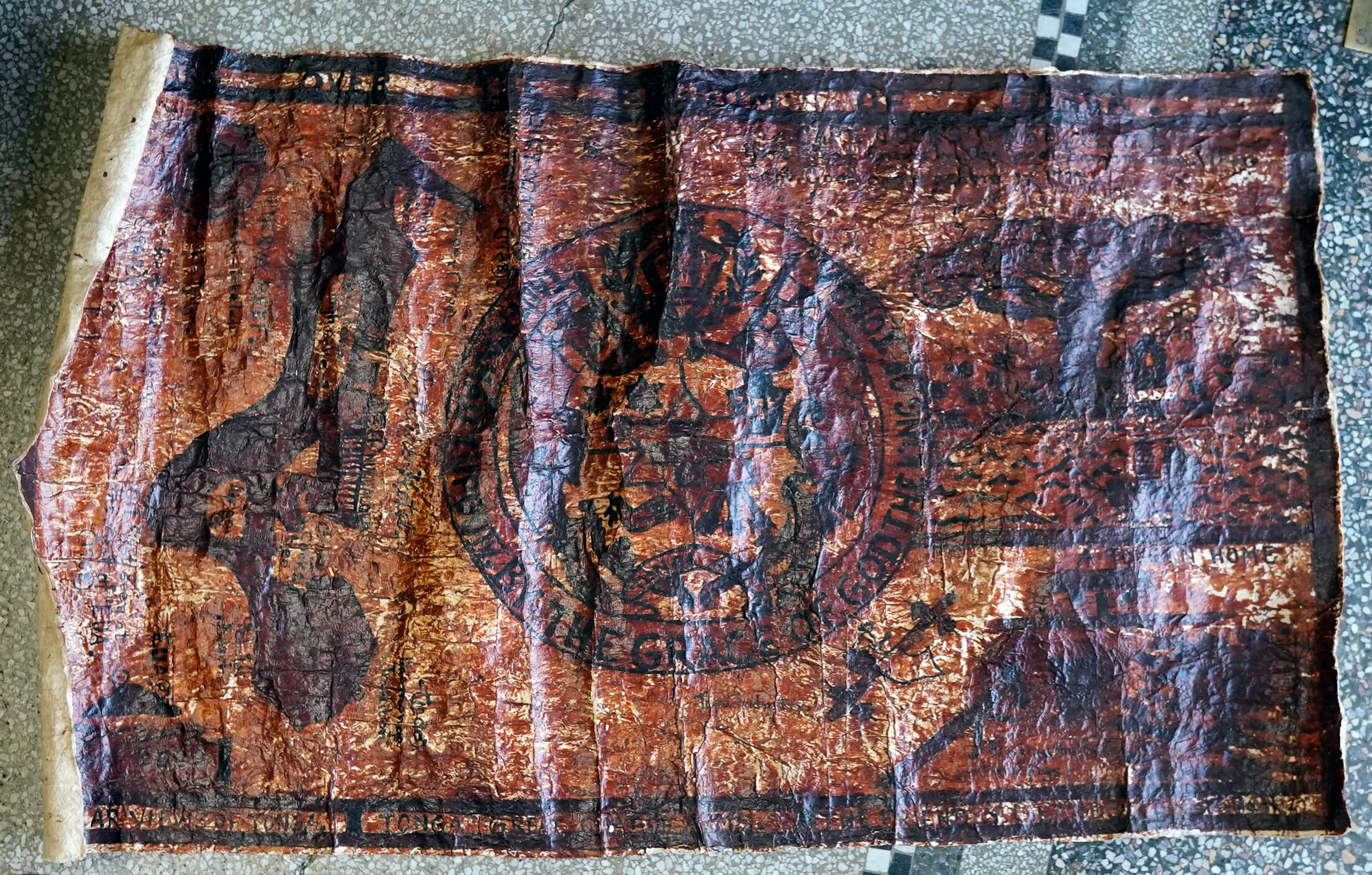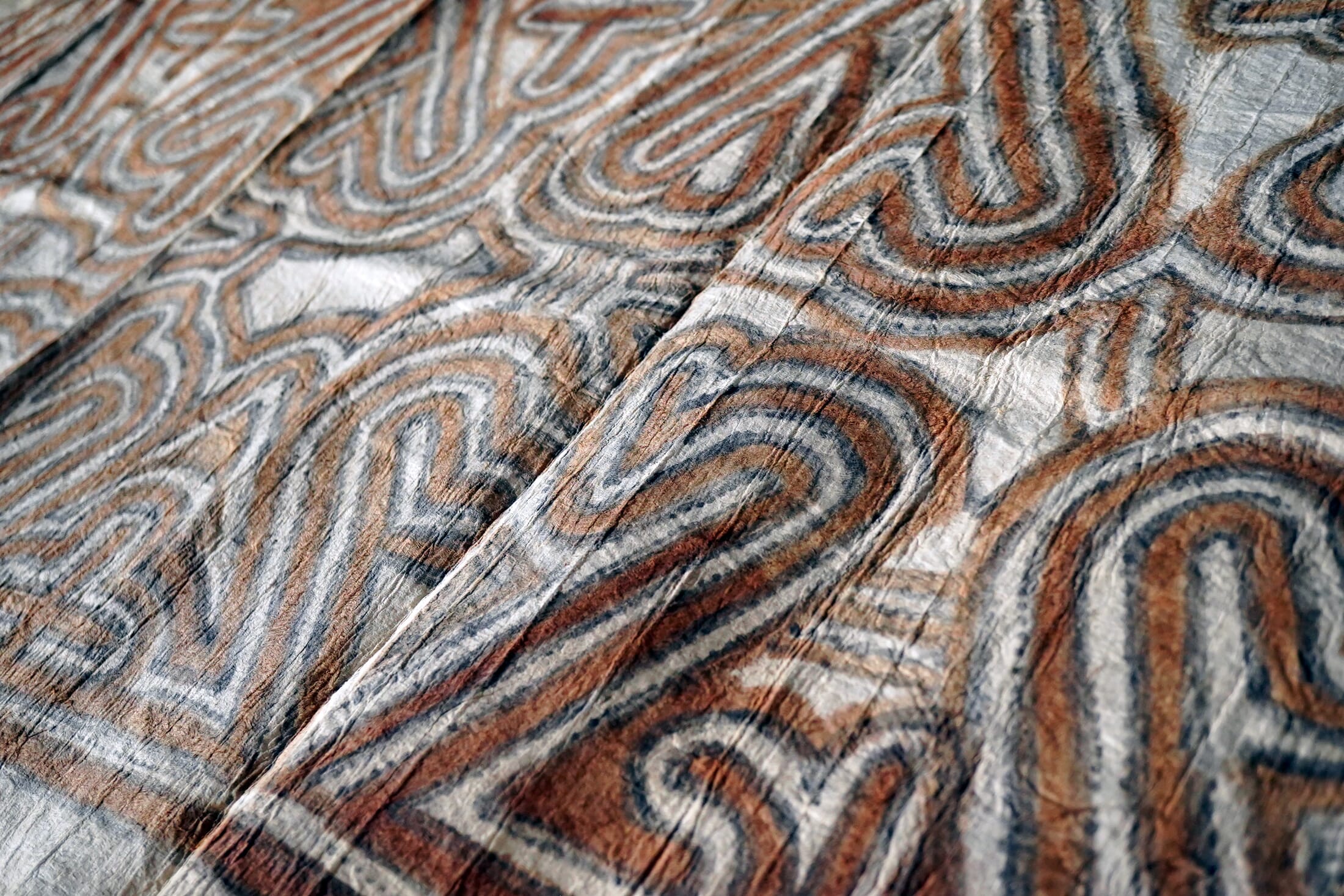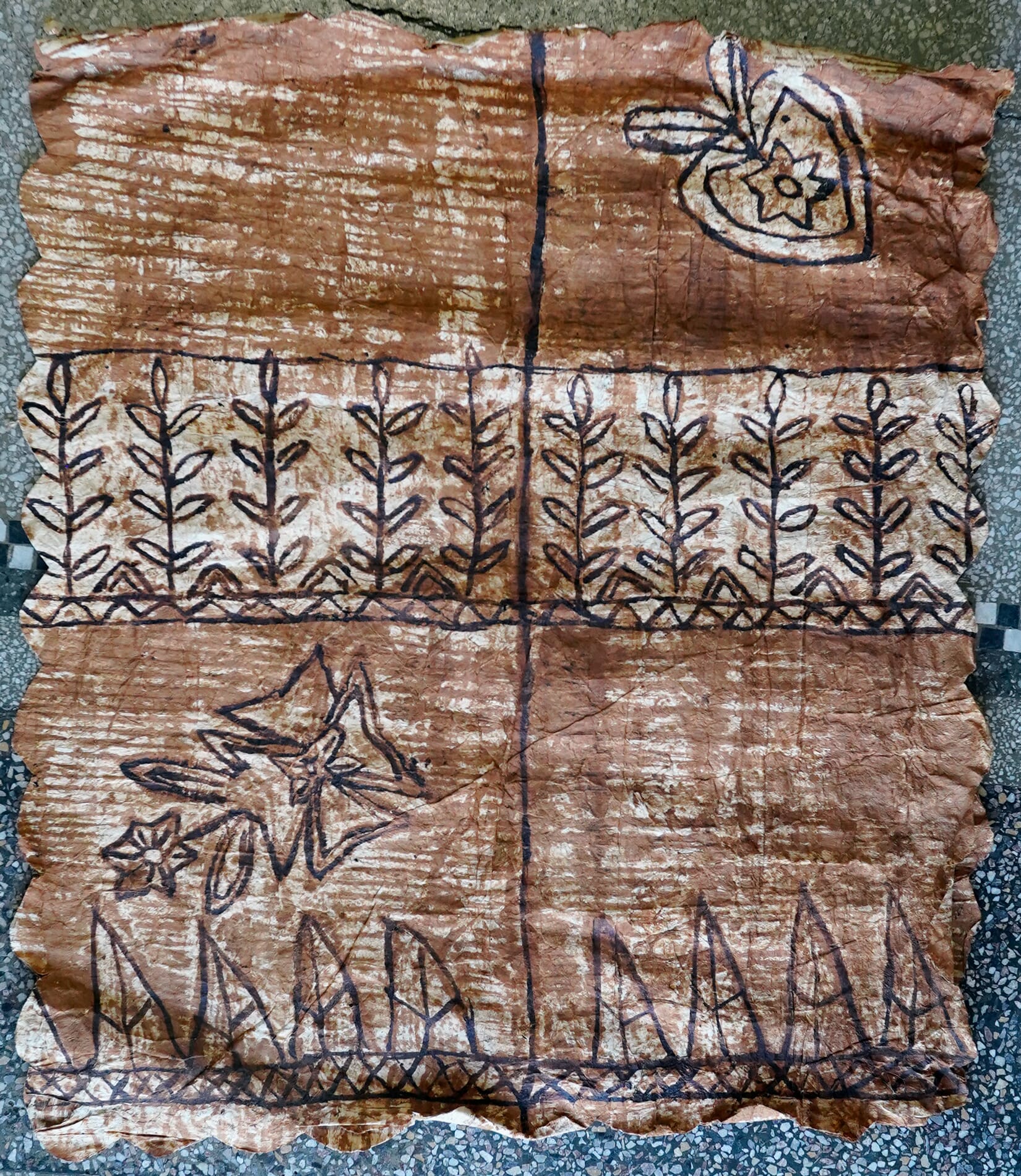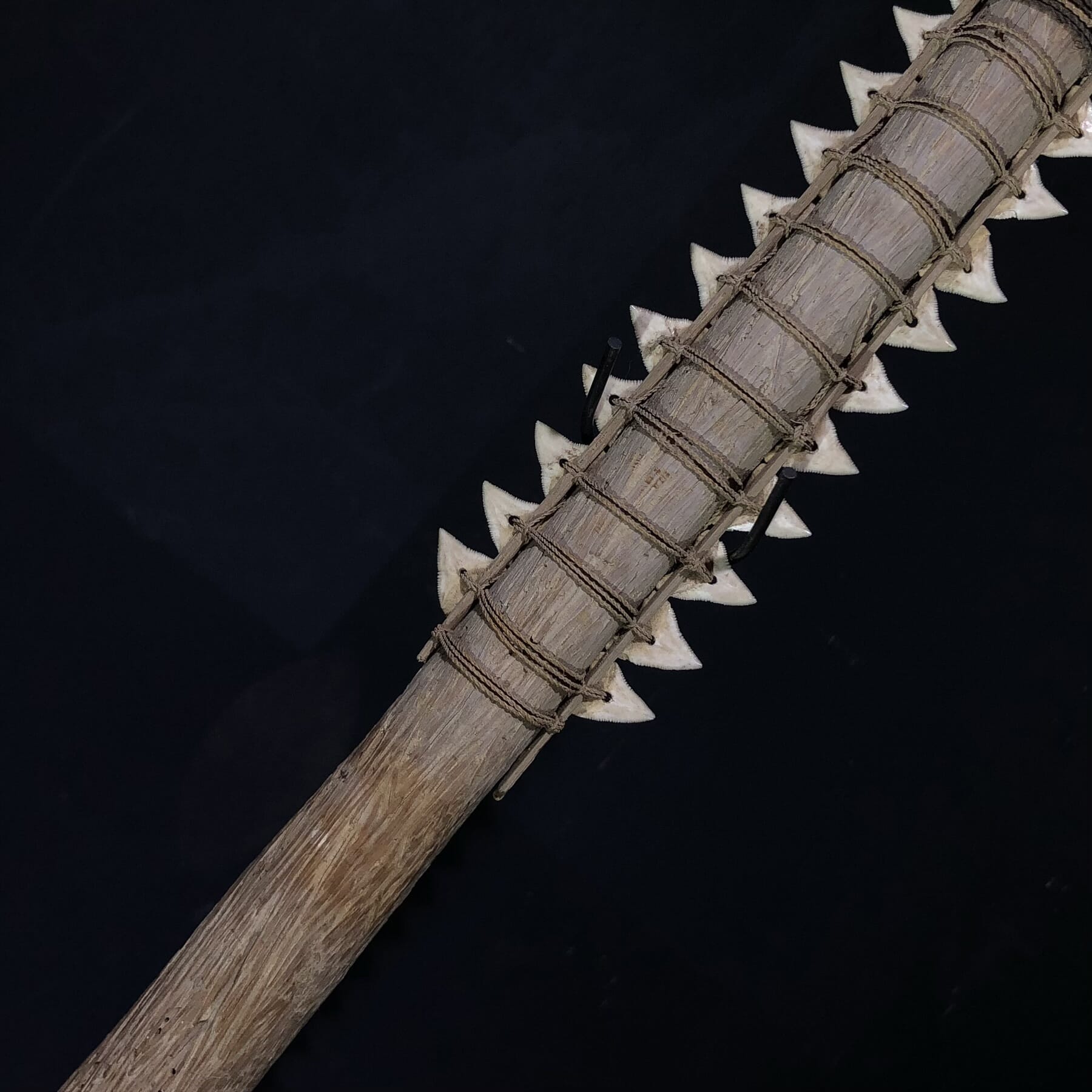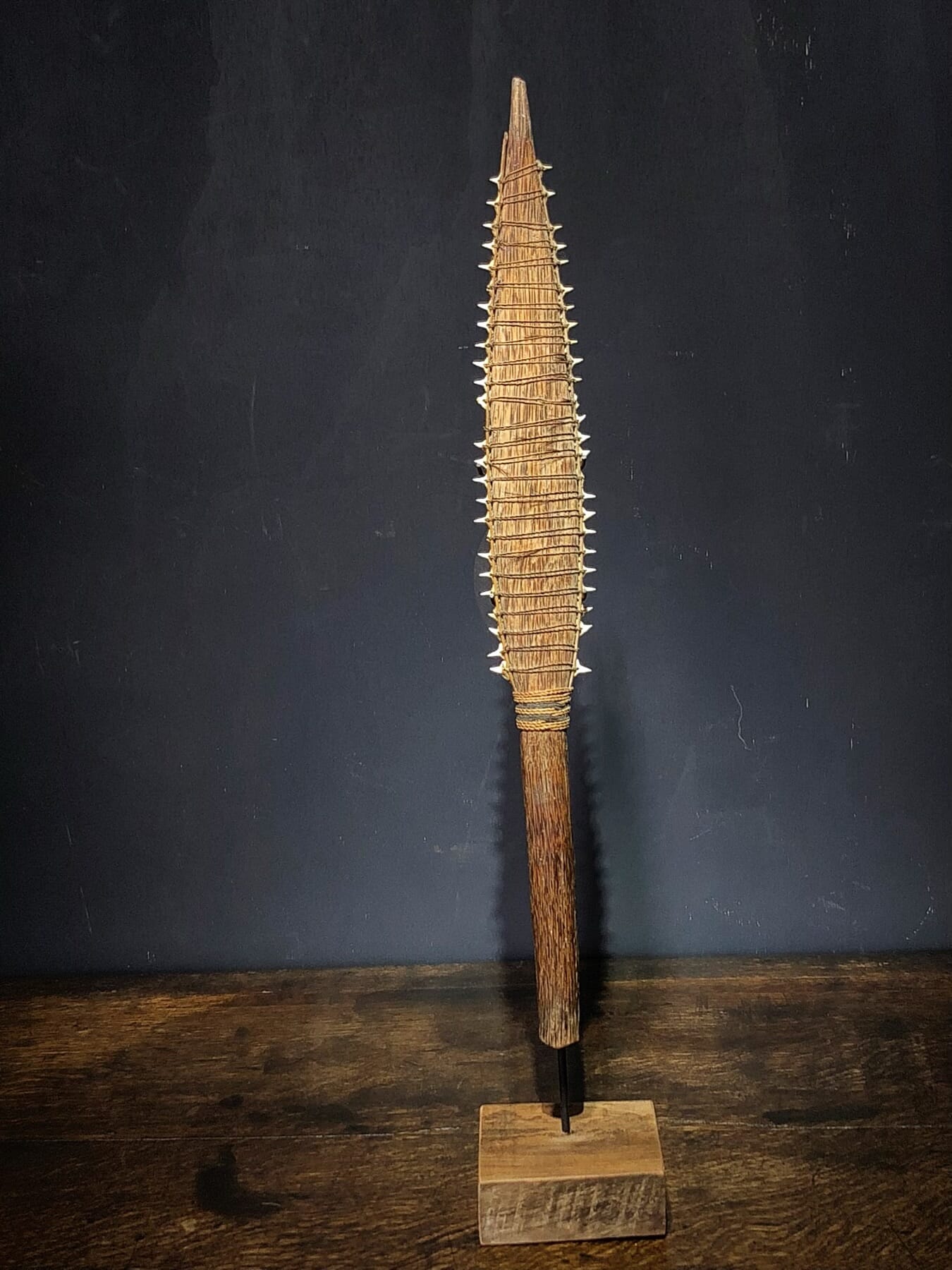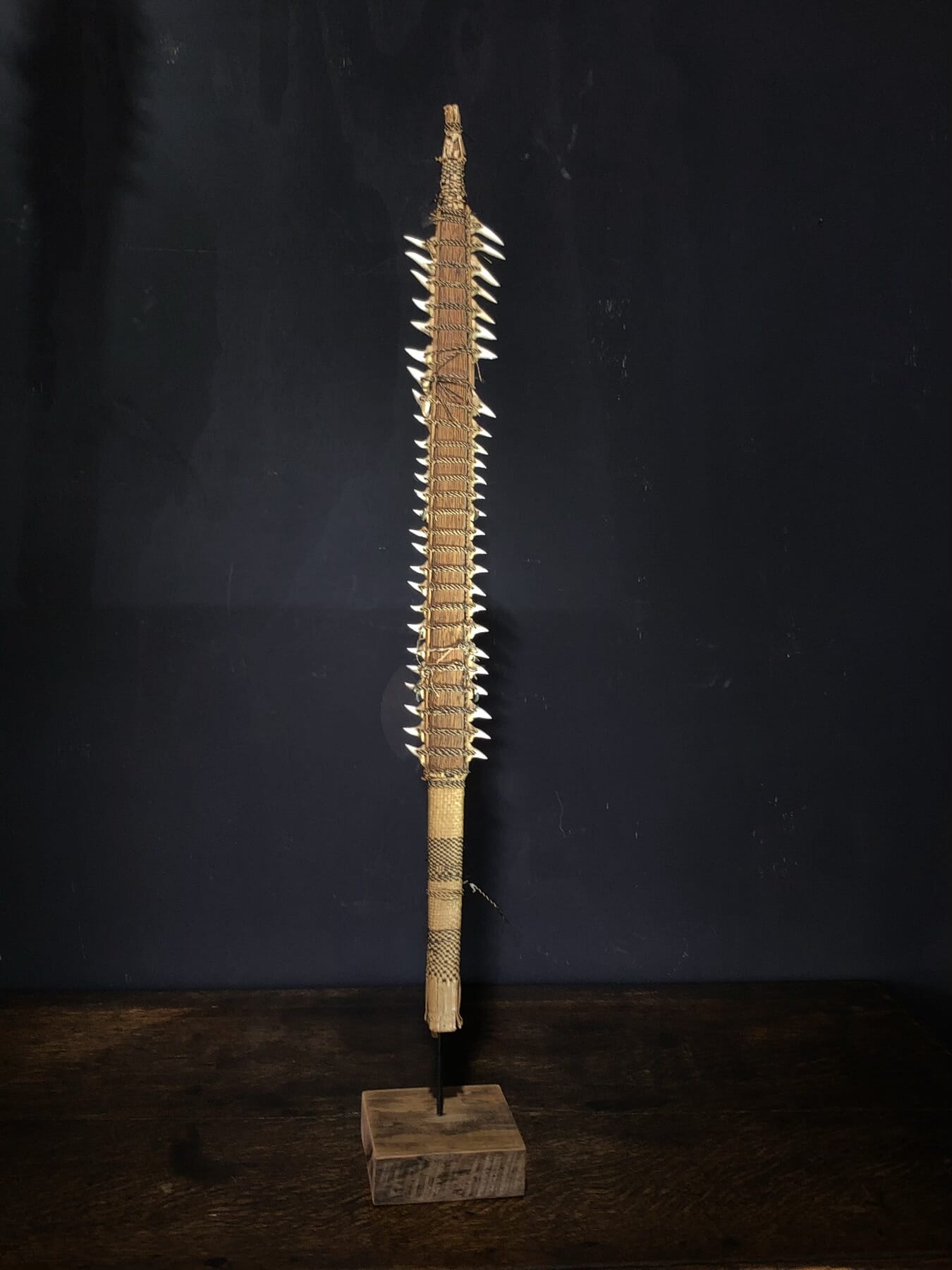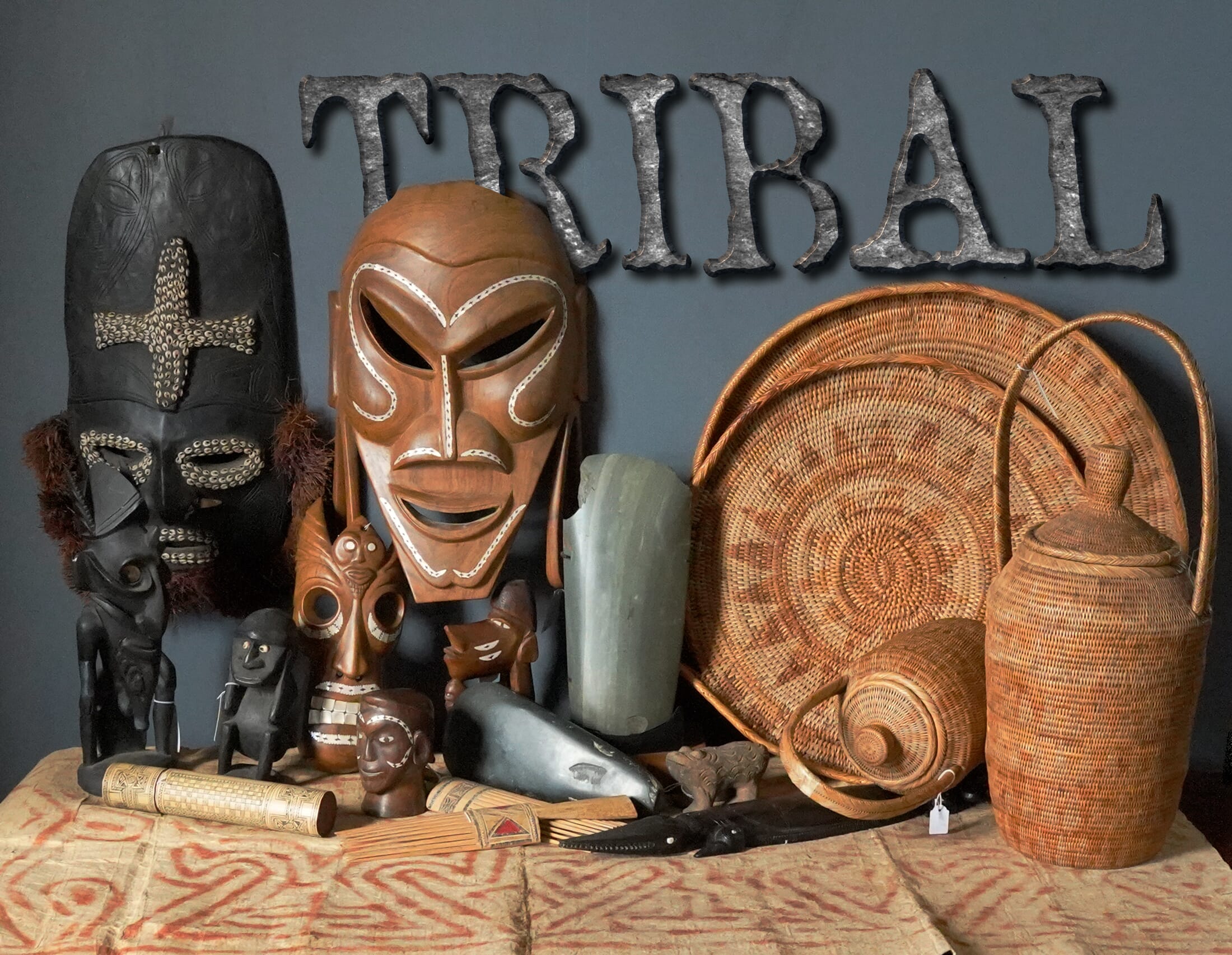
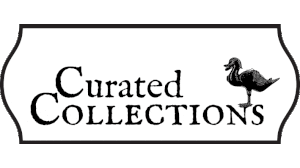
An exotic collection of ‘Tribal’ has just been launched on Moorabool.com – from Australian Aboriginal, to our closest neighbour, Papua New Guinea, and far beyond to the Pacific nations and African cultures, there’s quite a number of interesting ‘tribal’ items to browse.
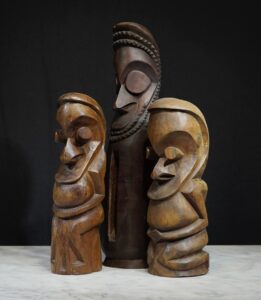
Tribal art is important, as while the West became more sophisticated, it remained the same – simple forms, compelling story-telling through highly stylised illustrations in carving and paint.
For this reason, the ‘Modernists’, those artists who dragged the Western World into the modern aesthetic, sought out primitive art for its honest truth and pure, basic forms.
Matisse, Gauguin, and Picasso all collected, and were influenced by art & objects from Africa, South America, and the Pacific. In the 19th century, it had been collected as ‘curios’: in the early 20th century, it was seen as an important aspect of the human art-scape, where tribal people had created pure forms unencumbered by the baggage of the Classical (Greek & Roman) world.
Today, this theme is still very much alive – but it has transformed to something new, with modern artists from the First Nations of a multitude of countries now exploring their own heritage, and merging it with the 21st century.
It certainly makes the world a much more graphically interesting – and colourful – place!
Moorabool’s Tribal
Australia is a terrific source for tribal art. When Europeans first came, they were eager to explore the culture that was already here. Collections were formed – many pieces were shipped overseas – even as the catastrophical encroachment of Western culture destroyed the peoples who had created them. The misfortune of colonisation cannot be overstated- but looking back, it was the Europeans who were fascinated by the Aboriginal People who preserved not only the languages in some areas, but also no end of artefacts which they gathered for their collections. Today, these items are often the only surviving link to long-lost Koori culture that goes back tens of thousands of years.
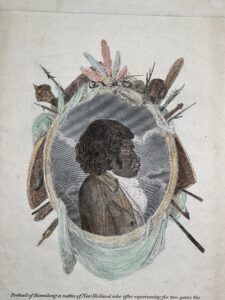
Elsewhere, the travelling Westerners collected also, and often settled in Australia. As the main British presence in the region, Sydney and Melbourne were the access point for the governing of areas such as Fiji and Papua New Guinea. During WWII, this became particularly important as troops moved into the islands north and east of Australia to deflect the planned Japanese take-over. The soldiers on these expeditions often became very involved in the local situations, and numerous examples of soldiers stationed in New Guinea staying on after the war for decades occur: one of the sources for our present collection was a photographer in WWII for the RAAF, and stayed on in a government role, marrying a PNG local and living there for the next 30 years.
Captain Cook
These prints are dramatic records of the British exploration of the Pacific in the 18th century – ‘CNN reporting live from the South Pacific’. They were published by numerous firms in London, and later in France, for many decades, in various sizes.
-
 Cook’s Voyages print ‘ POULAHO, KING of the FRIENDLY ISLANDS, drinking KAVA’ (Tonga) c. 1785$265.00 AUD
Cook’s Voyages print ‘ POULAHO, KING of the FRIENDLY ISLANDS, drinking KAVA’ (Tonga) c. 1785$265.00 AUD -
 Cook’s Voyages original mounted print- ‘ Portrait of POULAHO, KING of the FRIENDLY ISLANDS’, c. 1785$245.00 AUD
Cook’s Voyages original mounted print- ‘ Portrait of POULAHO, KING of the FRIENDLY ISLANDS’, c. 1785$245.00 AUD -
 Cook’s Voyages original mounted print- ‘View of RESOLUTION BAY in the MARQUESAS.’ C,1785
Cook’s Voyages original mounted print- ‘View of RESOLUTION BAY in the MARQUESAS.’ C,1785 -
 Cook’s Voyages original mounted print- ‘A VIEW in the ISLAND of TANNA.’$245.00 AUD
Cook’s Voyages original mounted print- ‘A VIEW in the ISLAND of TANNA.’$245.00 AUD -
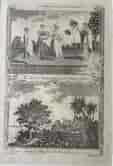 Cook’s Voyages original mounted print- c. 1785 ‘ The Mode of Dancing in the island of Mietea’
Cook’s Voyages original mounted print- c. 1785 ‘ The Mode of Dancing in the island of Mietea’ -
 Cook’s Voyages original mounted print- ‘ A New Zealand warrior defying his Enemies’ C.1785
Cook’s Voyages original mounted print- ‘ A New Zealand warrior defying his Enemies’ C.1785 -
 Cook’s Voyages original mounted print- ‘CHART of the FRIENDLY ISLANDS’ (Tonga) c.1785$295.00 AUD
Cook’s Voyages original mounted print- ‘CHART of the FRIENDLY ISLANDS’ (Tonga) c.1785$295.00 AUD -
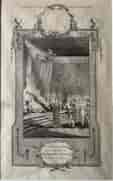 Cook’s Voyages INDIA- ‘Vasquez de Gama introduced to the ZAMORIN (or KING) at Calicut in India’, 1784$125.00 AUD
Cook’s Voyages INDIA- ‘Vasquez de Gama introduced to the ZAMORIN (or KING) at Calicut in India’, 1784$125.00 AUD -
 Mounted print- ‘Portrait of OHEDIDEE, a young man of BOLABOLA’$340.00 AUD
Mounted print- ‘Portrait of OHEDIDEE, a young man of BOLABOLA’$340.00 AUD -
 Cook’s Voyages original mounted print- ‘ A MAN of Sta CHRISTINA, A WOMAN of Sta CHRISTINA’ c. 1785
Cook’s Voyages original mounted print- ‘ A MAN of Sta CHRISTINA, A WOMAN of Sta CHRISTINA’ c. 1785 -
 Cook’s Voyages original print- ‘BOATS of the FRIENDLY ISLES’ (Tonga) c. 1785$285.00 AUD
Cook’s Voyages original print- ‘BOATS of the FRIENDLY ISLES’ (Tonga) c. 1785$285.00 AUD -
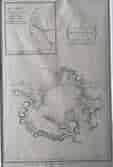 Cook’s Voyages original mounted print-‘PLAN of the BAY of AWTSKA on the East Coast OF KAMTSCHATKA’ C.1785
Cook’s Voyages original mounted print-‘PLAN of the BAY of AWTSKA on the East Coast OF KAMTSCHATKA’ C.1785 -
 Cook’s Voyages original mounted print- ‘ Views on the Coaft of ASIA’ C.1785
Cook’s Voyages original mounted print- ‘ Views on the Coaft of ASIA’ C.1785 -
 Mounted print- ‘Three views of the ADMIRALITY ISLES’
Mounted print- ‘Three views of the ADMIRALITY ISLES’ -
 Mounted print- ‘OTOO. KING of OTAHEITE, TYNAI-MAI, a principal LADY of OTAHEITE’
Mounted print- ‘OTOO. KING of OTAHEITE, TYNAI-MAI, a principal LADY of OTAHEITE’ -
 Cook’s Voyages original mounted print- ‘A WOMAN of EASTER ISLAND, A MAN of EASTER ISLAND’
Cook’s Voyages original mounted print- ‘A WOMAN of EASTER ISLAND, A MAN of EASTER ISLAND’ -
 Mounted print ‘Views on the coaft of Asia’
Mounted print ‘Views on the coaft of Asia’ -
 World Map, from Malham’s Naval Gazetteer, showing Botany Bay, 1795$780.00 AUD
World Map, from Malham’s Naval Gazetteer, showing Botany Bay, 1795$780.00 AUD -
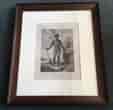 Framed Cook’s Voyages engraving – ‘Man of the Admiralty Isles’ circa 1785Sold
Framed Cook’s Voyages engraving – ‘Man of the Admiralty Isles’ circa 1785Sold -
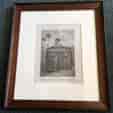 Framed Cook’s Voyages engraving – ‘Woman of Tahiti’ circa 1785$345.00 AUD
Framed Cook’s Voyages engraving – ‘Woman of Tahiti’ circa 1785$345.00 AUD -
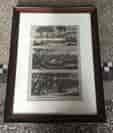 Cook’s Voyages print – 3 views, Mr Banks, Terra del Fuego, c.1785$245.00 AUD
Cook’s Voyages print – 3 views, Mr Banks, Terra del Fuego, c.1785$245.00 AUD
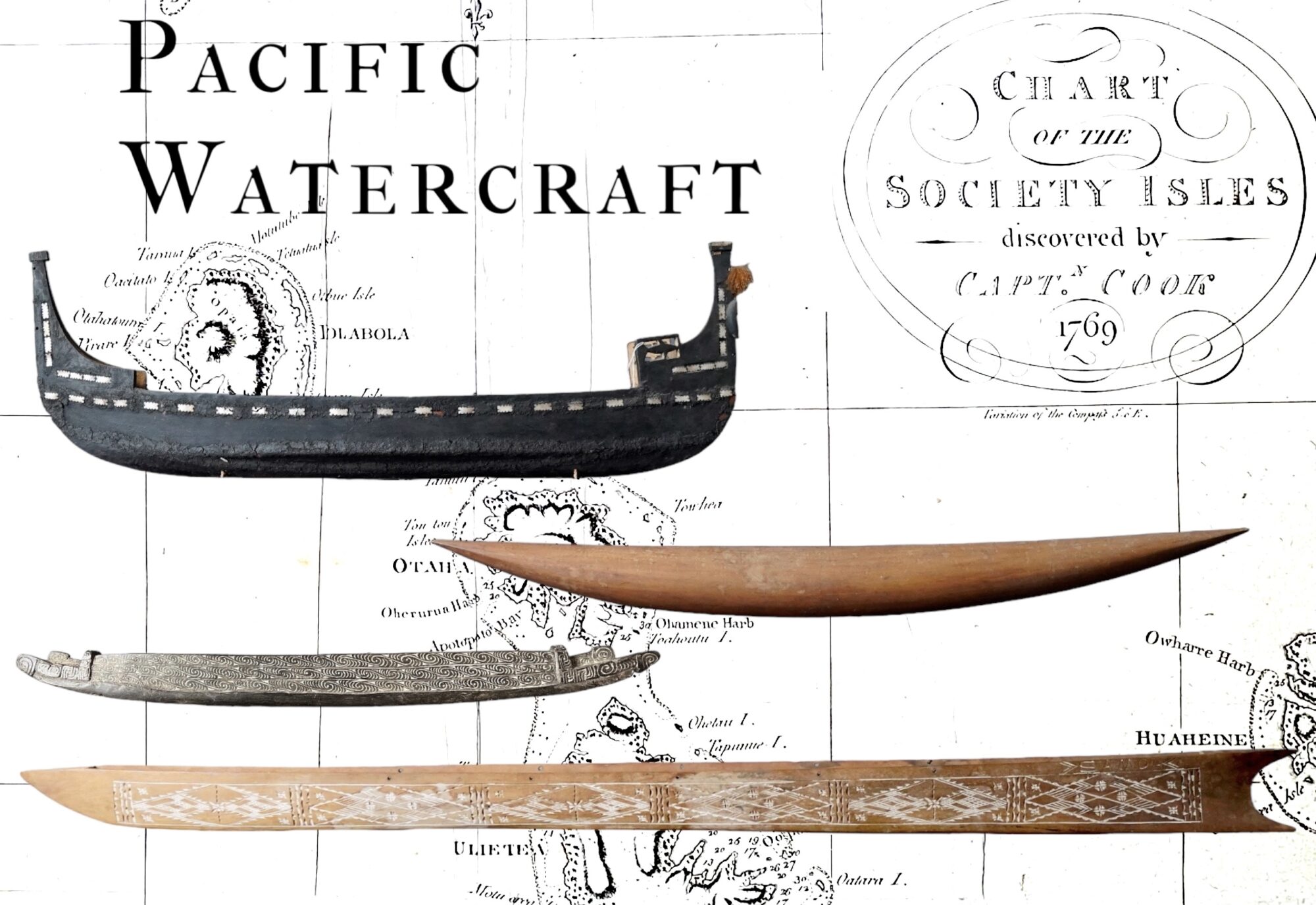
-
 Samoan large model va’a canoe, 1.4m long, collected mid-20th c.$545.00 AUD
Samoan large model va’a canoe, 1.4m long, collected mid-20th c.$545.00 AUD -
 Large Solomon Islands ‘Tomako’ War Canoe model, pearl inlay, mid 20th c.$645.00 AUD
Large Solomon Islands ‘Tomako’ War Canoe model, pearl inlay, mid 20th c.$645.00 AUD -
 Solomon Islands Trobiand carved model canoe, lime details, mid 20th c.$565.00 AUD
Solomon Islands Trobiand carved model canoe, lime details, mid 20th c.$565.00 AUD -
 Trobiand Islands – Massim – canoe board, figure & scrolls, red + white, earlier 20th c.$780.00 AUD
Trobiand Islands – Massim – canoe board, figure & scrolls, red + white, earlier 20th c.$780.00 AUD -
 Pacific Islander outrigger model from a canoe, pos. Hawaii, mid 20th c.$265.00 AUD
Pacific Islander outrigger model from a canoe, pos. Hawaii, mid 20th c.$265.00 AUD
Australian
Australian Aboriginal culture, or as it is now popularly called ‘First Nation’, is the oldest continual culture on the planet. Early European contact was dismissive of their achievements, but we now see just how impressive it is for a culture to survive that period of time in an environment Europeans could not survive in for long.
We do see a large amount of Australian Aboriginal artifacts at Moorabool – the largest being the ‘woomera’ shown below. This is a prime example of their superior survival skills and technical innovation: a woomera is a spear-thrower, basically a long leaver-extension for a hunting spear. When used to launch a spear, it resulted in an incredible 60% extra force and massive increase in distance. This particular example, at 2.66 meters, is the longest we have seen, and is an original usable piece made without European tools or materials.
Papua New Guinea
-
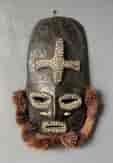 Papua New Guinea mask, shells & tusks, 20th century$395.00 AUD
Papua New Guinea mask, shells & tusks, 20th century$395.00 AUD -
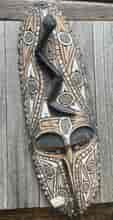 PNG carved wood mask, snake totem + colours, 20th c.$295.00 AUD
PNG carved wood mask, snake totem + colours, 20th c.$295.00 AUD -
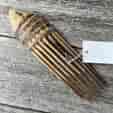 PNG comb, pokerwork geometric patterns, 20th c.$35.00 AUD
PNG comb, pokerwork geometric patterns, 20th c.$35.00 AUD -
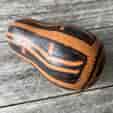 PNG gourd, burnt design, 20th c.$25.00 AUD
PNG gourd, burnt design, 20th c.$25.00 AUD -
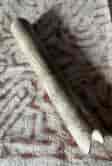 PNG incised lime container$35.00 AUD
PNG incised lime container$35.00 AUD -
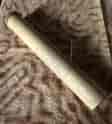 PNG incised cane container, frogs, mid 20th c.$55.00 AUD
PNG incised cane container, frogs, mid 20th c.$55.00 AUD -
 PNG gourd container, woven cane cap, Solomon Islands, 20th c.$35.00 AUD
PNG gourd container, woven cane cap, Solomon Islands, 20th c.$35.00 AUD -
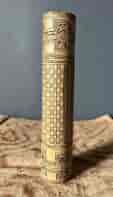 PNG incised cane lime container, chequerboard pattern, 20th c.$55.00 AUD
PNG incised cane lime container, chequerboard pattern, 20th c.$55.00 AUD -
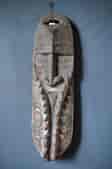 PNG carved wood mask, original pigments, earlier 20th century$680.00 AUD
PNG carved wood mask, original pigments, earlier 20th century$680.00 AUD -
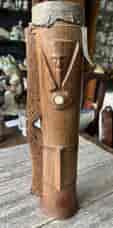 PNG model drum, Trobian Islands, faces & pearlshell, 20th c.$145.00 AUD
PNG model drum, Trobian Islands, faces & pearlshell, 20th c.$145.00 AUD -
 PNG tapa cloth beater, 20th c.$75.00 AUD
PNG tapa cloth beater, 20th c.$75.00 AUD -
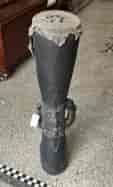 Large Trobiand Islands drum, lizard skin top, lime decorated, 20th c.$465.00 AUD
Large Trobiand Islands drum, lizard skin top, lime decorated, 20th c.$465.00 AUD -
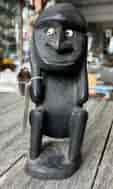 Solomon Islands carved wood figure, collected 1950’s-60’sSold
Solomon Islands carved wood figure, collected 1950’s-60’sSold -
 PNG arrowhead mount, carved & coloured, 20th c.$45.00 AUD
PNG arrowhead mount, carved & coloured, 20th c.$45.00 AUD -
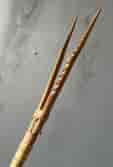 PNG arrow, double barbed head, 20th c.$140.00 AUD
PNG arrow, double barbed head, 20th c.$140.00 AUD -
 PNG arrow, carved dark wood barbed head, mid 20th c.$140.00 AUD
PNG arrow, carved dark wood barbed head, mid 20th c.$140.00 AUD -
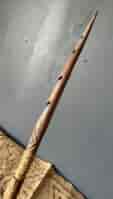 PNG arrow, carved head, collected mid-20th c.$140.00 AUD
PNG arrow, carved head, collected mid-20th c.$140.00 AUD -
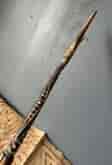 PNG arrow, carved & painted shaft, collected mid-20th c.$165.00 AUD
PNG arrow, carved & painted shaft, collected mid-20th c.$165.00 AUD -
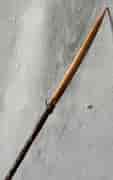 PNG arrow, broad cane head, collected mid-20th century$140.00 AUD
PNG arrow, broad cane head, collected mid-20th century$140.00 AUD -
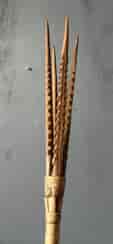 PNG arrow, 4-prong barbed head, collected mid-20th c.$185.00 AUD
PNG arrow, 4-prong barbed head, collected mid-20th c.$185.00 AUD -
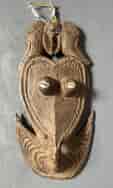 PNG face-form bag hook, Sepik River, 20th century$265.00 AUD
PNG face-form bag hook, Sepik River, 20th century$265.00 AUD -
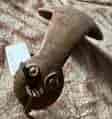 PNG ‘snake’ coconut spoon, nice carved details, 20th c.$125.00 AUD
PNG ‘snake’ coconut spoon, nice carved details, 20th c.$125.00 AUD -
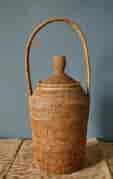 PNG Baka Basket with overhead handle + lid, 20th c.Sold
PNG Baka Basket with overhead handle + lid, 20th c.Sold -
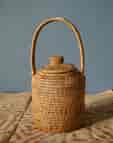 PNG Baka Basket with overhead handle, mid-20th c.Sold
PNG Baka Basket with overhead handle, mid-20th c.Sold -
 Papua New Guinea ‘Baka’ basketweave tray, sun design, 20th c.$195.00 AUD
Papua New Guinea ‘Baka’ basketweave tray, sun design, 20th c.$195.00 AUD -
 PNG basket weave tray with Sun design & handles, 20th c.$175.00 AUD
PNG basket weave tray with Sun design & handles, 20th c.$175.00 AUD -
 New Guinea headmans stool, Eastern Sepik, collected 1970’s$595.00 AUD
New Guinea headmans stool, Eastern Sepik, collected 1970’s$595.00 AUD -
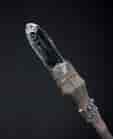 Bismarck Archipelago, Admirality Islands, obsidian tip spear with ornate shaft, 19th-earlier 20th centurySold
Bismarck Archipelago, Admirality Islands, obsidian tip spear with ornate shaft, 19th-earlier 20th centurySold -
 Pair of Fijian Ula Tavatava wooden throwing clubs, 20th c.$185.00 AUD
Pair of Fijian Ula Tavatava wooden throwing clubs, 20th c.$185.00 AUD -
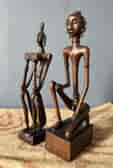 Ambon Island Maluku carved ‘skinny’ ancestor figure pair, collected Amboina 1950’s$395.00 AUD
Ambon Island Maluku carved ‘skinny’ ancestor figure pair, collected Amboina 1950’s$395.00 AUD
Trobiand Islands
The Trobiand Islands are part of the Solomon Island group, to the north-east of Papua New Guinea. They were the origin of a remarkable style of tribal art, with very stylised, elegant scrolling forms, often in shallow carved format filled with lime pigment to make them stand out.
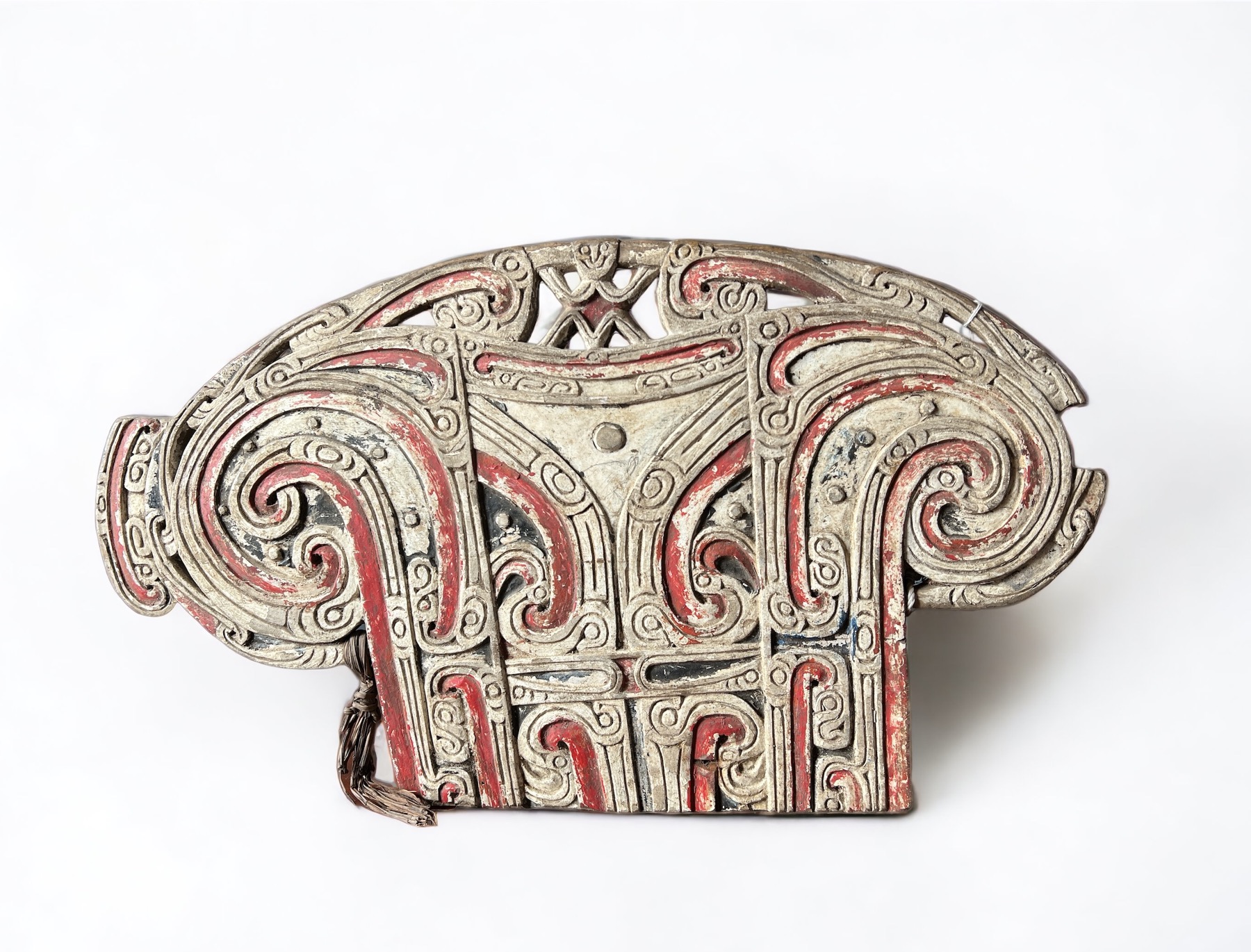
A Trobian Islands Canoe Board
Impressive carved & painted canoe board, with symmetric-carved columns & scrolls, pierced & layered for dramatic effect, incorporating a small seated figure at the very top, the whole picked out in traditional white & red colours.
Solomon Islands/ Trobiand Islands – Milne Bay
earlier 20th century
Provenance: from a Melbourne, Australia, collection
The same iconography can be seen on an example in the British Museum –
https://www.britishmuseum.org/collection/object/E_Oc-M-340
These canoe boards were used by the communities of the Solomon Islands, in particular those of the Trobiand Islands, where the vast Milne Bay region supported a flourishing trade network connected by large trading canoes. When voyages of trade were made, they were festival occasions, and both the crew and the canoe was ‘dressed to impress’. These extremely elaborate boards (also known as ‘splashboards’) were placed at the front & back of the dugout canoes, closing off the ends & helping keep water out. They are called ‘migila waga’, roughly translating as ‘the face of the canoe’.
An excellent eyewitness image can be found in the work of the Royal Geographical Society fellow Ellis Silas. He travelled through the region in the 1920’s and sketched numerous examples of the elaborate canoe decorations, now in the British Museum collection.
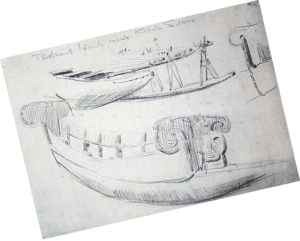
The carvings are all meaningful: the seated figure in the centre of this board in particular appears consistently. This is the most important aspect of the piece: known as the bwalai, it must be ‘spelled’ with the right magic by the canoe owner prior to a journey. If the canoe capsizes, the bwalai comes to the rescue by summoning a giant fish that will take the sailors safely ashore. If the magic used is not correct or if the canoe owner forgets to utter the spell, the bwalai will turn into sharks and sea monsters and devour the crew!
The trade ritual was known as the ‘Kula‘, and was different from the commercial trade for goods. The items exchanged were ‘non-use’ decorations, solely to enhance one’s social status. The act of giving was a display of greatness, but given with a show of exaggerated modesty; the goods also had to be passed on within a short period of time, and as they passed through the circle of participants, it is known as the ‘Kula Ring’. It incorporated a large number of wide-spread island communities to the north and east of, including the Massim of the Trobiand Islands. Goods traded were pearlshell plaques, armbands, necklaces, and other distinct items.
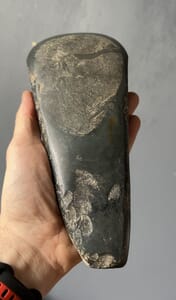
The large polished adze heads are another aspect of Kula trade. These are extremely robust, and the dense mottled green stone must have taken a huge effort to polish and shape. They were highly treasured items of wealth & status, and while we have dated ours to ’19th century’, it is quite plausible that they are many centuries older, passed from generation to generation. The example with the chips shows an amount of wear to the chip-sites, which can only happen through lots of handling – suggesting a very great age.
-
 PNG model drum, Trobian Islands, faces & pearlshell, 20th c.$145.00 AUD
PNG model drum, Trobian Islands, faces & pearlshell, 20th c.$145.00 AUD -
 Large Trobiand Islands drum, lizard skin top, lime decorated, 20th c.$465.00 AUD
Large Trobiand Islands drum, lizard skin top, lime decorated, 20th c.$465.00 AUD -
 Solomon Islands carved wood figure, collected 1950’s-60’sSold
Solomon Islands carved wood figure, collected 1950’s-60’sSold -
 Large Solomon Islands ‘Tomako’ War Canoe model, pearl inlay, mid 20th c.$645.00 AUD
Large Solomon Islands ‘Tomako’ War Canoe model, pearl inlay, mid 20th c.$645.00 AUD -
 Solomon Islands Trobiand carved model canoe, lime details, mid 20th c.$565.00 AUD
Solomon Islands Trobiand carved model canoe, lime details, mid 20th c.$565.00 AUD -
 Trobiand Islands – Massim – canoe board, figure & scrolls, red + white, earlier 20th c.$780.00 AUD
Trobiand Islands – Massim – canoe board, figure & scrolls, red + white, earlier 20th c.$780.00 AUD -
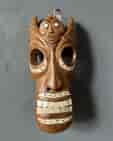 Solomon Islands mask, Betikama type carving with inlaid pearlshell, mid – late 20th c.$195.00 AUD
Solomon Islands mask, Betikama type carving with inlaid pearlshell, mid – late 20th c.$195.00 AUD -
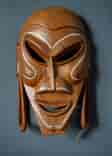 Solomon Islands mask, Betikama type carving with inlaid pearlshell, mid – late 20th c.$450.00 AUD
Solomon Islands mask, Betikama type carving with inlaid pearlshell, mid – late 20th c.$450.00 AUD -
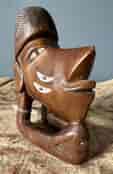 Solomon Islands ‘nguzu nguzu’ head model, canoe prow, inlaid pearlshell, mid – late 20th c.$285.00 AUD
Solomon Islands ‘nguzu nguzu’ head model, canoe prow, inlaid pearlshell, mid – late 20th c.$285.00 AUD -
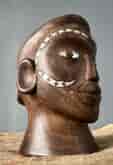 Solomon Islands head, good carving with inlaid pearlshell, mid – late 20th c.$295.00 AUD
Solomon Islands head, good carving with inlaid pearlshell, mid – late 20th c.$295.00 AUD -
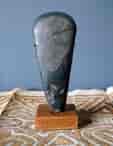 Massim ‘Wealth Stone’ Axe Blade, Milne Bay PNG, 19th c. or earlierSold
Massim ‘Wealth Stone’ Axe Blade, Milne Bay PNG, 19th c. or earlierSold -
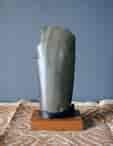 Massim ‘Wealth Stone’ Axe Blade, Milne Bay PNG, 19th c. or earlierSold
Massim ‘Wealth Stone’ Axe Blade, Milne Bay PNG, 19th c. or earlierSold
Solomon Islands War Canoe & Nguzu Nguzu
This large model of a War Canoe from the Solomon Islands is quite dramatic.
When the Royals Kate & William visited in 2014, they were treated to a ride in one, as shown below.
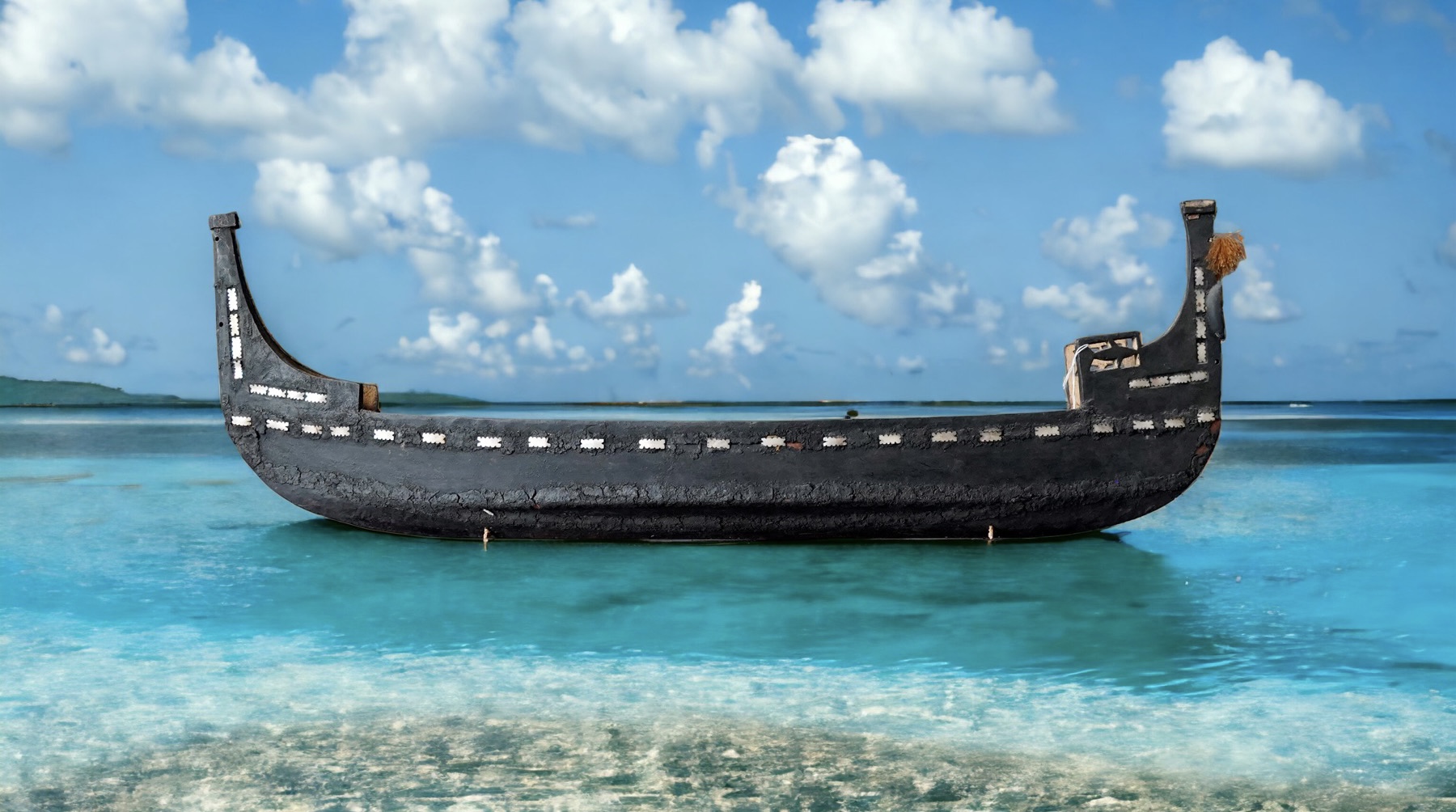
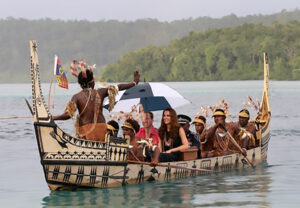
Pacific Islands
Tapa Cloth
-
 PNG tapa cloth beater, 20th c.$75.00 AUD
PNG tapa cloth beater, 20th c.$75.00 AUD -
 Tonga ‘ngatu’ Tapa cloth with Seal of Tonga, Guide to Landmarks, Locations of Oil Discoveries , 1960’s$395.00 AUD
Tonga ‘ngatu’ Tapa cloth with Seal of Tonga, Guide to Landmarks, Locations of Oil Discoveries , 1960’s$395.00 AUD -
 Tapa cloth with sinuous design, Oro province PNG, mid-20th century$65.00 AUD
Tapa cloth with sinuous design, Oro province PNG, mid-20th century$65.00 AUD -
 Tapa cloth with sinuous design, Oro province PNG, mid-20th century$265.00 AUD
Tapa cloth with sinuous design, Oro province PNG, mid-20th century$265.00 AUD -
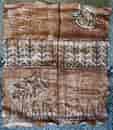 Tonga ‘ngatu’ Tapa cloth with stylised trees, 20th c.$125.00 AUD
Tonga ‘ngatu’ Tapa cloth with stylised trees, 20th c.$125.00 AUD

